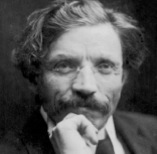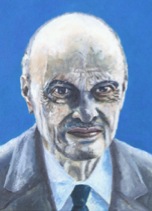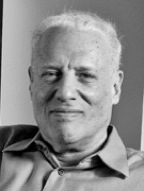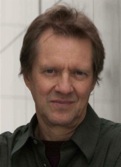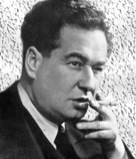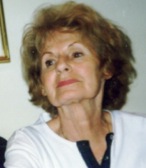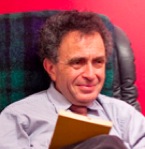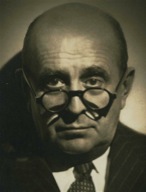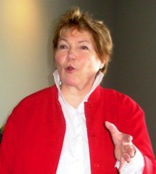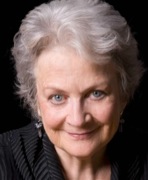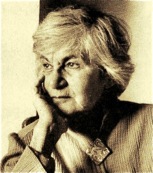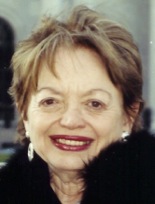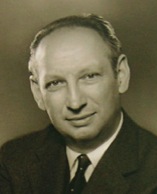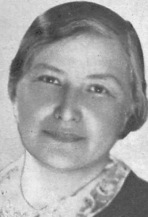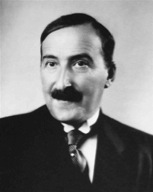Finn Aaserud
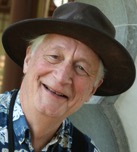
Aaserud spent time writing his thesis at the Niels Bohr Archive (NBA) in Copenhagen, and after he received his PhD in 1984, he was hired by NBA to help prepare Niels Bohr's 100th anniversary exhibit in 1985 at Copenhagen city hall. By the time the exhibit opened, Aaserud had moved to New York to become the first Associate Historian at the Center for History of Physics of the American Institute of Physics (AIP). He successfully applied for grants to conduct a documentation, interview, and research project on American physicists’ involvement in science policy, with particular emphasis on the Jason group of elite academic physicists established in 1959 to advise the Pentagon.
In 1989 Aaserud moved to Copenhagen to become Director of NBA, which he led until his retirement in 2017. As NBA director, Aaserud became General Editor of the Niels Bohr Collected Works. He was solely responsible for volumes 11 and 12, respectively on Niels Bohr’s political involvements and his miscellaneous non-scientific writings. The entire project was completed in 2008. During his long tenure at NBA Aaserud instigated new activities and expanded earlier ones: new archival collections were obtained; selected collections were digitized; oral history interviews were conducted; a series of history of science seminars with talks by prominent researchers was organized; books and articles by NBA staff and by numerous international visiting researchers were published.
Aaserud was widowed in 2014 and remarried in 2018. He has two adult children.
Henry H. Adams
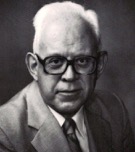
Adams taught at Cornell University from 1945 until 1951 and then joined the US Naval Academy where he was Assistant, Associate, and full Professor from 1951 until 1968. While at the Naval Academy, he became a noted military historian, a member of the International Order of Military Historians. Among his many books on World War II are biographies of Harry Hopkins and Fleet Admiral William Leahy. He co-authored the textbook Sea Power: A Naval History.
In 1968, Adams became chairman of the English department of Illinois State University. In 1973, Adams retired from teaching and with his wife, started a travel agency and began two decades of world travel. In 1978, he helped establish the Academy of Senior Professionals at Eckerd College in St Petersburg, Florida.
Richard Alba
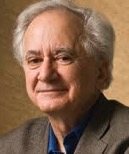
He was a Distinguished Professor at CUNY’s Graduate Center and at SUNY Albany’s Sociology Department where he founded the Center for Social and Demographic Analysis (CSDA). Known for developing assimilation theory to fit the contemporary, multi-racial era of immigration, with studies in America, France and Germany, he was elected to the National Academy of Sciences in 2020. His books include Italian Americans: Into The Twilight of Ethnicity (1985); Ethnic Identity: The Transformation of White America (1990); Remaking the American Mainstream (with Victor Nee, 2003) which won the Thomas & Znaniecki Award of the American Sociological Association and the Eastern Sociological Society’s Mirra Komarovsky Award; Blurring the Color Line: The New Chance for a More Integrated America (2009); and The Great Demographic Illusion: Majority, Minority, and the Expanded American Mainstream (2020), which garnered the Otis Dudley Duncan Award of the American Sociological Association.
Alba was elected Vice President of the American Sociological Association in 2001. In 1997-98 he was President of the Eastern Sociological Society and in 2012-13, President of the Sociological Research Association. His awards include the Distinguished Career Award from the International Migration section of the American Sociological Association, the Merit Award of the Eastern Sociological Society, a John Simon Guggenheim Fellowship, two Fulbright grants, and fellowships from the German Marshall Fund and the Russell Sage Foundation. He has been a fellow at the Radcliffe Institute.
Sholom Aleichem
Sholom Aleichem (1859-1916), a central figure in modern Yiddish literature, was born Sholom Rabinowitz in Voronko, Russia. Often called the “Jewish Mark Twain,” he published more than 40 volumes of work.
His merchant father’s business failed when Sholom was still a child, impoverishing the family. In the 1860s, Sholom attended a traditional cheder. Later, he attended the Russian district school in Pereyaslav, but wrote that the literature of the Haskala, the Jewish Enlightenment movement, was the main source of his education. At 15, he wrote a novel inspired by his reading of Robinson Crusoe and adopted the popular Hebrew/Yiddish greeting meaning “How do you do,” or “Peace be with you” as his pseudonym.
After graduating from high school in 1876, he spent three years tutoring Olga (Golde) Loyev, a girl from a wealthy family. They married, against parental wishes in 1883, and had six children.
Sholom Aleichem was influenced by Haskala author Mendele Mocher Seforim, a founding father of modern Yiddish and modern Hebrew literature. Initially, Aleichem shunned Yiddish until he realized that his work in Hebrew and Russian would be understood only by the intellectual elite. In 1883, he switched to Yiddish. Characters from his short-lived Hebrew period were overshadowed by Tevye the Dairyman, luftmentch Menachem Mendl, and the chatty population of Kasrilevke.
After 1905, when major pogroms spread across Russia, Aleichem settled his family in Geneva, Switzerland and pursued a strenuous international schedule of lectures to supplement his writing income. The family moved to the lower east side of Manhattan in 1914. When he died two years later, his funeral attracted 150,000 mourners, then one of the largest crowds in New York City’s history.
Henri Alleg
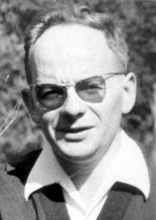
After the 1962 Evian Accords, Alleg returned to France and then to Algeria. He helped rebuild the Alger Républicain but was declared persona non grata after the 1965 military coup by Houari Boumédienne. Alleg moved back to France where he worked as a journalist for L’Humanité until 1980 and wrote several books, including a three-volume history of the Algerian War of Independence and Algerian Memoirs published in 2005. He died at age 91.
Yigal Allon
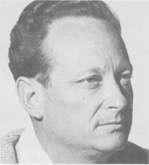
Allon was a founder of Kibbutz Ginosar and commanded a field unit of the Haganah during the 1936-1939 Arab revolt. In 1941 he was one of the founding members of the Palmach, of which he became commander-in-chief in 1945. Allon led several major operations on all three fronts during Israel’s 1948 War of Independence.
After the end of his military career in 1950, Allon entered politics in a left-of-center party. He served in Israel’s parliament, the Knesset, from 1955 until his death. Allon was Minister of Labour (1961-67), Deputy Prime Minister (1967–69) and Deputy Prime Minister and Minister of Education and Culture in Golda Meir’s government (1969-74). He was Minister of Foreign Affairs in Yitzhak Rabin’s government (1974-77).
Luis W. Alvarez
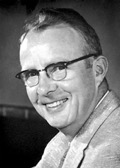
While working at MIT’s Radiation Laboratory in 1940-43, Alvarez developed what is now the ground-controlled approach (GCA) system for aircraft. He also worked at the Metallurgical Laboratory of the University of Chicago in 1943-44, and at Los Alamos on the Manhattan project in 1944-45. Alvarez won the Nobel prize in 1968 for his work developing liquid hydrogen bubble chambers that allowed scientists to take millions of photographs of particle interactions, to develop complex computer systems to measure and analyze these interactions, and to discover entire families of new particles.
Alvarez was involved in a project to “X-ray” Egyptian pyramids to search for unknown chambers. With his son, geologist Walter Alvarez, he developed the Alvarez hypothesis, which proposes that an asteroid impact caused the extinction of the dinosaurs.
Henry Harley “Hap” Arnold
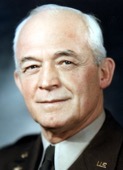
In 1912 Arnold went to Fort Riley, Kansas, as an aerial observer of Field Artillery firing. He then worked in the Office of the Chief Signal Officer in Washington. As a captain, he was later assigned to the new flying school in San Diego. In 1917 Arnold organized an air service in Panama, which he commanded until May 1917. As the US entered World War I, he was called back to Washington, promoted to major and then to full colonel in 1917, in charge of Information Service in the Aviation Division of the Signal Corps. Arnold became assistant executive officer and in 1918 assistant director of the newly formed Office of Military Aeronautics. He went to France in November 1918 at war’s end on an inspection tour of aviation activities. In 1919 he became supervisor of the Air Service at Coronado, California, and air officer of the 9th Corps Area at the Presidio in San Francisco.
In 1920 Arnold went back to captain’s grade, but soon was promoted to major, where he remained until 1931. In 1922-24 he was commanding officer of Rockwell Field, California. He graduated from the Army Industrial College in 1925 and became chief of the Information Division in the Office of the Chief of the Air Corps. He went next to Fort Riley, Kansas, where he commanded Air Corps troops at Marshall Field until 1928. In June 1929 he completed the Command and General Staff School at Fort Leavenworth and was assigned as commanding officer of the air depot at Fairfield, Ohio.
Arnold was promoted to lieutenant colonel in 1931 as commanding officer of March Field, California. In 1934 he organized and led a flight of 10 Martin B-10 bombers in a round-trip record flight from Washington, DC to Fairbanks, Alaska, for which he received his second Mackay Trophy. In 1935 Arnold was jumped two grades to brigadier general and put in command of the 1st Wing of General Headquarters Air Force at March Field. He was gaining a reputation as a bomber man, having encouraged development of the B-17 Flying Fortress and B-24 Liberator four-engine planes, and the precision training of crew members. In January 1936 he became assistant to the chief of the Air Corps in Washington and on September 29, 1938 was promoted to major general and appointed chief of the Air Corps.
His title became chief of the Army Air Forces on June 30, 1941, and that December he got a third star. When the War Department General Staff was organized in March 1942 Arnold became commanding general of Army Air Forces, directing during World War II global US air activities against Germany and Japan, growing the US air arm from 22,000 officers and men to 2,500,000 and from 3,900 planes to 75,000. He was a member of the US Joint Chiefs of Staff and of the Combined Chiefs of Staff with the British. In March 1943 he received his fourth star. He suffered a heart attack in 1945, attributed by his doctors to overwork. He retired in 1946, after earning multiple US and foreign decorations including three Distinguished Service crosses, the Distinguished Flying Cross, and decorations from Morocco, Brazil, Yugoslavia, Peru, Mexico, France and Great Britain. In 1949, Congress changed the designation of Arnold’s final rank to five-star general of the Air Force, the first such commission ever granted.
Lucie Aubrac
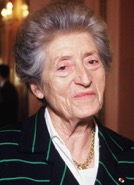
After World War II, Lucie worked for Algeria’s independence, spoke frequently about her wartime experiences and was made Grand officier de la Légion d'honneur, France’s highest honor. Two movies, Lucie Aubrac by Claude Berri and Boulevard of Swallows by Josée Yanne, are based in part on Lucie Aubrac’s life. Jean-Pierre Melville’s Army of Shadows is another movie about the French résistance.
Virginia Axline
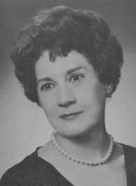
In 1945, Rogers opened the University of Chicago Counseling Center and Axline served as one of his research associates, developing her own approach to child counseling, grounded in the person-centered principles Rogers set forth for working with adults. Axline’s approach came to be known as Nondirective Play Therapy and later, Child-Centered Play Therapy. In 1947, Axline published Play Therapy in which she explained her groundbreaking theory of child psychotherapy. In 1950, Axline completed her Doctor of Education degree at Columbia University Teachers College, where she would teach for several years before returning to Ohio.
In 1964, Axline published Dibs: In Search of Self, which became popular among professionals and parents alike. While the story of a young boy breaking out of his self-imposed silence gained recognition, Axline slipped into a quieter life for herself. She continued both her teaching career at Ohio State University and her private practice, but declined opportunities to be in the spotlight. Virginia Axline was buried next to her mother, father, and older sister.
Odile Ayral-Clause
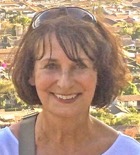
Aïda Aznavour-Garvarentz
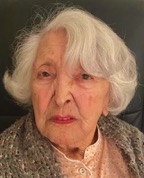
Pendant l’occupation nazie, en liaison avec le groupe de résistance Missak Manouchian, la famille d’Aïda abrita dans leur appartement parisien des Arméniens, des Juifs et d’autres individus recherchés par les Allemands. En 2017, Aïda et Charles reçurent en Israël du Président Reuven Rivlin le prix Raoul Wallenberg pour leurs activités pendant la Seconde guerre mondiale.
Aïda se lança dans une carrière de chanteuse à la fin des années 50 mais y renonça après avoir épousé en 1965 Georges Garvarentz (1932-1993), fils du célèbre poète et musicien arménien, Kevork Garvarentz, auteur de l’hymne national d’Arménie. Georges composa la musique pour de nombreuses chansons de Charles Aznavour, parmi lesquelles Prends garde à toi (1956), Et pourtant (1962), Paris au mois d’août (1966), et pour des films à commencer par Un taxi pour Tobrouk en 1960.
Leo Baeck
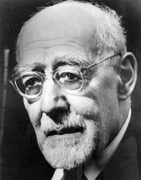
During World War I, Baeck was a chaplain in the German Army. In 1918 he returned to Berlin to work at the Prussian Culture Ministry as an expert in Hebrew. In addition to his position as a rabbi and his lecturing at the Hochschule, Baeck also became President of the Union of German Rabbis in 1922. He was elected President of the German B’nai B’rith Order in 1924 when he also joined the Central-Verein deutscher Staatsbürger jüdischen Glaubens, and the Jewish Agency for Palestine.
In 1933, Baeck was elected president of the Reichsvertretung der deutschen Juden, an umbrella organization of German-Jewish groups founded to advance the interests of German Jewry in the face of Nazi persecution. In spite of several offers of emigration, he refused to leave Germany, even after Jewish businesses and synagogues, including his Fasanenstraße congregation, were burned and looted in November 1938. In 1943, Leo Baeck, along with his family members, was sent to the Theresienstadt concentration camp where he continued to teach, holding lectures on philosophy and religion. He also managed to begin a manuscript that would become Dieses Volk – Jüdische Existenz (This People Israel: The Meaning of Jewish Existence), an interpretation of Jewish history.
After the Russians liberated Theresienstadt in May 1945 — none of his four sisters survived —, Leo Baeck made his way to England and spent much of his time traveling, lecturing, writing and helping found several organizations to assist the remnants of European Jewry. In 1955, a group of émigré German-Jewish intellectuals met in Jerusalem to found an Institute to preserve the history of the German-Jewish culture. They named the Institute in Baeck’s honor and appointed him its first President. Baeck died the following year in London.
Leonard Baker
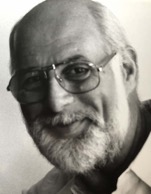
A 1952 graduate of the University of Pittsburgh's School of Arts and Sciences, Baker was a reporter for the St. Louis Globe-Democrat from 1955 to 1956 and for Newsday from 1956 to 1965. He was married to Liva Baker, and they had two children.
Liva Baker
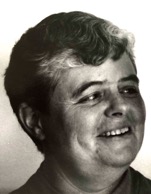
Her first book, a children’s book about world religions, was published in 1967. Baker’s biography of Supreme Court Justice Felix Frankfurter appeared in 1969, followed by a book about the legacy women's colleges in the United States, I'm Radcliffe! Fly Me!: The Seven Sisters and the Failure of Women’s Education in 1976. Her other books on US legal history include Miranda: Crime, Law and Politics (1983), The Justice From Beacon Hill: The Life and Times of Oliver Wendell Holmes (1991) and The Second Battle of New Orleans: The Hundred-Year Struggle to Integrate the Schools (1996). Liva Baker was married to Leonard S. Baker, and they had two children.
Michael Balfour
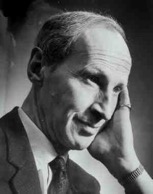
During the World War II, Balfour worked at the Ministry of Information and the Political Intelligence Department of the Foreign Office. In 1944 he joined the Psychological Warfare Division of the Supreme Headquarters Allied Expeditionary Force and after the war he became Director of Public Relations and Information Services, Control Commission, in the British Zone of Allied-occupied Germany. His 1979 book Propaganda in War, 1939-45 is based on his experiences. He also wrote The Kaiser and his Times in 1964.
He returned to the UK in 1947 and served as Chief Information Officer at the Board of Trade until 1964. He was then Professor of European History at the University of East Anglia from 1966 until 1974.
George W. Ball
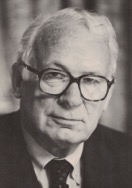
As a founding partner of Cleary, Gottlieb, Steen & Ball, a law firm which represented European institutions, Ball pushed for Britain to join the Common Market. When Governor Stevenson of Illinois ran for President in 1952, Ball joined his campaign as chief of volunteers. In 1960, Ball backed John F. Kennedy who made him Under Secretary of State for Economic Affairs and in November 1961, Under Secretary of State, a position he kept in the Johnson Administration and in which he argued forcefully against US involvement in Vietnam and mediated crises in Cyprus, Pakistan and the Congo. Ball was a member of President Kennedy's inner circle during the 1962 Cuban missile crisis.
He resigned in 1966 to join the investment banking firm of Lehman Brothers Kuhn Loeb in New York, from which he retired in 1982 as senior managing director. While in the private sector, Ball advised several Presidents, including when the Pueblo was captured by North Korea in January 1968. In May 1968, President Johnson named Ball US delegate to the United Nations, a position he resigned after three months.
Joseph Baratz

Baratz was sent abroad as an emissary, to Russia in 1919, the United States in 1921 and Austria in 1934. He became a member of the central committee of the Haganah, a member of the Assembly of Representatives and was a leading figure in the Ha-Po’el ha-Ẓa’ir party and later in Mapai, opening the founding conference of the Histadrut in Haifa in 1920. Baratz served in the British Army during World War II and became chairman of the Israel Soldiers’ Aid Committee in 1948. In 1949 he was elected to Israel’s first Knesset on the Mapai list.
His books include A Village by the Jordan: the Story of Degania (1954) which appeared in 13 languages, and Im Ḥayyaleinu (“With Our Soldiers,” 1945).
Bernard Baruch
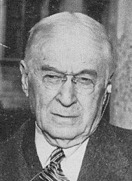
In 1916, Baruch left Wall Street to advise President Woodrow Wilson on national defense. He served on the Advisory Commission to the Council of National Defense and, in January 1918, became chairman of the new War Industries Board which successfully managed economic mobilization during World War I. He received the Army Distinguished Service Medal for his work for the war effort. In 1919, Wilson asked Baruch to be on his staff at the Paris Peace Conference, where he opposed what he saw as unrealistically high reparations imposed on Germany.
In the interwar years, Baruch was a strong advocate of US preparedness and of a more powerful War Industries Board, should war happen again. He remained a prominent government adviser during this time, anticipated a Wall Street crash as early as 1927, selling stocks short periodically in 1927 and 1928, and supported Franklin D. Roosevelt’s domestic and foreign policies after his election.
All through World War II, Baruch was a close advisor to FDR on the role of industry in war supply, was credited with greatly shortening the production time for tanks and aircraft and was appointed troubleshooter on several issues, including the supply of rubber to the armed forces. In 1944, Baruch commissioned a committee of physicians to help establish the specialty of Physical Medicine and Rehabilitation and provided over a million dollars of funding to many medical schools to further this cause. Baruch’s father had been a surgeon and was the first teacher of physical medicine at Columbia.
In 1946, Truman appointed him as the US representative to the United Nations Atomic Energy Commission (UNAEC), but his “Baruch Plan” for international control of atomic energy was rejected by the Soviet Union.
Michael Bar-Zohar
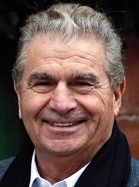
Bar-Zohar studied economics and international relations at the Hebrew University of Jerusalem and earned his MA and PhD in Political Science and International Relations at the University of Paris, France. He was a professor at Haifa University and Emory University in Atlanta. As a journalist, Bar-Zohar was science editor at Davar, a weekly newspaper in 1958-59, and he wrote for LaMerhav between 1960 and 1964.
Bar-Zohar served two terms in the Knesset, Israel’s Parliament, on the Defense and Foreign Affairs Committee, and as Chairman of the Education, Culture and Sports committee. He represented Israel at the Council of Europe and served as President of the France-Israel friendship league.
As a working historian and author, Bar-Zohar has published many non-fiction books, including Spies in the Promised Land and a biography of Shimon Peres. As official biographer of David Ben-Gurion, he wrote the screenplay for the full-length documentary film “Ben-Gurion Remembers,” which features Ben-Gurion telling his life story in the company of his friends. He also wrote the screenplays for a documentary based on his book Beyond Hitler’s Grasp (2000) and for a feature film, Tuvianski (2015). Among Bar-Zohar’s several novels, The Enigma was later made into a movie starring Martin Sheen, Sam Neil and Derek Jacobi.
Bar-Zohar has won many honors, including the Ben-Gurion award, Israel’s Prime Minister’s prize for literature, the Israel Sokolov award, Chevalier de la Légion d’Honneur (France), Order of Madara and Doctor Honoris Causa, University of Sofia (Bulgaria).
James Phinney Baxter III
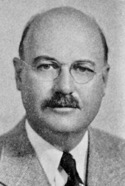
Popular at Harvard, Baxter left reluctantly in 1937 to become the 10th President of Williams College, a position he held until 1961. Baxter transformed Williams into a school that put a premium on intellectual accomplishment, increased scholarships and student aid more than sixfold, cut way down on admissions from prep schools and quadrupled the college's budget for instruction. Williams enrollments increased during Baxter's presidency from 820 to 1,100, and the number of seniors entering graduate school rose from 25 to 50 percent.
Baxter took leave in World War II to recruit academic personnel for the Office of Strategic Services (OSS) and to serve as historian for the Office of Scientific Research and Development (OSRD).
Baxter’s books are The Introduction of the Ironclad Warship (1933) and Scientists Against Time (1946). He wrote extensively for history and law journals and received 17 honorary degrees, including from Harvard and Columbia, for his contributions to education and history. He was a senior fellow of the Council on Foreign Affairs and was elected a fellow of the American Academy of Arts and Sciences in 1928. In the 1950s, he was a member of the Gaither Commission, which studied the cold war.
Rachel Yanait Ben-Zvi
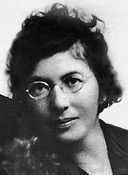
In 1928, she founded “The Educational Farm” to provide agricultural education for women in Jerusalem. She remained a labor activist, was active in the Haganah and organized the clandestine immigration of Jews through Syria and Lebanon.
After 1948, Rachel Yanait Ben-Zvi was active in the absorption of immigrants from Arab countries. As Israel’s first lady, she opened the president’s residence to people from all backgrounds in Israeli society, wrote about education and defense. Her autobiography Coming Home (in Hebrew, Anu olim) was published in 1961. In 1978, she was awarded the Israel Prize for her special contribution to society and the State of Israel.
William Bentinck-Smith
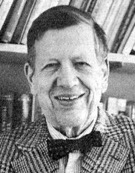
From 1946 until 1954, Bentinck-Smith was editor of the Harvard Alumni Bulletin, now the Harvard Magazine, winning for the Bulletin the Robert Sibley award for best alumni publication in the United States.
Bentinck-Smith worked at Harvard in various administrative positions under presidents James Bryant Conant, Nathan Pusey (as his administrative assistant from 1954 until 1971) and Derek Bok for over 40 years. He was author or editor of numerous books on Harvard’s history including The Harvard Book, an anthology about Harvard College and its history, and Building A Great Library: The Coolidge Years at Harvard. He received the Harvard Medal in 1987 for exceptional contributions to the University.
Bentinck-Smith was active in the Massachusetts Historical Society, served on the boards of the New England Historic Genealogical Society and of the Colonial Society of Massachusetts and was a member of the American Antiquarian Society and of the Boston Society of Printers.
Richard B. Bernstein
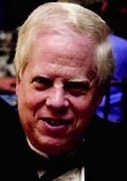
Bernstein’s books include Are We to Be a Nation? The Making of the Constitution (1987), Amending America (1993), Thomas Jefferson (2003), considered the best modern short biography of Jefferson, The Founding Fathers: A Very Short Introduction (2015), and The Education of John Adams (2020). He is working on three books to be published by Oxford University Press, Alexander Hamilton: The Energetic Founder, Hamilton: A Very Short Introduction, and Jefferson: A Very Short Introduction. Future books include two more Oxford projects, The Man Who Gave Up Power: A Life of George Washington and John Jay: The Diplomatic Founder.
Niels Blaedel
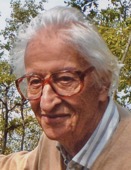
Besides Harmony and Unity: The Life of Niels Bohr (in Danish, Harmoni og enhed: Niels Bohr – en biografi), Blaedel wrote five books about birds and animals. He studied in the US in 1950 on a Smithsonian scholarship and received Denmark’s most prestigious awards: for journalism, the Cavling-prisen in 1954; for science writing, the EEC Science Writers Award in 1978; for science educators, the H C Ørsted Medaljen i sølv in 1988; and the Hendriksen Medaljen for the production of high quality books.
Sandra Blakeslee
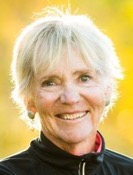
Blakeslee has co-authored ten books, including four with Judith Wallerstein, Second Chances, The Good Marriage, The Unexpected Legacy of Divorce and What About the Kids. She is a fellow of the American Association for the Advancement of Science and was a journalism fellow at the Templeton Foundation and at the Santa Fe Institute. She is co-founder and co-director of the Santa Fe Science Writing Workshop.
Kurt Blaukopf
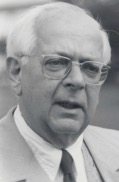
From 1962 until his retirement in 1984, he lectured at the Academy of Music and Performing Arts in Vienna where he became an honorary professor in 1974 and Austria’s first and only full professor of music sociology in 1977. In 1994 Blaukopf received an honorary doctorate from the University of Vienna. He initiated the founding of the MEDIACULT Institute (International Research Institute for Media, Communication and Cultural Development) and was its director until 1985. Blaukopf was also a member of the Executive Council of UNESCO from 1972 to 1976. His books include Musical Life in a Changing Society, published in 1982 and expanded in 1996, which provides a comprehensive overview of his conception of music sociology and Gustav Mahler.
Léon Blum
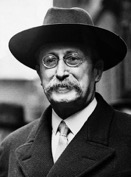
À l’occasion de l’affaire Dreyfus Léon Blum se lance en politique, après que Lucien Herr l’ait convaincu de l’injuste condamnation d’Alfred Dreyfus. Son devoir de réserve en tant que Conseiller d’État limite son activité : il donne des conseils juridiques aux avocats de Dreyfus et de Zola. Son engagement provoque sa rupture avec Maurice Barrès et sa rencontre en 1897 avec Jean Jaurès, qui devient son ami et avec qui il participe à la fondation de L’Humanité en 1904, où il tient la rubrique littéraire. En 1905, il adhère à la Section française de l’Internationale ouvrière (SFIO) au moment de sa création, mais dès l’été 1905, il quitte L’Humanité, devenu le journal du parti, et ne milite plus guère. Ses activités littéraires reprennent le dessus sur ses activités politiques.
Lorsque Blum est élu pour la première fois député de la Seine (1919-1928), il démissionne du Conseil d’État. Il devient ensuite secrétaire, puis président du groupe parlementaire socialiste et député de l’Aude (1929-1940, circonscription de Narbonne). Une vague d’antisémitisme de grande ampleur se manifeste avant l’arrivée de Blum au pouvoir en 1936. Charles Maurras appelle au meurtre de Blum et le décrit dans L’Action française du 9 avril 1935 comme « un monstre de la République démocratique... Détritus humain à traiter comme tel... un homme à fusiller, mais dans le dos. » Le 13 février 1936, Léon Blum est agressé boulevard Saint-Germain par des membres de l’Action française et des Camelots du roi qui, l’ayant reconnu dans une voiture, tentent de le lyncher. Alors âgé de 64 ans et gisant sur la chaussée, saignant abondamment, blessé au visage et à la nuque, il reçoit encore des coups de pied. Transporté à l’Hôtel-Dieu, il est soigné pour une rupture de la veine temporale.
Après les accords du Front populaire et la victoire aux élections législatives d’avril/mai 1936, le premier gouvernement à dominante socialiste de la IIIème République est formé en juin 1936 avec Blum à sa tête comme président du Conseil. Le bilan du Front populaire est mitigé, mais comprend un nombre important d’avancées, en particulier dans le domaine social : congés payés, semaine de 40 heures, établissement des conventions collectives, prolongement de la scolarité à 14 ans, relance des dépenses d’armement.
Pendant l’occupation, Blum est emprisonné par le régime de Vichy, traduit en justice lors d’une parodie de procès à Riom en 1942, puis déporté à Buchenwald. Libéré en 1945, il devient président du Gouvernement provisoire de la République française et prépare aux institutions de la IVème République, négociant l’annulation des dettes de guerre de la France auprès des États-Unis (accords Blum-Byrnes de mai 1946).
Charles Bohlen
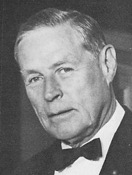
Under Truman (1945-1952), Bohlen worked as a special assistant for three Secretaries of State: James Byrnes, George Marshall (whom he revered) and Dean Acheson, becoming Counselor, the fourth ranking position in the State Department, in 1947. His was involved in all the major events and crises of the early Cold War including the Marshall plan, the Berlin blockade and the formation of NATO.
In 1953, President Eisenhower named Bohlen Ambassador to the Soviet Union. His confirmation turned out to be highly contentious because of Bohlen’s association with Yalta, but Eisenhower stuck by him. In Moscow, Bohlen was a keen and acute observer of post-Stalin developments in the Soviet Union, but his difficult relationship with Secretary of State John Foster Dulles kept him sidelined from any meaningful policy role and he felt underutilized.
In 1957, Dulles maneuvered him out of Moscow and sent him off to virtual exile as Ambassador to the Philippines. In 1959, Dulles’s successor Christian Herter brought Bohlen back to the State Department as a special adviser on Soviet affairs, a role he retained for a time after the election of John F. Kennedy who named Bohlen Ambassador to France in 1962, a position he filled with distinction at a time of difficult relations between de Gaulle and the United States. He served briefly as Deputy Under Secretary for Political Affairs in the State Department.
Bohlen was considered, on a par with George Kennan, as the top Soviet specialist of his generation: when he retired in 1969, he had more years of direct experience dealing with Soviet officials than anyone else in the US government (he once calculated that he had spent over 2000 hours sitting across a table from Soviet Foreign Minister Vyacheslav Molotov). Bohlen’s memoir Witness to History was published in 1973 with extensive help from Robert Phelps. He died of cancer the following year.
Felice Bonadio
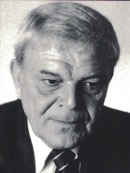
Ruth Bondy
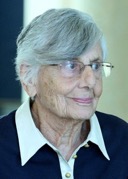
In 1943, she was sent to Auschwitz-Birkenau’s Czech family camp and in July 1944, roughly one month after the Czech family camp’s liquidation, Bondy was transferred to Hamburg as a worker clearing debris from allied bombardments. A short time later she was sent to Bergen-Belsen, where she was liberated, weighing 35 kilograms. Following a miraculous recovery from typhus, Bondy returned to Prague, where she joined a unit of Jews determined to fight for Israel’s independence, arriving in Haifa on December 31, 1948.
Once in Israel, she learned Hebrew and began working as a Hebrew teacher and as a reporter for Omer, a newspaper for new immigrants. In 1953 she became a columnist for Dvar Hashavua, the respected weekly magazine of the daily newspaper Davar. Bondy wrote over twenty books, including four biographies, the first of which, The Emissary: A Life of Enzo Sereni appeared in 1973 and won the Yizhak Sadeh Prize in 1974. It was followed by a profile of Jacob Edelstein, the chairman of the Theresienstadt Council of Elders. Bondy intended this biography to change the negative attitude of Israelis towards Holocaust victims. Bondy translated more than 50 books of Czech literature into Hebrew, including Jaroslav Hašek’s The Good Soldier Schweik, works of Karl Čapek, Milan Kundera, Bohomil Hrabal and many others. She also translated Kamarad, one of the children’s newspapers in the Theresienstadt Ghetto.
In 1981 Bondy became a member of Sovlanut, a non-partisan movement for tolerance and the prevention of violence, but distanced herself from the group in frustration in 1995, after the assassination of Yitzhak Rabin. Bondy, who won the Sokolov prize for journalism, the Tchernichovsky prize for translation and the Prime Minister's prize for Hebrew literature, continues in her nineties to write nonfiction and to translate works from the Czech into Hebrew. (photo: Moshe Shai)
Thomas Neville Bonner

He was vice president and provost at the University of Cincinnati (1967-71) and president of the University of New Hampshire (1971-74), of Union College (1974–78), and of Wayne State University (1978-82). He retired from the Wayne State faculty in 1997. Bonner received major, multi-year grants from the National Endowment for the Humanities and the National Institutes of Health, and has been awarded three honorary degrees.
Omar Bradley
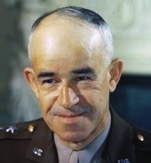
After the US entered World War II, Bradley oversaw the transformation of the 82nd Infantry Division into the first American airborne division. He received his first front-line command in Operation Torch in North Africa, serving under General George S. Patton. After Patton was reassigned, Bradley commanded II Corps in the Tunisia Campaign and the Allied invasion of Sicily. He commanded the First US Army during the Invasion of Normandy, which landed at Utah and Omaha beaches. After the breakout from Normandy, he took command of the Twelfth US Army Group, which ultimately comprised 43 divisions and 1.3 million men, the largest body of American soldiers ever to serve under a single field commander: Bradley, the senior commander of American ground forces, linked up with Marshal Koniev of the Soviet Union on the banks of the Elbe River on April 25, 1945, sealing the defeat of Nazi forces. He was known as the “G.I.’s General” because of his concern for the ordinary soldier.
After the war, Bradley headed the Veterans Administration. He became Chief of Staff of the US Army in 1948 and the first Chairman of the Joint Chiefs of Staff in 1949. In 1950, Bradley was promoted to the rank of General of the Army, becoming the last of only nine people to be promoted to five-star rank in the US Armed Forces. Bradley was the senior military commander at the start of the Korean War, supported President Truman’s wartime policy of containment and was instrumental in persuading Truman to dismiss General Douglas MacArthur in 1951 after MacArthur resisted administration attempts to scale back the war’s strategic objectives.
Bradley left active duty in 1953 (though remaining on “active retirement” for the next 27 years as a five-star Army general), then continued to serve in public and business roles, including at the Bulova Watch Company, until his death.
Jean-Denis Bredin
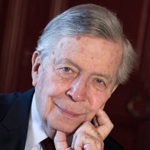
Richard Breitman
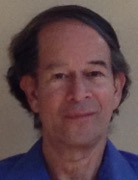
Breitman read a 1983 article by historian Walter Laqueur about an anonymous German industrialist who in 1942 brought to the West information about Hitler’s planned use of gas chambers and crematoria to destroy European Jewry. Breitman proved that the industrialist was Eduard Schulte, a prominent but secretly anti-Nazi CEO of a large mining firm who traveled frequently between Germany and Switzerland. Breitman and Laqueur then wrote Breaking the Silence: the German Who Exposed the Final Solution.
In 1994, Breitman asked the National Security Agency to declassify its holdings of World War II intercepts and decodes of radio messages. As a result, the NSA Historical Cryptographic Collection, amounting to some 1.3 million pages, was turned over to the US National Archives. In this mass, Breitman found a small file of British decodes of German police radio messages, still unavailable in the United Kingdom, that revealed important information about the first stage of the Holocaust. Prodded by Parliament, the British government followed with its own, larger, declassification of German decodes. Breitman mined both British and American archives for his 1998 book Official Secrets: What the Nazis Planned, What the British and Americans Knew.
Breitman then served as director of historical research for a small US government body set up to oversee implementation of a 1998 declassification law regarding Nazi war crimes. This organization helped to declassify more than eight million pages of US government records, and a team of four historians used them to write a 2005 book on US Intelligence and the Nazis.
Among Breitman’s 13 books are the prize-winning The Architect of Genocide: Himmler and the Final Solution, stressing Himmler’s central planning of the Holocaust, and FDR and the Jews, co-authored with Allan J. Lichtman, which argued that Roosevelt’s policies toward European Jewry fluctuated substantially over time according to circumstances, political calculations, and constraints.
Breitman joined American University’s history department as assistant professor in 1976 and retired as distinguished professor emeritus in 2015. For 25 years, he served as editor of the journal Holocaust and Genocide Studies. In 1999 he received an honorary doctorate from Hebrew Union College, and in 2018 a Distinguished Achievement Award from the Holocaust Educational Foundation.
Andrew Brown
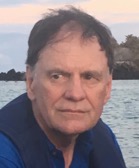
His professional experience treating patients with X-rays led to a fascination with the history of physics and the nuclear age. His first book, The Neutron and the Bomb: A Biography of Sir James Chadwick, was followed by two other biographies of remarkable, if lesser known, figures who made substantial contributions to the modern world. J D Bernal: the Sage of Science explores the passionate and pioneering genius, whose work in the field of X-ray crystallography opened the way to contemporary structural biology. The third biography is Keeper of the Nuclear Conscience about the life and work of Joseph Rotblat, the physicist and 1995 Nobel peace laureate.
In addition to medical papers, Brown has also published articles and chapters on radiation risks and nuclear history. He is currently working on a book about A V Hill, the muscle physiologist who shared the 1922 Nobel Prize in Physiology or Medicine, before emerging as a leading anti-fascist and defense expert in the years leading up to World War II.
Robert V. Bruce
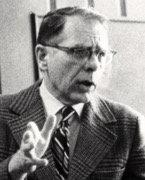
Bruce taught at the University of Bridgeport, Lawrence Academy at Groton, and the University of Wisconsin before returning to Boston University where he taught history as an instructor (1955-1958), Assistant Professor (1958-1960), Associate Professor (1960-1966), Professor (1966-1984) and Emeritus Professor (1984-1991). He specialized in the American Civil War, and won the 1988 Pulitzer Prize for History for his book The Launching of Modern American Science, 1846–1876. His other books are Lincoln and the Tools of War, 1877: Year of Violence, and Bell: Alexander Graham Bell and the Conquest of Solitude, which was a finalist for the 1974 National Book Award in biography.
Michael Burns
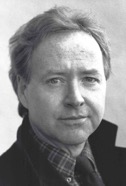
Besides France and the Dreyfus Affair: A Documentary History, his publications include Rural Society and French Politics: Boulangism and the Dreyfus Affair; a revision of Geoffrey Barraclough’s Main Trends in History; and Dreyfus: A Family Affair from the French Revolution to the Holocaust, which was awarded the Prix Bernard Lecache of the International League against Racism and Antisemitism. Recipient of Rockefeller, Fulbright, and Tocqueville fellowships, he has been advisory editor for the Blackwell series New Perspectives on the Past and for France and the Americas: Culture, Politics, and History. He is a former fellow of the Woodrow Wilson International Center for Scholars.
William Burrows
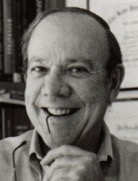
He took a BA and an MA in Political Science at Columbia in 1960 and 1962, decided on a career in journalism, and joined The New York Times as a clerk on the Foreign Desk on October 15, 1962, one week before the Cuban Missile Crisis. Burrows was eventually put on the commercial aviation beat. He has also reported for The Richmond Times-Dispatch, The Washington Post and The Wall Street Journal, has published 14 non-fiction books including Richthofen: A True Story of the Red Baron and This New Ocean: The Story of the First Space Age, won several awards, and taught journalism at New York University for 35 years; he created NYU’s graduate Science, Health and Environmental Reporting Program, and is the NYU Journalism Department’s only professor emeritus.
Philip V. Cannistraro and Brian R. Sullivan

His book The Factory of Consent was the first historiographical attempt to reconstruct the structure and functioning of the propaganda apparatus of Mussolini’s regime. Cannistraro edited the first critical dictionary on fascism and also researched the history of Italian emigration to the United States. He was the first distinguished professor of Italian American studies associated with the Calandra Institute.
Besides La Fabbrica del consenso, Cannistraro’s books include Civilizations of the World, Il Duce’s Other Woman, The Western Perspective: A History of European Civilization in the West and Blackshirts in Little Italy. In 1993, Cannistraro won the Prezzolini Prize for outstanding contributions to Italian Culture. He was twice a Fulbright fellow in Italy and also received the Howard Marraro Prize.
Born in 1945 and raised on the Upper West Side of Manhattan, Brian Robert Sullivan attended Regis High School (1959-63) and Columbia College (1963-67). He served as a US Marine officer (1967-70) and in Vietnam, received a Silver Star and Purple Heart. He returned to Columbia Graduate School, then did dissertation research in Rome (1973-74). Sullivan taught at New York area private schools (1976-82) while completing his dissertation in 1983, “A Thirst for Glory” on Mussolini and the Italian military, 1922-1936. After teaching at Drexel University (1982-84), Yale University (1984-88) and the Naval War College (1988-91), he took part in planning deception for Operation Desert Storm. Sullivan then became a Senior Research Professor at the Institute for National Strategic Studies in Washington (1991-97). In 1998, he formulated a space warfare strategy for Air Force Space Command.
Thereafter, Sullivan wrote full-time, composing over fifty entries for the Historical Dictionary of Fascist Italy, dozens of scholarly book reviews and some sixty articles on Italian and military topics. Encouraged by Renzo De Felice, over seven years Sullivan and Cannistraro wrote Il Duce's Other Woman which appeared in 1993. After finding Margherita Sarfatti’s memoirs, Sullivan translated and edited them as My Fault: Mussolini As I Knew Him (2014). He is at work on a biography of General Alberto Pariani, Mussolini’s army chief of staff, 1936-39.
Hendrik B.G. Casimir
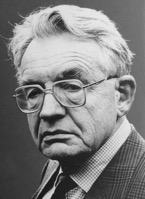
After receiving his PhD he worked as an assistant to Wolfgang Pauli at ETH Zürich. In 1938, he became professor of physics at Leiden University. In 1942, during World War II, Casimir moved to the Philips Natuurkundig Laboratorium (or Physics Laboratory, NatLab) in Eindhoven where he remained an active scientist until becoming co-director of the NatLab in 1946 and a member of Philips's board of directors in 1956. Casimir retired from Philips in 1972.
Although Casimir spent much of his professional life in industry, his contributions to science from 1931 to 1950 include: pure mathematics, Lie groups (1931); hyperfine structure, calculation of nuclear quadrupole moments, (1935); low temperature physics, magnetism, thermodynamics of superconductors, paramagnetic relaxation (1935-1942); applications of Onsager's theory of irreversible phenomena (1942-1950). Casimir helped found the European Physical Society of which he became president (1972-1975). In 1979 he was one of the key speakers at CERN's 25th anniversary celebrations. In 1946 Casimir became a member of the Royal Netherlands Academy of Arts and Sciences.
While at Philips NatLab in 1948, Casimir, collaborating with Dirk Polder, predicted the quantum mechanical attraction between conducting plates now known as the Casimir effect, which is important in Micro Electro-Mechanical Systems (MEMS). He was awarded six honorary doctor degrees by universities outside the Netherlands and received numerous awards and prizes, including the IRI Medal from the Industrial Research Institute in 1976. He was a Foreign Associate of the National Academy of Engineering.
David C. Cassidy
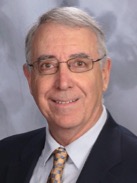
Cassidy returned to the US as associate editor of The Collected Papers of Albert Einstein, then located in Princeton and Boston. He joined the faculty of Hofstra University in 1990. In 1992 he published the award-winning biography Uncertainty: The Life and Science of Werner Heisenberg. He published J. Robert Oppenheimer and the American Century in 2004. Cassidy is also the author of Einstein and Our World, Understanding Physics, and A Short History of Physics in the American Century. Recently he began writing science history plays, the first of which premiered in New York in 2014; it will be published in his new book Farm Hall and the German Atomic Project of WWII: A Dramatic History.
Cassidy is the recipient of the Pfizer Award of the History of Science Society, the Science Writing Award of the American Institute of Physics, the Abraham Pais Prize of the American Physical Society, and an honorary doctorate of science awarded by Purdue University.
Alfred D. Chandler, Jr. and Stephen Salsbury

Chandler’s books include Strategy and Structure: Chapters in the History of the Industrial Enterprise (1962) which examined the organization of E.I. du Pont de Nemours and Co., Standard Oil of New Jersey, General Motors, and Sears, Roebuck and Co.; with Stephen Salsbury, Pierre S. Du Pont and the Making of the Modern Corporation (1971), a detailed study of the reorganization of top-level management at Du Pont and General Motors and biography of its instigator; The Visible Hand: The Managerial Revolution in American Business which won the Pulitzer Prize for History in 1978; Scale and Scope: The Dynamics of Industrial Capitalism (1990); and the anthology Big Business and the Wealth of Nations (1997) co-edited with Franco Amatori and Takashi Hikino.
Chandler has been called “the doyen of American business historians”. He was a member of the American Academy of Arts and Sciences and of the American Philosophical Society.
Stephen Salsbury (1931-1999) earned his BA from Occidental College in 1953 and his PhD from Harvard University in 1961. He became Assistant Professor of History (1963-67), Associate Professor (1968-70) and Professor of History (1970-77) at the University of Delaware. In 1977 he moved to the University of Sydney in Australia as professor of economic history.
Salsbury’s books include The State, The Investor, and the Railroad: The Boston and Albany, 1825-1869 (1967); No Way to Run a Railroad: The Untold Story of the Penn Central (1982); with Kay Sweeney, The Bull, the Bear and the Kangaroo: The History of the Sydney Stock Exchange (1988) and Sydney Stockbrokers: Biographies of Members of the Sydney Stock Exchange (1992).
Jack Chen
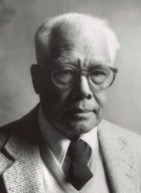
From 1950 on, Chen worked in China as a journalist, editor and artist, contributing regularly to People’s China, Peking Review, and Cartoon. Under Mao Zedong’s Cultural Revolution started in 1966, after a kangaroo court of Red Guards sentenced him to hard labor Chen worked with peasant farmers in the countryside, an experience he recounted in his book A Year In Upper Felicity: Life in a Chinese Village During the Cultural Revolution.
In 1971 he came to the United States and lectured widely about Chinese affairs, including at Harvard, Yale, Princeton, Stanford, and UC Berkeley. He wrote for several publications including The New York Times and Esquire. In 1972-73, Chen worked as a consultant to the New York State Department of Education, helping develop study programs on modern China. In 1973-77, he worked at Cornell University, lecturing, researching, and writing. In 1978-82, he worked at the Chinese Culture Center of San Francisco and organized the exhibition Chinese of America, the research for which became the basis for his book The Chinese of America. Chen’s other books are The Chinese Theatre, Folk Arts of New China, New Earth and Inside the Cultural Revolution.
Herbert Childs
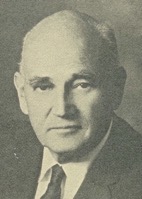
Mark Clark

Clark went by submarine to then hostile French Morocco in October 1942 to meet with French officers loyal to the Allies. At age 46, he became the youngest three-star general in the Army. After planning the North African invasion of November 1942, he commanded the Fifth Army in Italy, which he had organized and trained in North Africa in 1943 for the invasion of Italy, and later the 15th Army Group which combined the Fifth and the British Eighth Army joined by Indian, South African, Australian, New Zealand, anti-Fascist Italian, Polish, Jewish and Brazilian brigades. He led the Salerno and Anzio landings, the costly charge of the 36th Division at the Rapido River and the bombing of the Monte Cassino Abbey. After the German forces in Italy surrendered in May 1945 following the Allies’ final push into the Po Valley, Clark became commander of US Occupation Forces and High Commissioner in Austria. Later, as Deputy Secretary of State, he helped negotiate a treaty for Austria.
In 1949-50, General Clark was Chief of Army Field Forces. In April 1952 he succeeded General Matthew Ridgway in Tokyo as UN Commander in Korea and Commander in Chief of the US Far East Command. He signed the Korean armistice on July 27, 1953.
Clark retired in October 1953 after 36 years in the Army. In 1954 he became president of the military college The Citadel in Charleston, South Carolina, a position he held until 1965.
Peter Collier and David Horowitz
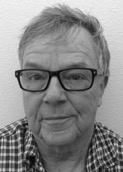
Among Collier’s books are The Kennedys: An American Drama, a #1 New York Times bestseller co-authored with David Horowitz as were The Roosevelts: An American Saga, The Fords: an American Epic and The Rockefellers: An American Dynasty. Collier was the founding editor of conservative Encounter Books in San Francisco and held that position from 1998 until he resigned in 2005 when he became Vice President of Programs at the David Horowitz Freedom Center. Collier’s other books are Medal of Honor: Portraits of Valor Beyond the Call of Duty, Political Woman: The Big Little Life of Jeane Kirkpatrick and the young adult book, Choosing Courage: Inspiring Stories of What It Means to Be a Hero published in collaboration with the Congressional Medal of Honor Foundation. His final work, the novel Things in Glocca Morra, appeared in 2021.
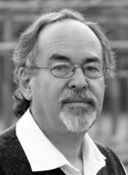
In 1985, Horowitz and Collier published “Lefties for Reagan” (later retitled “Goodbye to All That”) in The Washington Post Magazine to explain their change of views and decision to vote for a second term for Republican President Ronald Reagan. In 1998 Horowitz and Collier founded the David Horowitz Freedom Center. In the early 2000s, Horowitz concentrated on issues of academic freedom, attempting to protect conservative viewpoints on college campuses. Horowitz opposes illegal immigration, gun control, and Islam. Besides those written with Peter Collier, his books include From Yalta to Vietnam: American Foreign Policy in the Cold War, Isaac Deutscher: The Man and His Work, The Politics of Bad Faith: The Radical Assault on America’s Future and the memoir Radical Son: A Generational Odyssey.
J. Lawton Collins
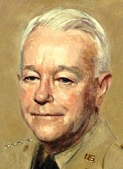
Collins was a chemistry instructor at West Point from 1921 to 1925. He completed the company officer course at the US Army Infantry School at Fort Benning in 1926, and the advanced course at the US Army Field Artillery School at Fort Sill in 1927. He was an instructor in weapons and tactics at Fort Benning from 1927 to 1931 and, promoted to major in 1932, was executive officer of the 23rd Brigade in Manila, and assistant chief of staff, as a G-2 officer, with the Philippine Division from 1933 to 1934.
Collins graduated from the US Army Industrial College in 1937, and from the US Army War College in 1938 where he stayed as an instructor from 1938 to 1940. Promoted to lieutenant colonel in 1940, to colonel in 1941 as chief of staff of VII Corps, and to general rank in 1942, Collins was chief of staff of the Hawaiian Department from 1941 to 1942 and commanded the 25th Infantry Division on Oahu and in operations against the Japanese on Guadalcanal between 1942 and 1943 and on New Georgia in 1943. Transferred to the European Theater of Operations, Collins commanded the VII Corps in the Allied invasion of Normandy, in the battles of the Hürtgen Forest and of the Bulge and until the end of World War II in Europe in May 1945.
After the war, Collins was chief of staff of Army Ground Forces until December 1945, director of information of the US Army from 1946 to 1947, Vice Chief of Staff of the US Army from 1947 to 1949 and Army Chief of Staff from 1949 to 1953 throughout the Korean War. He was the US representative to NATO from 1953 to 1954 and special US representative in Vietnam with ambassadorial rank from 1954 to 1955. He retired from active service in 1956, after almost 40 years of military service. In 1957 he became vice chairman of the board of Pfizer International subsidiaries. His books are his autobiography, Lightning Joe, and War in Peacetime: The History And Lessons of Korea.
Arthur Holly Compton
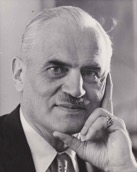
Compton began his higher education at the College of Wooster and completed his PhD in physics at Princeton University in 1916. In 1920, after several university and industry appointments, he became head of the physics department at Washington University in St Louis. His research into the scattering of X-rays by electrons led to the discovery of what is now known as the “Compton Effect” (the wavelength of an X-ray increases, and its energy decreases, after scattering by an electron) for which he won the 1927 Nobel Prize in Physics, the first conclusive experimental evidence that light consists of particles, or photons. From 1923 until 1945, Compton was a Professor of Physics at the University of Chicago where he continued to conduct seminal research on X-rays and cosmic rays.
During World War II (1942-1945), Compton was Director of the Metallurgical Project at the University of Chicago, overseeing the demonstration of the first controlled nuclear chain reaction by Enrico Fermi. This work spearheaded the initiation of the Manhattan Project to develop the atomic bomb. Compton led teams of physicists, chemists and engineers charged to produce the large quantities of plutonium needed for that project, on which he worked closely with Ernest Lawrence, James B. Conant and J. Robert Oppenheimer.
In 1945, Compton returned to St Louis as Chancellor of Washington University. In 1953 he resigned that position and assumed the role of Professor of the Natural Philosophy at Washington University where he lectured and wrote about science and society. He lived in St Louis with his wife, Betty Charity McCloskey (m. 1916), until his death. He had two sons, Arthur Alan and John Joseph, and four grandchildren.
Ruth Schwartz Cowan
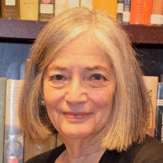
Specializing in the history of science, technology and medicine, Cowan taught in the history department at SUNY Stony Brook from 1967 to 2002, becoming a Professor in 1984; she also served as Director of Women’s Studies (1985-1990) and Chair of the Honors College (1997-2002). In 2002 she became Janice and Julian Bers Professor of the History and Sociology of Science at the University of Pennsylvania, where she also served as department chair from 2003-2008, and 2011-2012. Since 2012 she has been Professor Emerita at the University of Pennsylvania.
Cowan’s books include More Work for Mother: The Ironies of Household Technology from the Open Hearth to the Microwave, which won the Dexter Prize from the Society for the History of Technology in 1984, Heredity and Hope: The Case for Genetic Screening and A Social History of American Technology. Cowan has been awarded the Leonardo daVinci Prize for lifetime achievement from the Society for the History of Technology in 1997 and the John Desmond Bernal Prize for her contributions to the field of Science and Technology Studies in 2008. Cowan was President of the Society for the History of Technology (1992-1994) and was elected to the American Philosophical Society in 2014.
Robert Crassweller

In 1954, he became counsel for Pan American World Airways in New York City; he remained at Pan Am until 1966. From 1967 to 1969 he was a Visiting Fellow on the Council on Foreign Relations in New York City, and testified as an expert witness before the Committee on Foreign Affairs of the House of Representatives in Washington. In 1970-1971, he was a Visiting Professor at Sarah Lawrence College and at Brooklyn College. He later worked for International Telephone and Telegraph, where he became General Counsel for ITT-Latin America.
Over 16 years, Crassweller reviewed some 700 books for Foreign Affairs, the magazine of the Council on Foreign Relations; he also reviewed for the New York Times book section. He wrote three books on Latin America: Trujillo: The Life and Times of a Caribbean Dictator (1966), The Caribbean Community: Changing Societies and U.S. Policy (1972) and Perón and the Enigmas of Argentina (1987).
John Cullen
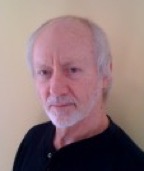
Cullen has translated more than fifteen books from the French, Italian, German, and Spanish, including Susanna Tamaro’s Follow Your Heart from the Italian, Christa Wolf’s Medea from the German, and Henning Boetius’s The Phoenix from the German. His translations of Margaret Mazzantini’s Don’t Move from the Italian and of Yasmina Khadra’s The Swallows of Kabul from the French were short-listed for The International IMPAC Dublin Literary Award. Cullen is also the co-author with Alexandra Villard de Borchgrave of Villard: The Life and Times of an American Titan.
Roger Daniels
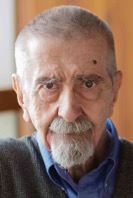
Daniels earned his Ph.D. at UCLA in 1961, after serving in the merchant marine during WW II, in the Army during the Korean War, and briefly as a journalist. He taught at Wisconsin State University, Platteville, UCLA, the University of Wyoming, and SUNY, Fredonia before coming to the University of Cincinnati as professor and head of the History Department in 1976. In 1994 he was named Charles Phelps Taft Professor of History, and took emeritus status in 2002. He had Fulbright and other visiting professorships at four European and two Canadian Universities and has lectured widely in North America, Europe, and Asia. (photo: Merrill Images)
Lucy S. Dawidowicz
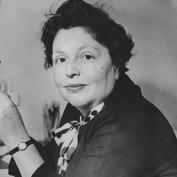
At the end of World War II, Dawidowicz spent eighteen months on the staff of the Joint Distribution Committee in Germany helping Jewish survivors in DP camps. In 1948 she married Szymon Dawidowicz, a political refugee from Poland, and began working for the American Jewish Committee. In 1969, she became a professor at Yeshiva University. Throughout the 1970s and 1980s, Dawidowicz wrote books and articles about Eastern European Jewry, the Holocaust and Jews in America.
Inge Deutschkron
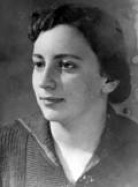
In 1955, Inge started working as a freelance journalist in Bonn and became the Germany correspondent for the Israeli daily newspaper Maariv in 1960. From 1972 until 1987, she worked for Maariv in Israel. In 2001, she returned to Berlin where she now lives.
Carl Djerassi
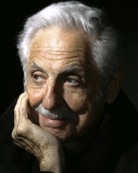
Alfred Döblin
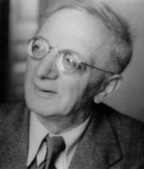
Lois Dubin
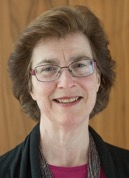
Dubin taught at Hebrew College and Yale University before serving on the Smith faculty from 1989 to 2023 in the Religion Department and the Jewish Studies Program. Her courses spanned Jewish history and religion, including Hebrew; world religions; food, ritual and other aspects of lived religions; and women’s history and religious politics. She held visiting research appointments at Harvard, University of Michigan, EHESS (École des hautes études en sciences sociales) in Paris, and University of Pennsylvania, and has lectured in North America, Europe, Israel, and South Africa.
Dubin has published widely on Jews and Judaism in early modern Europe, focusing on themes of citizenship, commerce and culture, religious adaptation, and civil marriage and divorce. Besides the award-winning book The Port Jews of Habsburg Trieste: Absolutist Politics and Enlightenment Culture, she has edited issues of the journal Jewish History: “Port Jews of the Atlantic”; and “From History to Memory: The Scholarly Legacy of Yosef Hayim Yerushalmi,” which includes her article “Yosef Hayim Yerushalmi, the Royal Alliance, and Jewish Political Theory.” Her chapter “Port Jews Revisited: Commerce and Culture in the Age of European Expansion,” appeared in The Cambridge History of Judaism VII: 1500-1815 (ed. Jonathan Karp and Adam Sutcliffe). She brings Europe and Canada together in her essay “Montreal and Canada through a Wider Lens: Confessions of a Canadian-American European Jewish Historian,” in No Better Place?: Canada, Its Jews, and the Idea of Home (ed. David S. Koffman).
Dubin also writes on contemporary feminist ritual, theology, and spirituality. She has addressed spiritual responses to miscarriage and pregnancy loss, and most recently to COVID. Her essay “Prayer in a Time of Pandemic: Loneliness, Liturgy, and Virtual Community,” is forthcoming in Emet le-Ya’akov: Facing the Truths of History: Essays in Honor of Jacob J. Schacter (ed. Zev Eleff and Shaul Seidler-Feller). Her current book project is Rachele’s Pursuits: Love, Law, and Liberty in Revolutionary Europe.
François Duchêne
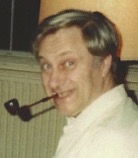
In 1963, Duchêne moved to Brighton, where he went back to work for the Economist. He was a Ford Foundation fellow (1967-69), director of the International Institute for Strategic Studies (1969-74) and professor and director of the newly formed Centre for European Research at Sussex University (1974-84). Duchêne is the author of The Case of the Helmeted Airman: A Study of W.H. Auden’s Poetry (1972) and Jean Monnet: The First Statesman of Interdependence (1994) and edited several other books.
Francis Duncan
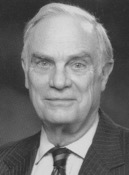
Duncan first met Admiral Rickover in 1969 after completing his work on the AEC history, and was assigned to the Admiral’s office in 1974. Until his retirement in 1987, Duncan worked closely with the Admiral and his staff, visiting laboratories, touring shipyards, and attending sea trials of nuclear-powered attack and missile submarines, cruisers, and aircraft carriers. He also assisted with research for Rickover’s monograph, “How the Battleship Maine was Destroyed.” In 1990, Duncan published an overview of Rickover’s nuclear propulsion program in Rickover and the Nuclear Navy: The Discipline of Technology, which won the Theodore and Franklin D. Roosevelt Naval History Prize in 1991.
Duncan’s nearly twenty years involvement with Admiral Rickover and the nuclear naval program allowed him unprecedented access to Rickover’s colleagues, friends, family and the Admiral’s thoughts and personal papers, resulting in the biography Rickover: The Struggle for Excellence, originally published in 2001.
Carol Easton
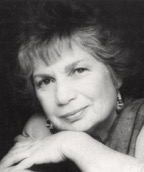
Abba Eban
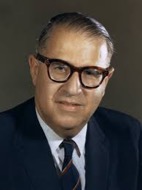
At 33, he became Israel’s first permanent representative at the UN and then Israel’s ambassador to the US. He served as a Labor member of the Knesset, and as Israel’s deputy prime minister and foreign minister. A prolific lecturer and author, he wrote several books, including My people: the story of the Jews, My country: the story of modern Israel, Heritage: civilization and the Jews, Abba Eban: An Autobiography and The new diplomacy: international affairs in the modern age.
Suzy Eban
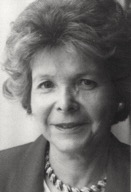
Keith Eiler
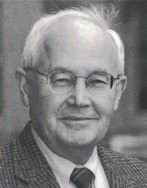
After retiring from the Army in 1965 as a lieutenant colonel, Eiler earned a PhD in the history of American civilization at Harvard in 1974. He was a research Fellow at the Library of Congress (1968-74) and at the Hoover Institute at Stanford University (1983-2003).
Eiler also earned masters’ degrees in civil engineering from Harvard and in international affairs from George Washington University. His book, Mobilizing America: Robert P. Patterson and the War Effort, 1940–1945, received the Hoover Institution’s Uncommon Book Award in 1999.
Amos Elon
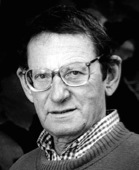
A secular Jew, he fought in Israel’s War of Independence in 1948 and later became a journalist. He began writing for Ha’aretz in 1954, and subsequently served as the newspaper’s Washington correspondent, European bureau chief, senior editor and columnist.
His eleven books include Founder: A Portrait of the First Rothschild and His Time, The Israelis: Founders and Sons and Herzl. A persistent and prescient voice for negotiation between Arabs and Jews. In 2004, he moved to Tuscany. He wrote frequently for English-language publications including Encounter, The New Republic, The New York Times Magazine, The New Yorker and The New York Review of Books.
Helen Epstein
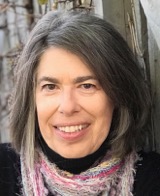
Her profiles of legendary musicians such as Vladimir Horowitz, Leonard Bernstein and Yo-Yo Ma are collected in Music Talks that, like Children of the Holocaust and Where She Came From, has been translated into several other languages. She herself is the translator of Heda Kovály's Under A Cruel Star and Vlasta Schönová's Acting in Terezín. Her biographies of Joseph Papp and Tina Packer grew out of her journalistic work. She has an active speaking career and has lectured at a wide variety of venues in Europe, and North and South America. She blogs for The Arts Fuse, a New England cultural web site.
Amos Ettinger
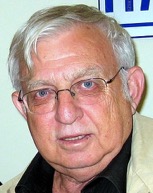
Howard M. Feinstein
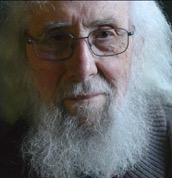
After moving back to Ithaca in 1961 to practice psychiatry, Feinstein gradually extended beyond analytically informed psychotherapy, incorporating psychopharmacology and often involving the patient’s family. He noticed that many patients struggled with ambivalence about work choices and was introduced to the James family through discussions with a friend, Cushing Strout, a professor of American intellectual history.
Feinstein began formal graduate studies at Cornell while continuing to practice and raising three sons. In 1967-68, he studied psychobiography with Erik Erikson and read hundreds of James family letters at Harvard’s Houghton collection. In 1976-77, he explored the resources of the British Museum Library as a Visiting Fellow at the Tavistock Clinic. Returning to Ithaca, he completed his Ph.D. in 1977 with a thesis entitled “Fathers and Sons: Work and the Inner World of William James, An Inter-Generational Inquiry” which evolved into Becoming William James, published by Cornell University Press in 1984.
Feinstein was an Adjunct Professor of Psychology at Cornell University for over 15 years and is a Lifetime Fellow of the American Psychiatric Association.
Charles Fenyvesi
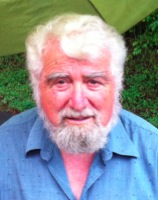
Returning to the US, he edited various publications including The National Jewish Monthly and served as Washington correspondent for the Tel Aviv daily Ha’aretz before joining The Washington Post as a staff writer contributing a weekly garden column for nineteen years and scores of features and op-ed pieces. Next he worked for US News & World Report, filing a one-page weekly feature, “Washington Whispers,” for a decade. Fenyvesi also freelanced for The New York Times, The Los Angeles Times, The Baltimore Sun, and The New Republic.
He is author of six books on subjects ranging from interviews with Europe’s non-reigning kings to essays on trees, from archival research on three little known anti-Nazi conspiracies during World War II to profiles of rescuers of Jews in wartime Hungary. His own family’s history, When the World Was Whole, was published in six countries.
Benjamin B. Ferencz
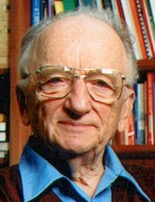
Ferencz was honorably discharged as a Sergeant but was soon recruited in General Telford Taylor’s legal team in the Subsequent Nuremberg Trials as a Colonel. With some 50 researchers, Ferencz scoured Nazi offices and archives in Berlin, collecting overwhelming evidence of Nazi genocide by German doctors, lawyers, judges, generals, industrialists and others who played leading roles in organizing or perpetrating Nazi brutalities. Taylor appointed Ferencz chief prosecutor in the Einsatzgruppen Case, Ferencz’s first case: all of the 22 accused were convicted; 13 received death sentences, of which 4 were eventually carried out.
Ferencz stayed in Germany until 1956, helping set up reparation programs for the victims of persecution by the Nazis, and negotiate the 1952 Reparations Agreement between Israel and West Germany and the first German Restitution Law in 1953. In 1956, Ferencz returned to the US and entered private law practice as a partner of Telford Taylor. In 1970, influenced by the Vietnam War, Ferencz left law practice and started working for the creation of an International Criminal Court that would be the world’s highest instance for crimes against humanity and war crimes. From 1985 until 1996, Ferencz was adjunct professor of international law at Pace University.
Ferencz received the Erasmus Prize in 2009, an honor recognizing contributions to European culture, society, or social science.
Laura Fermi
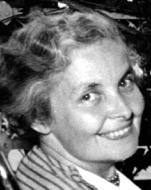
In Atoms in the Family (1954), Laura Fermi’s best-selling memoir of life with her famous husband, she recounts how in 1938 with their two young children, she and Enrico fled Fascist Italy and its increasingly draconian anti-Jewish laws; how they adjusted to their lives as immigrants in the United States; and how their lives changed again when Enrico was recruited by the US military to work on the first atomic weapons, in a secret location in the New Mexican desert, during World War II. The family settled in Chicago after the War.
After her husband’s death in 1954, Laura attended the first International Conference on the Peaceful Uses of Atomic Energy in 1955, in her role as the historian for the US delegation. Laura then wrote a book about the proceedings, Atoms for the World in 1957.
Also in 1957, Fermi won a Guggenheim Fellowship for her writing. In 1961, she published Mussolini, a biography of the Italian dictator and a book for young readers, The Story of Atomic Energy. Her last book, Illustrious Immigrants, was originally published in 1968. Since 1959, she was at the leading edge of raising awareness of air pollution control in Chicago and nationally. In 1971, she and her colleagues initiated the US’s first ever lobby for stricter gun control both locally and nationally.
In her later years, Laura lived with a lung condition, which limited her ability to walk more than a couple of blocks. She continued to raise awareness about, and promote solutions for significant social issues until the end of her life.
Lisa Fittko
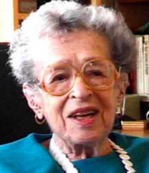
After Germany invaded France, Fittko was sent as an “enemy alien” to the Gurs concentration camp in southwestern France. There, she helped fellow prisoner Hannah Arendt by supplying her with a stolen release document. Fittko reached Marseille and finally the Pyrenees where she escorted refugees into Spain during 1940-1941. The Socialist mayor of Banyuls-sur-Mer asked Fittko to help emigrés cross into Spain. Fittko wanted to reach Portugal to then take a boat to the US, but she remained in Banyuls-sur-Mer to work with Varian Fry’s Emergency Rescue Committee. In 1940, Fry coined her mountainous escape route, an alternative to the shorter, fascist-controlled coastal path from Cerbère (France) to Portbou (Spain), the F-Route (F for Fittko). In the first of her many walks over the Pyrenees, Fittko took German philosopher Walter Benjamin into Spain, reaching Portbou on September 25, 1940. The morning after the Spanish police threatened to turn their small group of emigrés back to occupied France, Benjamin was found dead, apparently of suicide, in the small Portbou hotel where they arrived.
From Cuba where she escaped with her husband Hans, Fittko reached the US. She became internationally known over forty years later through her two widely translated memoirs that describe her actions, Escape Through the Pyrenees, first published in 1985 in West Germany where it won the award for political book of the year, and Solidarity and Treason: Resistance and Exile, 1933-1940. In 1986, the president of West Germany awarded Fittko the Distinguished Medal of Merit, First Class. She died in Chicago at the age of 95.
Rolf Fjelde
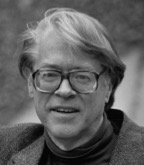
Rolf Fjelde grew up in Greenwich, Connecticut and graduated from Yale University where he was a founding editor of the Yale Poetry Review. After receiving an MFA at Columbia University, he received fellowships to study in Heidelberg and Copenhagen. In 1954 he joined the faculty of Pratt Institute in Brooklyn, where he was a Professor of Literature until his retirement in 1997. He was also on the faculty of the Juilliard Drama School from 1973 to 1983.
Fjelde published two volumes of poetry in 1955 and 1962 and first translated Ibsen in 1964, starting a translating career that culminated in Ibsen: The Complete Major Prose Plays in 1978 and Peer Gynt in 1980. In 1991, the King of Norway honored Fjelde for his translations with the medal of the Royal Norwegian Order of St. Olav and in 1993 the American Academy of Arts and Letters presented him with its Award in Literature. In 1978, as the Ibsen Sesquicentennial Symposium celebrating the 150th anniversary of Ibsen’s birth took place at the Pratt Institute, the Ibsen Society of America was started and Fjelde was elected its founding president. He held that office for 15 years and during that time founded Ibsen News and Comment, the journal of the Society which has been published annually since 1980. The Ibsen Society of America and its journal have provided a vital forum for actors, directors, scholars and critics involved with Ibsen. Fjelde has lectured nationally and internationally, often in connection with productions of his translations.
Harold Flender
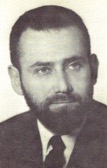
In addition to television scripts and documentaries, Flender wrote many educational and industrial films. He taught film writing at Columbia University, New York University, School of Visual Arts, The New School and was a guest lecturer at Centre d'Etudes de Radiodiffusion-Télévision Française, University of Dakar and Syracuse University. He was a member of P.E.N. and the Writers Guild East. In addition to Rescue in Denmark, Flender wrote two non-fiction books, We Were Hooked and The Kids Who Went to Israel. His works of fiction include To Be, Basso and his first published novel, Paris Blues, which was made into a major film. He was a contributor to Intellectual Digest, Saturday Review, Nation, New Leader, L’Express, Variety, Boy’s Life and other periodicals.
Raymond B. Fosdick
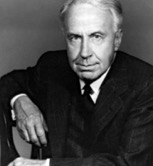
After graduating from New York Law School in 1908, Fosdick worked for the City of New York, soon becoming its top investigator. While investigating white slavery, he met John D. Rockefeller, Jr. (JDR Jr.) who was working with a special grand jury investigating the same issue. JDR Jr. hired Fosdick in 1913 to head up a study for the newly created Bureau of Social Hygiene, a Rockefeller philanthropy working to prevent social ills among the urban poor, including prostitution, venereal disease and crime. Fosdick’s study of European law enforcement was published as European Police Systems in 1916. In 1917 Fosdick studied military training for the US Army and Navy and then served as special representative of the War Department in France and as a civilian aide to General Pershing. After World War I Fosdick became Under-Secretary General of the League of Nations, a position he left in 1920 when the United States did not ratify its membership in the organization.
In 1920 Fosdick returned to the Bureau of Social Hygiene and was a close associate of JDR Jr., serving as his attorney and advisor, and in prominent roles in Rockefeller philanthropies. In 1921 Fosdick became board member of the Rockefeller Foundation, the Rockefeller Institute for Medical Research, the Laura Spelman Rockefeller Memorial, the China Medical Board and the International Health Division. In 1922 he became a member of the General Education Board, and in 1923 a member of the International Education Board. As a trustee of the Rockefeller Foundation, Fosdick played a key role in the Foundation’s reorganization in 1928, and in 1936 was named president of the Rockefeller Foundation and of the General Education Board.
With JDR Jr., Fosdick shaped the direction of the Rockefeller Foundation between 1936 and 1948, a period during which the Foundation contributed substantially to the research and control of malaria and yellow fever, to the modernization of China, to the development of the natural sciences, and started its first programs in the humanities and social sciences, and a revolutionary program in agriculture aimed at expanding crop production worldwide.
Fosdick’s contributions to public service and philanthropy were recognized by many awards, including the Distinguished Service Medal for his war work, and the titles of Commander in the French Legion of Honor and Fellow of the American Academy of Arts and Sciences. He is the author of fourteen books, including The Story of the Rockefeller Foundation and John D. Rockefeller, Jr.: A Portrait.
Peter Fraenkel

After graduation from the University of the Witwatersrand, South Africa in 1949, he joined the Central African Broadcasting Service, the first radio station to concentrate mainly on educational programs in African languages. However, as racist white-settlers movements appeared to become dominant, Fraenkel uprooted himself again in 1957 and moved to England where he joined the BBC as a scriptwriter. Later he became Greek Program organizer, Head of East European Services and, finally, Controller of European Services. In retirement he worked on AIDS prevention campaigns.
Fraenkel translated and edited the memoirs of his great-great-grandfather B.L. Monasch, a 19th century publisher/printer of Jewish books of devotion. His own writings include Wayaleshi, about broadcasting in Africa; No Fixed Abode and several radio plays submitted to the BBC under a nom-de-plume to obscure his seniority in that organization.
Felix Frankfurter
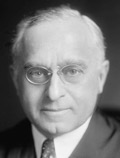
Frankfurter was a legal adviser to President Woodrow Wilson at the Paris Peace Conference (1919). Immediately after World War I, he was an active American Zionist and helped found the American Civil Liberties Union (1920). He delivered blistering attacks on the conviction of Sacco and Vanzetti, encouraged by Justice Louis Brandeis under an arrangement that was not revealed until 1982. Brandeis, from his appointment on the Supreme Court in 1916 corresponded frequently with Frankfurter until 1939, when FDR appointed Frankfurter to the Supreme Court, and sent him stipends for legislative research and activities such as the defense of Sacco and Vanzetti.
When FDR became president in 1933, Frankfurter, who had advised FDR when he was governor of New York, advised him on New Deal legislation and other matters. He served on the Supreme Court from 1939 until 1962 when he retired. In July 1963 President John F. Kennedy awarded him the Medal of Freedom. Among his books are The Business of the Supreme Court (with James Landis); Mr. Justice Holmes and the Supreme Court; The Case of Sacco and Vanzetti; and Felix Frankfurter Reminisces.
Erwin Frenkel
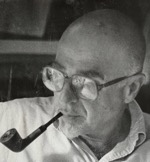
Otto Robert Frisch

On his return to the UK in 1945, Frisch was employed briefly at the then new Atomic Energy Research Establishment at Harwell. After a few years there, he was offered the post of Jacksonian Professor of Natural Philosophy at Cambridge University, a position he retained until his death in 1979. In Cambridge, a fellow of Trinity College, he pursued his research interests in the Cavendish Laboratory and helped develop scientific instrumentation. This led to the formation of LaserScan Limited which designed, developed and manufactured a machine for measuring bubble chamber tracks. He also wrote several books on physics and many articles and papers.
Besides working as a physicist and designer of scientific devices, Frisch was a family man, having married in 1951, with a son and daughter. He had a deep love of classical music and was an avid pianist.
Varian Fry
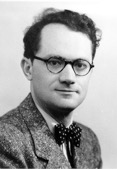
Fry went to Marseille in August 1940 for the newly formed Emergency Rescue Committee. There, he and a small group of colleagues helped over 1,500 anti-Nazis and Jews escape until Fry was expelled from France in September 1941 because Vichy and US State Department officials had become angered by his covert activities. Hiram Bingham, the American Vice Consul in Marseille issued thousands of legal and illegal visas, and the Unitarian Service Committee in Lisbon, through which many of Fry’s “clients” traveled before sailing to the US, assisted Fry’s efforts to save refugees — including prominent artists, scientists and intellectuals such as Hannah Arendt, Jean Arp, André Breton, Marc and Bella Chagall, Marcel Duchamp, Max Ernst, Lion Feuchtwanger, Jacques Hadamard, Konrad Heiden, Arthur Koestler, Claude Lévi-Strauss, Jacques Lipchitz, Bohuslav Martinů, Golo and Heinrich Mann, André Masson, Walter Mehring, Otto Meyerhoff, Max Ophüls, Peter Pringsheim, Jacques Schiffrin, Franz Werfel and Alma Mahler-Werfel.
Back in New York, Fry was strongly critical of US immigration policies, especially regarding Jews: his scathing “The Massacre of Jews in Europe” appeared in The New Republic in December 1942. After the war, Fry worked as a journalist, magazine editor and business writer. He also taught college and was in film production. Shortly before his death, France awarded Fry the Legion of Honor. In 1994 Fry became the first American recognized as a “Righteous among the Nations” by Yad Vashem, Israel’s national Holocaust Memorial.
Elinor Fuchs
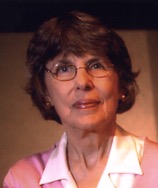
John Kenneth Galbraith
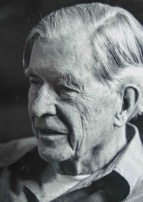
Galbraith became a US citizen in 1937, then spent a year as a research fellow at Cambridge University where he embraced Keynes’ new economic theories. After teaching economics at Princeton in 1939, Galbraith headed the price division in the Office of Price Administration in Washington where within two years, he managed to control the prices of virtually all goods and services in the country. Galbraith joined Fortune as a staff writer from 1943 to 1948, taking leave in 1945 to direct the US Strategic Bombing Survey, which concluded that the Allied bombing of Germany had been ineffective.
Galbraith worked on many political campaigns. He helped John F. Kennedy get elected President in 1960. Kennedy appointed him ambassador to India (1961-63). He advised Lyndon B. Johnson early in his administration but the escalating US involvement in Vietnam ended the relationship. In 1967, Galbraith became chairman of Americans for Democratic Action, a leading group opposing the Vietnam war. In 1968, he was a key supporter of Eugene McCarthy, whose candidacy helped drive Johnson from office. In 1972, he worked for George McGovern against Richard Nixon.
Galbraith's major economics books are American Capitalism (1952), The Affluent Society (1959), The New Industrial State (1967) and Economics and the Public Purpose (1973). His autobiography, A Life in Our Times, appeared in 1981.
Alexander and Juliette George
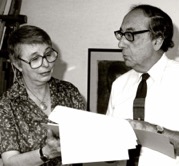
Juliette L. George (born in 1922) is a graduate of the University of California at Berkeley and Columbia University, and served during World War II as a propaganda analyst for the OWI in Washington and London. Later in Berlin and Munich, she edited political affairs reports for the Intelligence Branch of the Office of Military Government for Germany (U.S.). She was a senior scholar at the Institute for International Studies at Stanford University from 1984 until her retirement in 1990.
In addition to Woodrow Wilson and Colonel House: A Personality Study, the Georges co-authored numerous follow-up articles on Woodrow Wilson, and together wrote Presidential Personality and Performance (1998), which examines the leadership styles and decision making practices of presidents from Woodrow Wilson to Bill Clinton, and reflects the authors’ interest for over half a century in the impact of personality on the political behavior of our political leaders. The Georges’ work is among the first to bring theories from the field of psychology into the political science arena. Alexander and Juliette George have two children, Lee George and Mary Douglass (John), and two grandchildren, Juliette and Benjamin Douglass.
Josephine Clara Goldmark
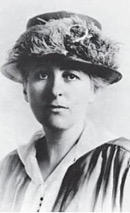
In 1911, Goldmark was part of the investigating committee into New York’s Triangle Shirtwaist Factory Fire. The Russell Sage Foundation published her book Fatigue and Efficiency in 1912, a study of the effects of long hours on workers’ health and job performance. During 1919-23, Goldmark researched the state of US nursing schools with funding from the Rockefeller Foundation. She published her research in Nursing and Nursing Education in the United States (1923), which was influential in modernizing American nursing education. Her biography of Florence Kelley, Impatient Crusader, was published posthumously in 1950.
Her sister, Pauline, was the secretary for the New York City office of the National Consumers League. Her sister, Alice, was married to Louis Brandeis.
Judith Goodstein
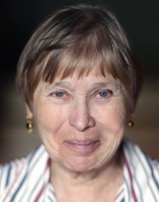
Samuel Goudsmit
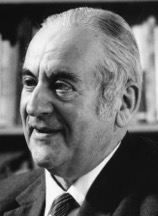
In 1941, as World War II loomed, Goudsmit took leave from Michigan to join staff working on radar at the MIT Radiation Laboratory supporting Allied military efforts. Because of his upbringing in the Netherlands, his facility with languages, and his close relationship with many European physicists, Goudsmit was recruited to become Chief of Scientific Intelligence of Alsos in 1944, the War Department’s secret mission that sent a select group of scientists, secret agents and soldiers into Europe just behind the Allied liberation forces. Their assignment was to determine Nazi Germany’s progress in developing an atomic bomb and to secure associated enemy scientists. In the book Alsos, Goudsmit’s historical memoir of that mission published in 1947, he concludes that the Nazis were not close to creating an atomic bomb.
After completing the Alsos mission in 1946, Goudsmit was briefly Professor at Northwestern University and joined the newly formed Brookhaven National Laboratory in 1948, where he was Physics Department Chairman. From 1951 to 1962 he was Managing Editor of the leading physics journal Physical Review. In 1958 he founded Physical Review Letters to provide rapid publication of emerging scientific findings and later became the first Editor‐in‐Chief of the American Physical Society. In 1974, he became Distinguished Visiting Professor at the University of Nevada in Reno, where he remained until his death.
Goudsmit also made scholarly contributions to Egyptology. The Samuel A. Goudsmit Collection of Egyptian Antiquities is at the University of Michigan's Kelsey Museum of Archaeology in Ann Arbor.
Howard Greenfeld
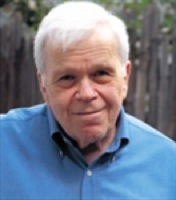
He has written twenty books for young adults, and biographies of Marc Chagall, Gertrude Stein, F. Scott Fitzgerald, Puccini, Caruso, and the art collector Albert C. Barnes. He was also the founder of Orion Press and published English-language translations of such writers as Italo Calvino, Primo Levi, and Jean Piaget.
Stephane Groueff
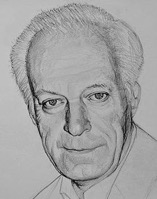
Groueff was a reporter for Paris-Match magazine, traveling extensively as a foreign correspondent, including to Antarctica, and became its New York Bureau chief for 20 years until 1978. He also worked for Radio Free Europe, was a contributor to the BBC’s Bulgarian Service and was active in émigré organizations in exile.
In 2002 the American University in Bulgaria, of which Stephane Groueff was one of the founding Board members, conferred on him the honorary degree Doctor of Humane Letters, and the President of the Republic of Bulgaria decorated him with the Order of the Madara Horseman. Groueff is the author of eight non-fiction books including Manhattan Project: The Untold Story of the Making of the Atomic Bomb, Crown of Thorns: The Reign of King Boris III of Bulgaria, 1918-1943, and My Odyssey, an autobiographical work.
Andrew Grove
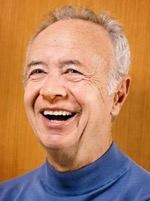
He was one of the three founders of Intel in 1968 and its CEO from 1987 until 1998: during that time, Intel grew from 19,200 to 64,500 employees and from $4 billion to $197 billion in market capitalization.
In 1997, Grove was named Time magazine’s “Man of the Year” for his key role in the growth in power of microchips and their innovative potential. After he was diagnosed in 2000 with Parkinson’s disease, he became a contributor to several foundations sponsoring research towards a cure.
Frederic V. Grunfeld
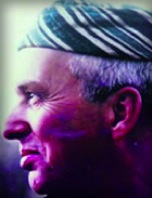
Sebastian Haffner
Sebastian Haffner was born in 1907 as Raimund Pretzel the last of four children. His father was headmaster of a Berlin school and a noted liberal school reformer. Pretzel studied law and received his doctorate in 1934. Although he was not Jewish he abandoned his planned career as a lawyer in public service when the Nazis came to power. Instead he worked as a non-political journalist.
In 1938 he and his pregnant fiancée, who was of Jewish descent and for that reason had been dismissed from her post as university librarian, managed to emigrate to the UK, where they were married. There he started to write a memoir about his youth in Weimar Germany and the rise of the Nazis. The book (Defying Hitler) was abandoned at the outbreak of war and replaced by another (Germany: Jekyll and Hyde) offering an analysis of Germany for the benefit of the allies. This book, published under the pseudonym Sebastian Haffner which he used for the rest of his life, procured his release from internment in the summer of 1940. In 1942 he became a journalist at the Observer and quickly made a reputation as a political thinker.
Haffner returned to Germany in 1954, initially as a correspondent for the Observer. There he became an important commentator on current affairs and a well-known television personality. In the 1960s he started writing historical books, mostly about 20th century German history, including The Ailing Empire: Germany from Bismarck to Hitler. His most important and successful book, The Meaning of Hitler, appeared in 1978. He retired in 1991 and died in 1999 aged 91. (Image of the author from Mein Vater III, 1986 by Sarah Haffner; oil on canvas, 75 x 100 cm, Stadtmuseum, Berlin).
Samuel B. Hand
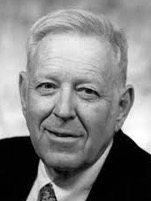
Hand originally focused on US political history, publishing the biography of FDR’s adviser and speechwriter Samuel I. Rosenman Counsel and Advise: A Political Biography of Samuel I. Rosenman (1979) and articles on Rosenman and other New Deal figures. His interests shifted to Vermont history, a field in which he became the acknowledged expert, authoring, coauthoring, and editing numerous articles and essays and five books, including The Star that Set: The Vermont Republican Party, 1865–1974 (2003), and with Stephen C. Terry and Anthony Marro Philip Hoff: How Red Turned Blue in the Green Mountains (2011).
Hand helped found the Center for Research on Vermont, serving as its first director. Beloved by his numerous graduate students, Hand was honored by the University of Vermont with the Graduate Faculty Teaching Award in 1994, and the University Scholar Award in 1989. He was vice president and then president of the Vermont Historical Society (1983-1989); the New England Association of Oral History (1983-1985); and the national Oral History Society (1984-1987). He also received the Oral History Society’s Harvey A. Kantor Memorial Award for Significant Work in Oral History in 1986.
Oscar and Lilian Handlin
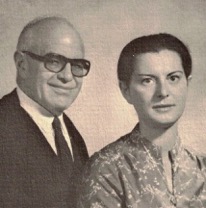
Lilian Handlin (PhD Hebrew University of Jerusalem, MA Brown University, BA Queens College, City University of New York) was associate professor at the Hebrew University of Jerusalem (1970-77). Her interests focus on the intersection between social history and the history of ideas. She is the author and co-author of several books, including George Bancroft: Intellectual as Democrat (1984) and Abraham Lincoln and the Union (1980). Her most important publication, collaborated with her husband was the four-volume Liberty in America, 1600 to the Present (1986-1994). She was also responsible for the publication of the second edition of her husband's The Distortion of America (1996). Lilian Handlin's articles and reviews have appeared in several academic and popular journals, including the American Scholar, the New England Quarterly, Perspectives in American History. Most recently she has published a number of articles investigating pre modern Myanmar history, as revealed in the substantial remains of its material culture. Between the 9th and 11th century, a powerful kingdom that called itself Arimadana extended its sovereignty over wide areas in southeast Asia, at a time when its monarchs resided in what later generations called Pukkan, located in upper Burma's dry zone.
Lawrence Harmon
Lawrence Harmon writes editorials and a weekly column for the op-ed page of the Boston Globe. Before joining the editorial board of the Boston Globe in 1992, he was editor of the Citizen Group papers and wrote for the old Boston Ledger and Jewish Advocate. He co-authored The Death of an American Jewish Community: A Tragedy of Good Intentions (1992). Harmon writes extensively on urban affairs, education, law enforcement issues, and housing policy. He has a BS from Boston University’s Metropolitan College, and an MA from Simmons College. (drawing: Boston Globe)
Hugh Hawkins
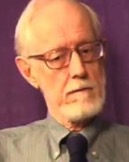
At Amherst, Hawkins held a joint appointment as professor of history and American studies. A civil rights activist, he flew to Selma, Alabama, in the summer of 1965 to participate in protests, and heard the Rev. Martin Luther King Jr. speak during a training session in Atlanta. Back at Amherst, he worked to expand diversity and to introduce African-American studies in the curriculum.
His first major book, Pioneer: A History of the Johns Hopkins University, published in 1960 received the American Historical Association’s Moses Coit Taylor Prize for best manuscript in intellectual history. His other books are Between Harvard and America: The Educational Leadership of Charles W. Eliot, Banding Together: The Rise of National Associations in American Higher Education, 1887-1950, and the more personal Railwayman’s Son: A Plains Family Memoir, They Spoke, I Listened: A Life in Quotes, and The Escape of the Faculty Wife and Other Stories.
As a gay professor who started teaching when his sexual orientation could end his career, Hawkins began in 1958 a long-term relationship with Walter Richard, with whom he shared a home in Plainfield, Massachusetts until Richard died in 2012.
Hans Heiberg
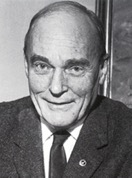
Anthony Heilbut
Anthony Heilbut, born in New York City in 1940, the son of German-Jewish refugees, graduated from Queens College and received his Ph.D. in English Literature from Harvard University. He taught at New York University and Hunter College. Since 1976 he has been a full-time writer and record producer. His first book, The Gospel Sound: Good News and Bad Times, appeared in 1971. Other books include Exiled in Paradise: German Refugee Artists and Intellectuals in America from the 1930s to the Present (1983, 1997); Thomas Mann: Eros and Literature (1996, 1997); and The Fan Who Knew Too Much: Aretha Franklin, The Rise of the Soap Opera, Children of the Gospel Church, and Other Meditations (2012). Heilbut’s work has appeared in Harper’s Magazine, The Nation, The New Yorker, The Village Voice, The Daily Beast, The New York Times Book Review and The Los Angeles Times Book Review. As a record producer, Heilbut specializes in black gospel music. He has produced over fifty albums for various labels.
Albert P. Heiner
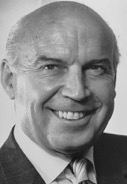
Heiner spent 30 years with Kaiser Steel Corporation, the last 18 as Vice President, before retiring from his chosen field of Traffic and Transportation. Based on his experience, he wrote a biography of industrialist Henry J. Kaiser. During his career he served as President of the American Society of Traffic and Transportation, the Transportation Club of San Francisco and the National Freight and Transportation Club. He served on the University of Utah National Advisory Council and the Harvard Business School Association of Northern California. He also served as President of the Oakland Symphony Association, the Junior Achievement of the East Bay and the University of Utah Alumni of Northern California.
Heiner was Executive Producer of “The Great American Cowboy” that won the 1974 Academy Award for Best Feature Length Documentary. He co-founded the League to Save Lake Tahoe and co-created their well-known logo, “Keep Tahoe Blue”. He water skied on the lake into his seventies.
Ernest Heppner

They immigrated to the United States in 1947 and settled in Indiana where Heppner worked for Monroe-Litton Corp. as a systems manager, and for RANAC Computer Corp. as Vice President and General Manager until his retirement in 1986. The author of Shanghai Refuge: A Memoir of the World War II Jewish Ghetto, Heppner received in 1997 the honorary degree of Doctor of Humane Letters from Indiana University. A documentary, “Victory Heppner”, describing his life has been televised on PBS.
James Hershberg

Hershberg’s most recent book is Marigold: The Lost Chance for Peace in Vietnam, co-published by Stanford University Press and the Wilson Center Press in 2012. The Washington Post named Marigold, which examines secret diplomacy during the war using long-secret communist sources, as one of the best ten books (and top five non-fiction books) of the year. He has written extensively on the Cuban Missile Crisis, and is currently working on a study of Cuba, Brazil, and the Cold War and Revolution in Latin America.
Chaim Herzog
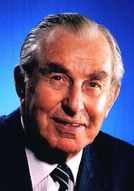
In 1972, Herzog co-founded Herzog, Fox & Neeman, now one of Israel’s largest law firms. In 1975-78, Herzog represented Israel at the UN, where he fought the UN “Zionism is Racism” resolution, tearing it up symbolically before the General Assembly. In 1981, Herzog entered the Knesset as a member of Israel’s Alignment, the predecessor to the Labour Party. In 1983, he was elected President of Israel and served for two terms, until 1993, the maximum allowed by law. His son Isaac Herzog has led Israel’s Labour Party and the opposition to Benjamin Netanyahu in the Knesset since 2013.
Godfrey Hodgson
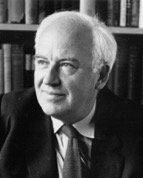
Hodgson has worked as a reporter all over Europe, in India, the Middle East and West Africa, but the main focus of his work has been the United States. He wrote TV documentaries about George Wallace and Ronald Reagan. As a foreign correspondent he wrote about the news of the day, but as a freelance reporter, he mostly focused on race and foreign policy issues.
As a young man, Hodgson had met Martin Luther King, Jr., who later helped him with great generosity. Hodgson was present at all the main confrontations over race in the South and he made a TV documentary about race in New York in the 1970s. He has watched with some discomfort the evolution of American foreign policy from the Kennedy years as the United States became involved in one long-drawn out conflict after another. Many wise Americans helped in his education in this field: one, Daniel Patrick Moynihan, whose biography, The Gentleman From New York, he wrote, became a close personal friend. Hodgson has taught at Harvard, Yale, and other American universities, and lectured frequently in the United States.
Eva Hoffman
Eva Hoffman grew up in Cracow, Poland, where she studied piano at the Cracow School of Music, before emigrating in her teens to Canada and then the United States. After receiving her Ph.D. in English and American literature from Harvard University, she worked as senior editor at the New York Times, serving for a while as one of its main literary critics. She has taught literature and creative writing at various universities, and has written and lectured internationally on issues of exile, memory, Polish-Jewish history, politics and culture. Her books include Lost in Translation, After Such Knowledge and Time, as well as two novels, The Secret, and Appassionata. She has presented radio programs and curated a series on "Writing and Music" at the South Bank Centre in London. She is the recipient of the Guggenheim Fellowship and an award from the American Academy of Arts and Letters, the Kosciuszko Foundation award for Shtetl, and the Prix Italia for radio. She now lives in London.
Banesh Hoffmann
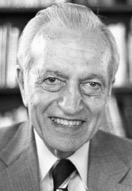
Hoffmann was a gifted expositor of science, noted for his ability to explain and popularize the complex theories of modern physics to the general public. The British scientific magazine Discovery wrote about The Strange Story of the Quantum (1947), Hoffmann’s first book: “This book should become one of the great classics of popular but intelligent science writing...” Yale Professor Henry Margenau added: “Of the books attempting an account of the history and contents of modern atomic physics which have come to my attention, this is the best.”
Hoffmann worked in various areas, including relativity, quantum theory, and applications of tensor analysis to electrical engineering. An accomplished amateur pianist, he played on occasion piano-violin duets with fellow amateur musician Einstein. He was a Sherlock Holmes “Baker Street Irregular” and wrote the short story Sherlock, Shakespeare and the Bomb. An early and persistent critic challenging the scientific validity of standardized multiple-choice testing, he served for 25 years as a consultant on tests for the Westinghouse Science Talent Search and published The Tyranny of Testing (1962). His Albert Einstein: Creator and Rebel, written with the collaboration of Helen Dukas, Einstein’s secretary since 1927 until his death in 1955, first appeared in 1972.
Banesh Hoffmann was married to Doris Goodday and had two children, Laurence, a mathematician and financial advisor, and Deborah, an award-winning documentary filmmaker.
Anthony Holden

Holden started his journalism career at the regional newspaper Hemel Hempstead Evening Post-Echo, covering the trial of the psychopathic poisoner Graham Young in St Albans. His book on the case, The St. Albans Poisoner (1974), was filmed as “The Young Poisoner’s Handbook” (1995). Named Young Journalist of the Year in 1972, he was on the staff of The Sunday Times (1973–79), was named News Reporter of the Year in 1976 for his work in Northern Ireland, and was Columnist of the Year in 1977. He was Washington Correspondent and US editor of The Observer (1979–81), Assistant Editor of The Times (1981–82), Executive Editor, Today (1985–86), and chief classical music critic of The Observer (2002–08).
His several books about the British monarchy include Prince Charles: A Biography (1979), Their Royal Highnesses: The Prince & Princess of Wales (1981), A Week in the Life of the Royal Family (1983), Anthony Holden’s Royal Quiz (1983), Charles (1988; serialized in The Sunday Times), and The Tarnished Crown (1993). His other books are Laurence Olivier (1988), Behind the Oscars: The Secret History of the Academy Awards (1993), William Shakespeare: The Man Behind the Genius (2000), the memoir Based on a True Story: A Writer’s Life (2021) and The Man Who Wrote Mozart: The Extraordinary Life of Lorenzo Da Ponte (2006).
In 1999–2000 Holden was an inaugural Fellow of the Center for Scholars and Writers at the New York Public Library. He served on the Board of Governors of the South Bank Centre (2002–08) and was a Trustee of the Shakespeare North Trust. Holden has also made frequent appearances on television, presenting documentaries such as “Charles at Forty” (ITV, 1988), “Anthony Holden on Poker” (BBC 2, 1991) and “Who Killed Tchaikovsky?” (Omnibus, BBC 1, 1993). In the mid-1980s, he presented a weekly BBC Radio 4 chat show, “In the Air”.
Holden spent a year playing poker professionally while researching his 1990 book Big Deal: A Year as a Professional Poker Player, which covers his experiences between the World Series of Poker (WSOP) tournaments in 1988 and 1989. His 2007 book Bigger Deal: A Year Inside the Poker Boom is a journal of his second stint as a professional player, between the 2005 and 2006 WSOP events.
Richard Hough
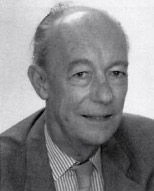
His work as a publisher inspired him to turn to writing himself in 1950, and he went on to write more than ninety books over a long and successful career. Best-known for his works of naval history and his biographies, he also wrote war novels and books for children (under the pseudonym Bruce Carter), all of which sold in huge numbers around the world. His works include The Longest Battle: The War at Sea 1939-45, Naval Battles of the Twentieth Century and best-selling biographies of Earl Mountbatten of Burma and Captain James Cook. Captain Bligh and Mr Christian, his 1972 account of the mutiny on the Bounty, was the basis of the 1984 film The Bounty, starring Anthony Hopkins and Mel Gibson.
Hough is the official historian of the Mountbatten family and a longtime student of Churchill. Winston Churchill figures prominently in nine of his books, including Former Naval Person: Churchill and the Wars at Sea. He won the Daily Express Best Book of the Sea Award in 1972.
David Hounshell
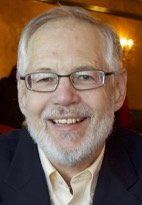
Hounshell is David M. Roderick Professor, Emeritus, of Technology and Social Change at Carnegie Mellon University, where he is a member of the Department of Social & Decision Sciences and the Department of Engineering & Public Policy. His teaching career at Carnegie Mellon spanned more than twenty-five years. He served previously on the faculties of Harvey Mudd College (1977-79) and the University of Delaware (1977-91), was a guest professor at the Deutsches Museum in Munich (1991), and Chalmers Technological University in Gothenburg, Sweden (1998), and held a Marvin Bower Fellowship at Harvard Business School (1977-78). In addition to his book From the American System to Mass Production, 1800-1932, Hounshell co-authored (with John Kenly Smith, Jr.) Science and Corporate Strategy: DuPont R&D, 1902-1980. He has also published works on nineteenth-century electrical inventors, Cold War era scientific and engineering research, government-funded computer innovation, and environmentally-related technology forcing.
Hounshell was elected a Fellow of the American Association for the Advancement of Science and served as vice president and president of the Society for the History of Technology (SHOT). He was awarded SHOT’s highest honor, the Leonardo da Vinci Medal in 2007 and its Dexter Book Prize in 1987 for From the American System to Mass Production, was a recipient of the Business History Conference’s Harold Williamson Medal (1992) and its Newcomen Society Book Prize for Science and Corporate Strategy, and named the IEEE’s Browder J. Thompson Award recipient in 1978 for an article on the simultaneous invention of the telephone in the Proceedings of the IEEE. Hounshell is a Life Member of IEEE.
At Carnegie Mellon, Hounshell directed the NSF-funded Graduate Research and Training Program in Cold War Science and Technology in the Department of History (late 1990s to early 2000s). He directed or co-directed the dissertations of almost thirty students in history, entrepreneurship, and engineering & public policy. (Photo by Sandy Choi, 2015, all rights reserved.)
Kathryn Hulme
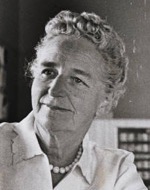
Hulme worked as an electric arc welder at the Kaiser shipyards during World War II. After the war, she spent six years in Germany as deputy director of United Nations Relief and Refugee Association (UNRRA) field teams. The Wild Place, which won the 1952 Atlantic non-fiction prize, describes conditions at the Wildflecken refugee camp. While there, Hulme met Marie-Louise Habets, a Belgian nurse and former nun who became Hulme’s lifelong companion and whose experiences were the basis for Hulme’s The Nun’s Story (1956), which became a best-seller.
Hulme’s other books are We Lived As Children (1938) which describes a child’s perspective of San Francisco after the 1906 earthquake, Annie’s Captain (1961), a fictionalized account of her grandparents’ lives, Undiscovered Country (1966), a memoir of her years as a student of mystic G. I. Gurdjieff and her eventual conversion to Catholicism, and Look a Lion in the Eye (1973) about her 1971 safari in East Africa. From 1960 until her death, Hulme lived on the island of Kauai with Marie-Louise Habets.
J.C. Hurewitz
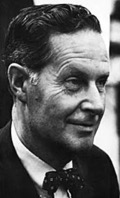
Because of his language skills, Hurewitz then worked successively for the Near East section of the Office of Strategic Services during World War II, at the State Department, as a political adviser on Palestine to the president’s cabinet, and for the United Nations secretariat. He joined Columbia in 1950 where he directed its Middle East Institute from 1970 until his retirement in 1984. In 1972, Hurewitz established the Columbia Seminar on the Middle East, which he continued to chair until he was nearly 90.
Besides The Struggle for Palestine, a revision of his doctoral thesis, Hurewitz’s books include Diplomacy in the Near and Middle East, The Middle East and North Africa in World Politics, Middle East Politics: The Military Dimension and Soviet American Rivalry In The Middle East.
Wilma Iggers
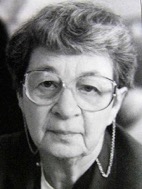
Wilma Iggers and her husband of over 66 years Georg Iggers had distinguished careers as American university professors. After their retirement, they pursued research, dividing their time between Buffalo and Göttingen.
Fred Charles Iklé

Iklé taught political science at MIT (1964-67). He also worked at the RAND Corporation and at Harvard University’s Weatherhead Center for International Affairs, where he met Henry Kissinger, who as Richard Nixon’s national security advisor, recruited Iklé to government service in 1973. Iklé headed the U.S. Arms Control and Disarmament Agency (1973-77). As Under Secretary of Defense for Policy in the Reagan administration (1981-87), he led the effort to lobby for National Security Decision Directive 166 (“Expanded US Aid to Afghan Guerrillas”) and to supply the rebels with Stinger missiles, a proposal initially opposed by the CIA, the State Department, and the Joint Chiefs of Staff. Iklé is credited with a key role in increasing US aid to anti-Soviet rebels in the Soviet–Afghan War.
In 1988, Iklé joined the Center for Strategic and International Studies (CSIS). He was a Commissioner on the National Commission on Terrorism, and served for nine years as Director of the National Endowment for Democracy. He was a member of the Council on Foreign Relations and of the Department of Defense’s Defense Policy Board Advisory Committee.
He also co-chaired the bipartisan Commission on Integrated Long-Term Strategy, which published the remarkably prescient “Discriminate Deterrence” strategy document in January 1988. In 1975 and 1987, Iklé received the Department of Defense’s highest civilian award, the Medal for Distinguished Public Service and in 1988, the Bronze Palm. He served as chairman of the Board of the Telos Corporation and as a director of the Zurich-American Insurance Companies. He was a Director of CMC Energy Services and served as Governor of the Smith Richardson Foundation and as founding Director of the US Committee for Human Rights in North Korea (HRNK).
Iklé authored numerous articles on defense, foreign policy and arms control, including his influential 1961 “After Detection — What?” in Foreign Affairs, and several books including How Nations Negotiate and Every War Must End.
Annette Insdorf
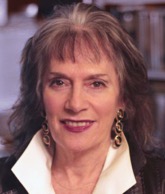
After her book François Truffaut appeared in 1978, she served as Truffaut’s translator. Considered an authority on the French New Wave, she provided voice-over commentary for the DVDs of Truffaut’s Shoot the Piano Player, Jules and Jim, and The Last Metro, and was interviewed in the 1993 French documentary, François Truffaut: Stolen Portraits. Her other books are Indelible Shadows: Film and the Holocaust, a landmark study which appeared in a revised edition with a preface by Elie Wiesel and received the National Board of Review’s William K. Everson Award in Film History for its updated third edition; Double Lives, Second Chances: The Cinema of Krzysztof Kieślowski; Philip Kaufman published as part of the “Contemporary Film Directors” series, the first book about the director of The Unbearable Lightness of Being and The Right Stuff; Intimations: The Cinema of Wojciech Has; and Cinematic Overtures: How to Read Opening Scenes.
Sheila Isenberg
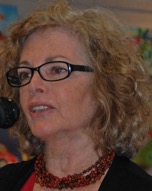
Isenberg is the author of Muriel’s War: An American Heiress in the Nazi Resistance, A Hero of Our Own: The Story of Varian Fry and the groundbreaking Women Who Love Men Who Kill. With the late William Kunstler, she is co-author of My Life as a Radical Lawyer. She also wrote a biography of Ron Brown, the commerce secretary under President Bill Clinton, The Life and Times of Ron Brown, A Memoir by His Daughter Tracey L. Brown.
Her books have been reviewed widely and she has appeared in many documentaries and in countless interviews including on NPR, CNN, 20/20, The Today Show, and Good Morning America. She is a member of PEN, the Authors’ Guild, and Women Writing Women’s Lives biographers’ seminar.
George Jellinek
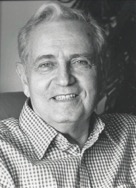
Born in Budapest, he took violin lessons starting at age 5 and later accompanied the traveling Gypsy bands that serenaded diners at his father’s restaurant. Upon hearing his first “Traviata” as a teenager, he became an avid (in his words, “almost insane”) operagoer, attending over a hundred performances a year.
Jellinek left Hungary as a young man in 1939, initially for Havana, Cuba and two years later for the United States. He served as an Army intelligence officer and translator during WWII. Returning to New York after the war, he took an office job but spent so much time hanging out in a music store that he was hired as an employee. From there his career took off. He began writing reviews for Stereo Review and articles for Opera News. Callas: Portrait of a Prima Donna (1960; 1986) was his first book, followed by History Through the Opera Glass (1994; 2000).
Alvin Johnson
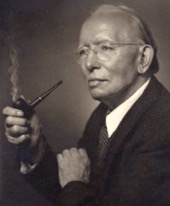
In 1922, Johnson was among the founders of The New School for Social Research, became its director, and later, president, a position he held until 1946. Under his leadership, The New School grew into one of the nation’s most important centers of adult education, as well as a leader in the social sciences. While working as associate editor on The Encyclopaedia of the Social Sciences, Johnson came into close contact with European scholars, and became acutely alert to the threat posed by the rise of Hitler in Nazi Germany. This led Johnson to mount a campaign to rescue scholars whose professional success, livelihoods, and, increasingly, lives, were endangered. In 1933, largely supported by the benefactor Hiram Halle, Johnson finally successful in his efforts, established the University-in-Exile at The New School (later called the Graduate Faculty of Political and Social Science); later, during World War II, he also invited exiled French scholars to reestablish the Ecole Libre at The New School.
A prolific writer before and after his retirement, Johnson’s autobiography, Pioneer's Progress, was published in 1952. Johnson died in Nyack, New York.
James Joll
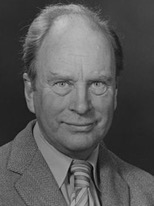
In 1967 Joll left St Antony’s, Oxford to teach at the London School of Economics, as the Stevenson Professor of International History. His books include Europe Since 1870: an International History, The Origins of the First World War, Three Intellectuals in Politics: Blum, Rathenau, Marinetti, and books on Italian Marxist intellectual Antonio Gramsci and on the history of anarchism and socialism. Joll was elected a Fellow of the British Academy in 1977. Following his retirement in 1981, he became Emeritus Professor of the University of London.
Ernest Jones
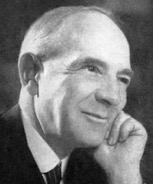
Matthew Josephson
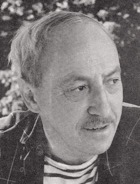
His first book was a biography of Émile Zola, Zola and His Time: The History of His Martial Career in Letters (1928). Interested in 19th-century French literature, he also wrote the biographies Victor Hugo (1942) and Stendhal (1946). His books about American economic history include The Robber Barons: The Great American Capitalists, 1861–1901 (1934), which chronicles the lives of late 19th century barons of industry like John D. Rockefeller and Andrew Carnegie, Edison: A Biography (1959) and The Money Lords: The Great Finance Capitalists, 1925–1950 (1972). Josephson wrote two memoirs, Life Among the Surrealists (1962) and Infidel in the Temple (1967), and with his wife Hannah, a biography of Al Smith. He was elected a member of the National Institute of Arts and Letters in 1948.
Peter Stephan Jungk
Peter Stephan Jungk was born in Los Angeles, raised in several European cities, and now lives in Paris where he writes in German. A former screenwriting fellow of the American Film Institute, he is the author of eight books, including Franz Werfel: A Life in Prague, Vienna and Hollywood (1990) and the novels Snowflake Constant, a finalist for the British Foreign Book Award, and The Perfect American, a fictional biography of Walt Disney's last months, made into an opera by Philip Glass that will premiere in 2013.
E.J. Kahn, Jr.
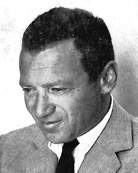
Kahn's long career with the magazine resulted in 27 books on subjects such as Coca-Cola, Lesley J. McNair, the Trust Territory of the Pacific Islands, Harvard University, the Korean War, John Hay Whitney, Herbert Bayard Swope, David Rockefeller, Frank Sinatra, Dwayne O. Andreas of Archer Daniels Midland, Arthur D. Little, South Africa, and the Postal Inspection Service.
Kahn taught writing at Columbia University from 1974 to 1977. His book The New Yorker and Me is a diary interspersed with memories of his life, the magazine, and its editor William Shawn. His 1987 diary was released as Year of Change: More about the New Yorker and Me.
Robert H. Kargon
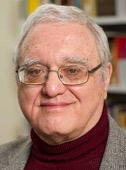
His first book, Atomism in England from Hariot to Newton (1966), dealt with the Scientific Revolution. Subsequently his historical interests broadened and moved forward in time. His other books include The Maturing of American Science (1974), Science in Victorian Manchester: Enterprise and Expertise (1977), The Rise of Robert Millikan (1982), Invented Edens: Techno-Cities of the 20th Century [with Arthur Molella] (2008), Urban Modernity: Cultural Innovation in the Second Industrial Revolution [with Miriam Levin et al.] (2010), and World’s Fairs on the Eve of War: Science, Technology and Modernity [with Karen Fiss et al.] (2015).
Kargon organized (with Paul Hanle of the Air and Space Museum) the Space Telescope History Project, with NASA’s support, and placed a “combat historian” on the Hubble Space Telescope Project headed by Riccardo Giacconi while the project was developing. Kargon was a contributor to the resulting book The Space Telescope (1989) by Robert Smith that was published before the launch in 1990.
He lives in Baltimore with his wife and near his two adult children.
Theodore von Kármán and Lee Edson
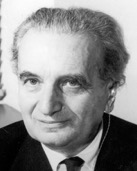
After spending World War I in the Austro-Hungarian fledgling air corps, where he developed the first ever helicopter, tethered to the ground, that was able to maintain hovering flight, von Kármán returned to Aachen where he led what became one of Europe’s major aerodynamics research centers. After philanthropist Daniel Guggenheim funded a new aeronautical laboratory at Cal Tech in 1926, Robert Millikan offered von Kármán its directorship, which von Kármán accepted in 1930 in part due to the rise of Nazism and antisemitism in Germany. His Cal Tech laboratory, the most prominent in the world of aeronautical sciences, became the NASA Jet Propulsion Laboratory.
By the end of his scientific career during which he made major contributions to aviation and space technology, aerodynamics, and improved aircraft performance, von Kármán had published more than 200 papers, advanced scientific collaboration from world leading scientists, developed many unique theories of aeronautical and space science, and played an important role in the creation of supersonic aircraft and ballistic missiles. In 1963, President Kennedy awarded von Kármán the first National Medal of Science.
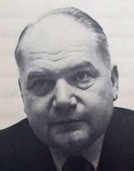
Edson first met Theodore von Kármán in 1956 when he interviewed him for an article the Saturday Evening Post published in 1957. They became friends and during a visit at his Pasadena home, von Kármán asked Edson to help him write his autobiography — von Kármán later said “Lee writes and I read” — which Edson completed in 1967, four years after von Kármán’s death.
Shmuel Katz
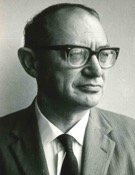
George F. Kennan
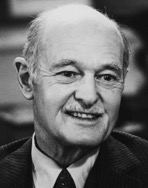
Interned briefly by the Nazis at the outbreak of World War II, Kennan was released in 1942 and subsequently filled diplomatic posts in Lisbon and Moscow during the war. Kennan's “Long Telegram,” sent from Moscow in February 1946, enunciated the “containment” policy; it was widely read in Washington and brought Kennan much recognition. He returned to the United States, and in 1947 Secretary of State George C. Marshall asked Kennan to create the State Department’s Policy Planning Staff, of which he became the first director. He played a key role in drafting what would be known as the “Marshall Plan” for the reconstruction of Europe. Kennan clarified his views on containment in a highly influential article, signed “X,” published in Foreign Affairs in July 1947: in it, Kennan questioned the wisdom of the United States’ attempts to appease the Soviet Union and advocated US counterpressure wherever the Soviets threatened to expand. This view subsequently became the core of US policy toward the Soviet Union.
Kennan became counselor to the State Department in 1949, but resigned in 1950 to join the Institute for Advanced Study at Princeton. He returned to Moscow in 1952 as US ambassador but came back to the US in 1953 after the Russians declared him persona non grata for remarks he made about Soviet treatment of Western diplomats. In 1956 he became permanent professor of historical studies at the Institute in Princeton, a tenure broken only by a stint as US ambassador to Yugoslavia (1961-63). In the late 1950s Kennan revised his containment views, advocating instead a program of US “disengagement” from areas of conflict with the Soviet Union. He later emphatically denied that containment was relevant to other situations in other parts of the world such as Vietnam.
Kennan won simultaneous Pulitzer Prizes and National Book Awards for Russia Leaves the War (1956) and Memoirs, 1925-1950 (1967). Other autobiographies include Memoirs, 1950-1963 (1972), Sketches from a Life (1989), and At a Century’s Ending: Reflections, 1982-1995 (1996). In addition to numerous honors, including honorary degrees from Oxford, Harvard, Yale and Princeton and the Albert Einstein Peace Prize in 1981, Kennan was awarded the Presidential Medal of Freedom in 1989.
Bernice Kert
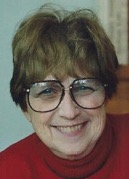
Ernest J. King and Walter Muir Whitehill
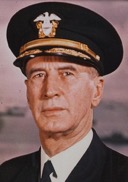
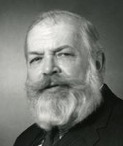
Egon Erwin Kisch
Prague-born Egon Erwin Kisch (1885-1948) established narrative non-fiction as an art form in Central Europe. The son of a Jewish draper, he became a journalist and part of a circle of writers that included Franz Werfel, Max Brod, Rainer Maria Rilke, Hugo Bergmann and Franz Kafka. Their literary hybrid of Czech, Jewish and German cultures was unique and they were mocked for sitting in cafés where they “werfelt und brodet und kafkat und kischt.”
Kisch attended technical university, dropped out, and studied journalism in Berlin. After returning to Prague, he became police reporter for the German-language paper Bohemia from 1906 to 1913. His muckraking features ran under the headline “Roaming Through Prague” and explored the city’s underworld of bars, dives, gambling dens, prostitutes and murderers. His first major scoop was the story behind the sensational forced suicide of Colonel Alfred Redl, intelligence officer in the Austro-Hungarian army, in 1913. A homosexual, Redl had been blackmailed into spying for Russia. Kisch served in World War I and was wounded in action. He kept a diary, later published as Write It Down Kisch! His military experience further radicalized him and in 1918, Kisch participated as a Red Guard in a failed putsch in Vienna. He returned to Prague journalism and theater, but was drawn to Berlin. In Weimar Germany, his “literature of fact” became part of the Neue Sachlichkeit (New Objectivity) cultural movement.
In 1924, his collection of pieces Der rasende Reporter (The Raging Reporter) became a bestseller, followed by many other books of reportage from Europe, North Africa, the Soviet Union, China, and the U.S. The Nazis arrested Kisch, a Communist and a Jew, in 1933 and deported him to Czechoslovakia. His books were banned. That year, he wrote Tales from Seven Ghettos, accounts of Jewish communities from the Thirty Years’ War until the 1930s. Kisch was himself a secular Jew whose family claimed descent from Rabbi Loew, the Maharal of Prague. Kisch inspected the attic of Prague’s Old-New Synagogue for traces of the Golem.
In 1934, he sailed to Australia for an anti-war congress, was denied entry, but jumped off the boat, and broke his leg. The “Kisch Affair” became a cause célèbre, raising Australian awareness of Nazism. Kisch wrote it up in Australian Landfall before going to Spain to report on the Spanish Civil War. In 1939, Kisch fled to New York, was detained at Ellis Island and denied residence in the U.S. He and his wife Gisela spent the war in Mexico City where he completed his memoir Sensation Fair as Stefan Zweig was writing The World of Yesterday in Petropolis, Brazil. Unlike Zweig, Kisch lived to see Nazism defeated. In 1946, he returned to his birthplace a hero. He died in Prague in March of 1948.
Ronald Kline
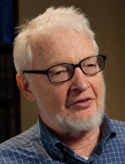
The author of numerous articles on the history of engineering, industrial research, technology in rural life, and information science and technology, as well as engineering ethics, he is past president of the Society for the History of Technology (SHOT) and the IEEE Society for the Social Implications of Technology, and former chief editor of IEEE’s Technology & Society Magazine. In 2016, SHOT awarded him its highest honor, the Leonardo da Vinci Medal, for contributions to the history of technology. He is the author of three books, Steinmetz: Engineer and Socialist (1992), Consumers in the Country: Technology and Social Change in Rural America (2000), and The Cybernetics Moment, Or Why We Call Our Age the Information Age (2015), all published by Johns Hopkins University Press.
Richard Kluger
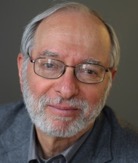
As a moonlighting author, Kluger published two novels, When the Bough Breaks and National Anthem, satirizing American social mores. Moved by the social upheavals sweeping across the US in the 1960s, Kluger left book publishing and devoted six years, starting in 1968, to researching and writing Simple Justice (1976), generally regarded as the definitive account of the US Supreme Court’s 1954 landmark Brown v. Board of Education decision outlawing racially segregated public schools. His second nonfiction work was The Paper: The Life and Death of the New York Herald Tribune (1986). Both were National Book Award finalists. Ashes to Ashes, his following book, is a critical history of the cigarette industry and its lethal toll on the public’s health; it won the Pulitzer Prize for general nonfiction in 1997. Kluger went on to write three other works of history, dealing with the relentless expansion of America’s national boundaries, a tragic mid-19th century clash between white settlers and tribal natives in territorial Washington, and the 1735 trial of John Peter Zenger and the origins of press freedom in the New World.
Of his seven novels, the most widely read are Members of the Tribe and The Sheriff of Nottingham, both anchored in historical events. Two of his novels were co-authored with his wife Phyllis, who often assisted him with research for his historical works. The Klugers have lived near San Francisco since 2003.
Anna Klumpke
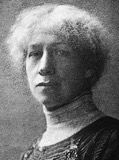
Anna studied art at home, and in 1877 moved with her family to Paris, where she later enrolled in the Académie Julian (1883-1884). She copied paintings in the Musée du Luxembourg, including Rosa Bonheur’s Ploughing in the Nivernais. She presented her first work at the Paris Salon in 1884, and won the grand prize for outstanding student that year. After completing her studies, she returned to the United States for a few years and taught in Boston. By 1889, she was back in Paris.
Since childhood, Anna had been fascinated by French woman artist Rosa Bonheur. Intent on painting Bonheur’s portrait, she met Rosa Bonheur in 1889, under the pretext of being the interpreter for a horse dealer. The two women were soon living together at Bonheur’s estate in Thomery near Fontainebleau, and their relationship endured until Bonheur’s death in 1899. Klumpke was named sole heir to Bonheur’s estate and oversaw the sale of Bonheur’s collected works in 1900. She founded the Rosa Bonheur Prize at the Société des Artistes Français and organized the Rosa Bonheur museum at the Fontainebleau palace.
Following Bonheur’s death, Klumpke divided her time between France, Boston, and San Francisco, finally settling in San Francisco in the 1930s. During World War I, she established with her mother a military convalescent hospital at her home in Thomery. In 1940, Klumpke published her autobiography Memoirs of an Artist. She is buried alongside Rosa Bonheur at Père Lachaise Cemetery in Paris.
G. Wilson Knight

He taught at the Stowe School from 1941 until 1946 and then at Leeds University until his retirement in 1962, first as Reader and starting in 1956 as Professor of English. Eccentric, powerfully original, and an outstanding lecturer, Knight was mainly fascinated by mythical patterns and meanings in literature. His The Wheel of Fire, Interpretations of Shakespearian Tragedy (1930) is one of the most influential books in the field. Knight was also a producer and actor in Shakespearean plays. His staging of Shakespeare was noted for its emphasis on color and symbolism. He also wrote plays for the British stage and television. A believer in spiritualism, Knight was a vice-president of the Spiritualist Association of Great Britain.
Amos Kollek
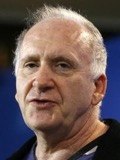
While studying at the Hebrew University for his BA in Psychology and Philosophy he wrote his first novel, Don’t Ask Me if I Love, which was published in the US and won the M. Evans Award for Fiction. He wrote four more novels and two non-fiction books, including For Jerusalem, A Life in which he collaborated with his father, Teddy Kollek, on his autobiography.
In 1968 Kollek turned to filmmaking. He wrote and directed all his films and he also produced and acted in some of them. His full length features include “Goodbye, NY”, “Forever Lulu”, “Double Edge”, “Sue”, “Fiona”, “Fast Food, Fast Women” nominated for the 2000 Palme D’Or in Cannes, “Happy End” and “Restless”. His documentaries include “From Vienna to Jerusalem”, Teddy Kollek’s life story, “Embittered Glory” about the 9/11 events and the autobiographical “Chronicling a Crisis”.
Teddy Kollek
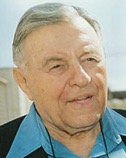
In 1949 Teddy, Tamar and their son Amos, born in 1947, moved to Washington, where Teddy’s main job was to establish contact between Israel’s Mossad and the CIA. In 1952 they returned to Israel and Kollek became Ben-Gurion’s Director of the Prime Minister’s office, a position he held until 1964 when Ben-Gurion retired. In 1960 his daughter Osnat was born. In 1965 Kollek successfully ran for Mayor of Jerusalem, a position he held for 28 years until 1993, having been re-elected five times.
After June 1967, when Israel conquered East Jerusalem, Kollek worked on uniting the city. As a successful fund-raiser, second only to Shimon Peres in Israel, he initiated the Israel Museum, the Jerusalem Theater, the Biblical Zoo, the Jerusalem Foundation and the soccer stadium that was named after him. Kollek brought distinguished artists, painters, movie actors, writers, directors and singers to Israel, including Frank Sinatra, Liz Taylor, Saul Bellow, Isaac Stern, Zubin Mehta and Alfred Hitchcock. Famous and loved all over the world, Kollek refused to become a politician, saying “From Jerusalem there is no promotion.” He died in Jerusalem at age 95.
Heda Margolius Kovály
Heda Margolius Kovály (1919-2010) was born in Prague. Her youth was cut short by the rise of Hitler and the Nazi occupation of Czechoslovakia in 1939. In 1941, she and her family were deported to the Lodz Ghetto, then to Auschwitz. She escaped from a death march, made her way back to Prague, and took part in the uprising against the Germans in May 1945. Heda then reunited with her husband, Rudolf Margolius, who had survived Auschwitz and Dachau. After Margolius became Deputy Minister of Foreign Trade in the post-war Communist government, he was arrested and became a victim of Stalinist anti-semitic show trials. The Slansky Trials found Margolius one of eleven Jews guilty of conspiracy. After his execution in 1952, Heda, who never believed that her husband was guilty and spent her life trying to clear his name, and Ivan, her four-year-old son, were shunned by society. Heda was denied work and lodging, forced to live in poverty and to eke out a living surreptitiously editing and translating. She did not tell Ivan the truth about what happened to his father until he was sixteen years old. Her memoir of life under Stalinism, Under A Cruel Star: A Life in Prague 1941-1968, is dedicated to Ivan. She is the author of a novel, Innocence, and the translator of several American authors into Czech. In his book Cultural Amnesia, Clive James named Heda Margolius Kovály one of the "necessary" writers of the twentieth century. In 1968, after Soviet troops invaded Prague, mother and son fled Czechoslovakia. Heda Margolius Kovály settled in Boston, Massachusetts where she worked at the Harvard Law School library and lived with her second husband, Pavel Kovály. In 1996, they returned to Prague where Heda died in 2010.
Arnold Kramish
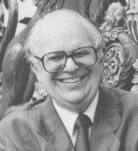
After World War II, Kramish became a nuclear intelligence and policy expert. He served with the Atomic Energy Commission as a liaison to the CIA providing intelligence estimates on Soviet nuclear capabilities until 1951, when he joined the Rand Corporation. Later, Kramish developed an interest in the history of atomic espionage. In the 1970s, he worked as an arms control adviser for the State Department in Paris and served as nuclear arms control and security adviser to UNESCO and the OECD. During the Reagan administration, he directed a White House study that recommended the Strategic Defense Initiative, also known as Star Wars.
He received a Carnegie Fellowship and a Guggenheim Fellowship, and was a fellow at the Woodrow Wilson International Center for Scholars. He taught courses at UCLA, the London School of Economics and other institutions.
Herbert Kupferberg
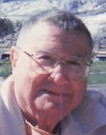
Peter Kurth
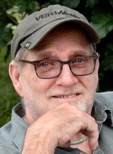
In 1990 Kurth published American Cassandra: The Life of Dorothy Thompson, which won the Frank Luther Mott-Kappa Tau Alpha Research Award as the best book about journalism of that year. Thompson’s tireless opposition to fascism “at home and abroad” continues to inspire readers around the world.
Kurth’s involvement with the drama of the last Romanovs led to the 1995 publication of Tsar: The Lost World of Nicholas and Alexandra, a coffee-table picture book combining rare images of the imperial family, long hidden in Soviet archives, with contemporary photographs of Romanov haunts and palaces in Russia. The New York Times found the book “physically dazzling... and compellingly written,” offering “as fine a portrait of Nicholas and Alexandra’s complex characters as any book since Robert Massie’s biography” of that name.
Kurth’s 2001 Isadora: A Sensational Life is the fullest biography to date of Isadora Duncan, “Mother of Modern Dance.” He has written for Vanity Fair, Condé Nast Traveler, Forbes FYI, The New York Times Book Review, The New York Observer, Cosmopolitan, Harper’s Bazaar, Salon.com, and was “Crank Call” columnist for Vermont’s Seven Days. Kurth lives in Vermont. You can follow him on Substack.
William L. Langer

During World War II, Langer served in the new Office of Strategic Services (OSS) as deputy chief and later chief of the Research and Analysis Branch. He was Secretary of State James Byrnes’s special assistant for intelligence analysis. After the war, Langer returned to academia, but in 1950 he organized the newly established CIA office of National Estimates and he served on the President’s Foreign Intelligence Advisory Board from 1961 until 1977.
President Truman awarded Langer the Medal for Merit in July 1946 in recognition of his wartime service. Langer received the Bancroft Prize in 1954. Langer served as president of the American Historical Association in 1957 and received the Golden Plate Award of the American Academy of Achievement in 1965.
Langer’s books include The Franco-Russian Alliance (1927), European Alliances and Alignments (1931), The Rise of Modern Europe (1934), The Diplomacy of Imperialism (1935), Our Vichy Gamble (1947) and his autobiography In and Out of the Ivory Tower (1977).
Harold Larrabee
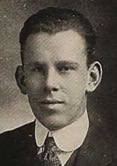
In 1939, he started working at the New England Quarterly, where he was a Senior Editor for 40 years. Larrabee edited Selections from Bergson (1949) and Bentham’s Handbook of Political Fallacies (1952), translated Man: Mind or Matter? (1951), In Quest of New Ethics (1953) and Sensation: The Origin of Life (1960) and wrote What Philosophy Is (1928), Decision at the Chesapeake (1964) and Reliable Knowledge (1945).
Joseph Lash
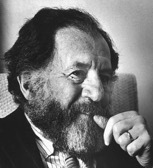
As America sank into Depression, Lash became a leader in the increasingly radical student protest movement, first as an officer of the Socialist youth organization Student League for International Democracy, and from 1936 to 1939 as executive secretary of the American Student Union, a coalition of radical youth groups. Subpoenaed to testify before the predecessor of the House Un-American Activities Committee, Lash and other leaders gathered were joined at New York’s Penn Station by First Lady Eleanor Roosevelt who rode to Washington with them and invited them to lunch at the White House. By the end of the visit she and Lash had formed a lifelong friendship.
From 1940 until 1942, Lash was general secretary of the International Student Service, a progressive student-aid group. He was later a founder, with Mrs. Roosevelt and others, of Americans for Democratic Action and served as an officer for two years. He was also active in liberal Democratic politics. Mr. Lash was drafted during World War II, serving as a sergeant and later second lieutenant in the United States Army Air Force in the Pacific as a weatherman.
In 1950, after two years working as an assistant to the Roosevelts’ son Elliott, Lash joined The New York Post, then known for its liberal editorial positions. He worked for a time as a general assignment reporter and became its United Nations correspondent, a position he held for 10 years. From 1960 until 1966, he was assistant editor of the editorial page.
After Eleanor Roosevelt died in 1962, Lash published Eleanor Roosevelt: A Friend’s Memoir and Franklin Roosevelt, Jr. invited him to write a biography with access to all of Mrs. Roosevelt’s papers. The result was Eleanor and Franklin, which won the Pulitzer Prize and the National Book Award in 1972, and Eleanor, The Years Alone. Lash published six more books over the next sixteen years, including Roosevelt and Churchill, Helen and Teacher, and Dealers and Dreamers.
William D. Leahy

In 1921, Leahy commanded the cruiser Chattanooga, then the cruiser St. Louis, flagship of the naval detachment in Turkish waters during the Greco-Turkish War, and the minelayer Shawmut while also commanding Mine Squadron One. Back in Washington, he headed Officer Personnel in the Bureau of Navigation (1923-1926) and then commanded the battleship New Mexico which won three biennial competitions in gunnery, engineering and battle efficiency in 1927-1928. Leahy’s ability brought steady advancement, to rear admiral (1930), vice admiral (1935) and admiral (1936). A talented organizer, he held three of the Navy’s highest administrative offices: Chief of the Bureau of Ordnance (1927-31), Chief of the Bureau of Navigation (1933-35), and Chief of Naval Operations (1937-39).
Leahy retired because of age in August 1939 but a few months later, President Roosevelt named him governor of Puerto Rico, a post he held until December 1940, when he was appointed ambassador to occupied France’s Vichy government. He was recalled in 1942 to fill the newly created position of Chief of Staff to President Roosevelt. As liaison between the president and the armed services, Leahy conferred with Roosevelt daily, presided over the Joint Chiefs of Staff, and participated in almost all major military and diplomatic decisions and Allied conferences during World War II. He was made Fleet Admiral in December 1944.
After Roosevelt’s death (April 1945), Leahy was asked by President Harry S. Truman to continue as his personal Chief of Staff. He retired from that position in 1949. The following year, he published his war memoirs, I Was There.
Melvyn Leffler
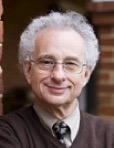
Stuart W. Leslie

Leslie’s research has focused on the history of modern American science and technology, publishing extensively on the history of Cold War science and technology and the Cold War university. More recently, his work has taken an architectural turn, including studies of corporate headquarters, research laboratories, healthcare facilities, and observatories, especially public astronomy, with attention to matters of design.
Leslie is a member of several professional organizations, including the Society of Architectural Historians and the Society for the History of Technology. His work has been recognized with awards from the Society for the History of Technology, IEEE and the History of Science Society.
Hillel Levine
Hillel Levine, scholar, teacher, public intellectual, and activist, has authored many influential books and articles including In Search of Sugihara, The Death of an American Jewish Community, “Whodunit?!: Intolerance and the Secularization of Law,” Economic Origins of Antisemitism and “Jewish Reactions to Copernicus” and participated in film production.
Studying with Erik Erikson, A.J. Heschel, Elie Wiesel, and Peter Berger, he received rabbinic ordination from the Jewish Theological Seminary and doctorates in Sociology and Jewish History from Harvard. For 40 years he has been devoted to interfaith, civil rights, historical conciliation, and peacemaking activities and undergraduate, graduate, and adult education at Harvard, Yale, and Boston University. He founded the Yale and Boston University Centers for Judaic Studies and currently teaches sociology and religion at BU.
In 1995 he was appointed Life Time Distinguished Visiting Professor at Kyoto’s Logos Theological Seminary and has been a Visiting Professor at Tokyo University several times. He has also taught and held research positions in China, Ethiopia, South Korea, Poland, the Soviet Union, Brazil, Morocco, and Israel and worked with the US State Department on preventing ethnic conflicts in Western Europe, the Balkans, India and the Northeastern Territories of India. In 2001, he founded the International Center for Conciliation training community leaders to prevent and respond to religious and ethnic conflicts. Recently, he has worked with scientists and environmentalists in the Middle East, developing cross border hazard risk mitigation and emergency mobilization. He enjoys the friendship of several generations of accomplished former students.
Dorothy Michelson Livingston
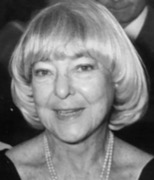
When she decided to write a biography of her father, she was put off when told she had to cite every source of information. She had never written a term paper in high school! She hired a secretary to help her and this time she did not just “skim the cream”. She persisted for over 15 years to see the project through. She took courses in creative writing and physics. Her academically achieving daughters took an indulgent view of her efforts, not believing it would ever come to fruition — but they were wrong: the biography was completed and published by Scribner’s in 1973.
Karl Loewenstein

The Emergency Committee in Aid of Displaced German Scholars helped Loewenstein obtain a two-year teaching position at Yale where he arrived in late 1933 with his Hungarian wife. He joined the political science department at Amherst College (1936-1939) which, in 1940 awarded him an honorary MA and appointed him Professor of Jurisprudence and Political Science, a position Loewenstein held until reaching emeritus status in 1961. He taught political theory, the history of government, and international and comparative law.
In 1941, Loewenstein went to South America on a Guggenheim Fellowship to research Latin American politics, which led him to become a Special Assistant to the US Attorney General in Washington, DC. During 1945-1946, Loewenstein was one of only three German lawyers in the Legal Division of the US Office of Military Government for Germany working to “de-Nazify” the administration of German justice by identifying judges, lawyers and law professors that should be banned from contributing to Germany’s jurisprudence.
Loewenstein held over 14 guest professorships, including at the University of Munich where he was later reinstated as a full professor, authored 14 books including Hitler’s Germany: The Nazi Background to War, and numerous articles and essays on comparative constitutional law, the history of government, political symbolism, and international affairs. He was a member of the Cosmos Club in Washington, DC and received the Federal Republic of Germany’s Order of Merit. He died during a visit to Heidelberg.
Netanel Lorch
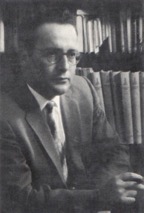
David Loth
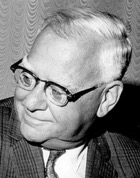
Loth then headed publications for the Office Inter-American Affairs (1941-44), was Managing editor of Press Research (1944), Information director of the Surplus Property Board (1945) before joining Planned Parenthood Federation American Inc. in New York City in 1946, of which he was acting national director in 1950-51. In 1953-54, he was Director of public information for Columbia University’s bicentennial. He lectured in journalism at Finch College (1961-65) and at the University of Colorado (1978-83).
Loth was an Associate Nieman fellow at Harvard in 1957-58 and President of the Rockland Foundation in 1956. He contributed articles to Reader’s Digest, Look, Esquire and other magazines and authored almost 50 books, from The Erotic in Literature to Public Plunder, a history of graft in America, and many biographies, including of Lafayette, Woodrow Wilson, Alexander Hamilton, John Marshall, Philip II of Spain and Gerard Swope, President of General Electric during 1922-40 and 1942-45 (the Swope and Loth families were friends and neighbors in St. Louis, and David Loth knew Gerard Swope during his whole life).
Richard Lourie
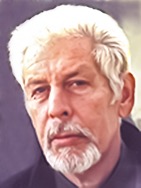
During the Cold War Lourie was very active in the anti-Soviet underground, smuggling manuscripts and other materials into and out of the USSR and Eastern Europe. He was with Lech Wałęsa in the Lenin Shipyards in Gdansk in 1981 and distributed the movie that Solidarity made called Workers ‘80, the only copy not confiscated by the Polish authorities being the one sent to the Pope by diplomatic pouch. The Pope sent Lourie his copy.
But his interests are hardly limited to Russia and the east of Europe. His poetry has been published widely and he was given the Sneath Poetry Award by Robert Lowell. He was a travel and food writer for many years, his work appearing in The New York Times, Gourmet and in his own column — Dish — in Hamptons Country magazine. Lourie also wrote the next to last episode of Miami Vice.
Salvador Luria

In 1938, Luria left fascist Italy to work at Institut du Radium in Paris. He fled Paris by bicycle just ahead of the advancing Germans in June 1940. After receiving an immigration visa for the US in Marseille, Luria reached New York in September 1940 where, Fermi, who had preceded him to the US, helped Luria obtain a Rockefeller Foundation fellowship and become a research assistant at Columbia University’s College of Physicians and Surgeons. A Guggenheim fellowship allowed him to spend 1942 at Vanderbilt University working with Delbrück. In 1943, Luria became an instructor at Indiana University, where he remained until 1950, when he moved to the University of Illinois in Urbana as professor of microbiology. In 1959, after a sabbatical year at the Massachusetts Institute of Technology (MIT), Luria was appointed chair of MIT’s newly-formed microbiology department. Named Sedgwick Professor of Biology in 1964 and founding director of the Center for Cancer Research in 1972, Luria remained at MIT until his retirement in 1985, becoming Institute Professor of Biology Emeritus.
Known for his political activism, Luria was denied a passport in 1953 to deliver a paper at a scientific meeting in Oxford, England. James Watson, Luria’s first graduate student at Indiana University, delivered the paper in his absence. Later, Luria publicly opposed US involvement in the Vietnam War, serving as a leader of the highly visible anti-war Boston Area Faculty Group on Public Issues. Within days of winning the 1969 Nobel Prize in Physiology or Medicine with Max Delbrück and Alfred Hershey “for their discoveries concerning the replication mechanism and the genetic structure of viruses”, Luria learned that his name appeared on a National Institutes of Health funding blacklist. The ban was ultimately rescinded or ignored. Luria secured National Cancer Institute funding in 1972 for the MIT Center for Cancer Research.
Luria was elected to the American Academy of Arts and Sciences in 1959 and was named a member of the National Academy of Sciences in 1960. In 1964, he was elected to the American Philosophical Society. From 1968 to 1969, he served as president of the American Society for Microbiology. In 1969, he was awarded the Louisa Gross Horwitz Prize from Columbia University together with Max Delbrück. He received the National Medal of Science in 1991.
Gerstle Mack
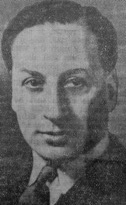
Mack did extensive archival research in France, England and the United States on Paul Cézanne before publishing a highly praised biography of the painter in 1935. He followed this with a biography of Henri de Toulouse-Lautrec in 1938, which was equally well received. During World War II, Mack served in the military in England with the Office of Strategic Services. The Land Divided, his history of the Panama Canal, was published in 1944 and his biography of Gustave Courbet appeared in 1951. In 1981, he wrote a book on the 1906 San Francisco earthquake and fire, which he personally survived. He lived in Manhattan after 1938 until his death, and travelled extensively across the world.
Norman Macrae
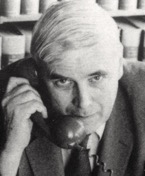
Philip Magnus
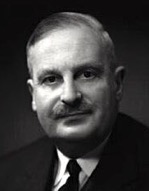
He wrote several biographies, first of Edmund Burke, and gained national recognition with his biography of Gladstone, which used new material, revived a general interest in the Victorian period and first revealed Gladstone’s rehabilitative work with prostitutes. His other books were on Kitchener, Sir Walter Raleigh and King Edward VII. In later years, Magnus served as a Justice of the Peace, Shropshire County Councillor, chairman of the governors of Attingham College and governor of Ludlow Grammar School. He was a trustee of the National Portrait Gallery (1970-77) and an editor of the Jewish Guardian.
Klaus Mann
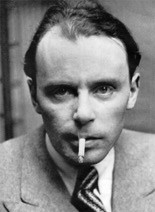
George W. Martin
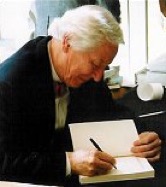
Martin attended law school on the GI Bill following his World War II naval service, practiced law for five years in a small Manhattan firm working on trusts, estates, and small corporations but then quit the law to write full time.
His books are about music (The Opera Companion: A Guide for the Casual Operagoer, Verdi: His Music, Life and Times, Twentieth Century Opera Guide), the law (Causes and Conflicts: The Centennial History of the Association of the Bar of the City of New York, 1870-1970), history (The Red Shirt and the Cross of Savoy: The Story of Italy’s Risorgimento, 1748-1871) and biographies (The Damrosch Dynasty: America's First Family of Music, CCB: The Life and Century of Charles C. Burlingham, New York's First Citizen, 1858-1959, which won the Erwin N. Griswold Award from the US Supreme Court Historical Society in 2005 and Madam Secretary Frances Perkins). He has also contributed articles to many professional journals and magazines.
Jan Masaryk
Jan Garrigue Masaryk (1886-1948) was the third of four children in a prominent family in Prague. His father Tomáš Garrigue Masaryk would become the first president of the Czechoslovak Republic; his mother Charlotte was an American intellectual. After an unpromising adolescence and young adulthood, Jan Masaryk became one of the most popular diplomats in London and one of the most admired broadcasters of the Second World War. Untold thousands of Czechs risked their lives to listen to his program Volá Londýn (London Calling), a public and personal diary of 1939-44, as experienced by the Foreign Minister of the Czechoslovak government-in-exile in London. In 1945, Jan Masaryk returned to Prague and became part of the post-war government. He died shortly after the Communist putsch of 1948.
Melita Maschmann

After her release, Maschmann wrote for the Darmstädter Echo and the Frankfurter Rundschau. She travelled to Afghanistan and India in 1962-63 and moved permanently to India shortly thereafter, becoming a follower of Guru Sri Anandamayi Ma. In India, Maschmann lived mainly in her ashrams, and after Sri Anandamayi Ma’s death in 1982, worked in institutions for children. She returned to Darmstadt in 1998 due to Alzheimer’s disease and died in a retirement home. She was never married and had no children.
Account Rendered was first published in 1963 as Fazit: Kein Rechtfertigungsversuch (No attempt at justification), translated into several languages, and republished seven times in Germany where it became a required high school text. Maschmann also wrote fiction (Die Aschenspur, Der Dreizehnte, Das Wort Hiess Liebe) and books about Sri Anandamayi Ma and India (Der Tiger singt Kirtana, Indiras Schwestern, Eine ganz gewöhnliche Heilige).
Alpheus Thomas Mason
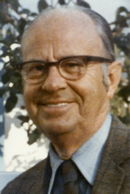
One of the country’s foremost judicial biographers, Professor Mason authored 22 books, including four volumes on Associate Justice Louis D. Brandeis, a study of Chief Justice Harlan F. Stone, one on Chief Justice William Howard Taft, and several on critical periods and issues in the history of the Supreme Court. His course in constitutional interpretation was voted several times by Princeton students as one of the school’s toughest courses.
His Brandeis, A Free Man’s Life sold over 50,000 copies and remained on the best-seller list for five months in 1947. His co-authored textbook, American Constitutional Law: Introductory Essays and Selected Cases, was first published in 1954 and remains popular over sixty years later in its 16th edition.
His Harlan Fiske Stone: Pillar of the Law earned the Francis Parkman Prize in history and the Liberty and Justice Award from the American Library Association, which called the book “the most distinguished book of 1956 in history and biography.”
Professor Mason was one of the few political scientists to hold a visiting membership at the Institute for Advanced Study in the 1930’s. He was elected to the American Academy of Arts and Sciences in 1963 and served as vice president of the American Political Science Association.
Jeffrey Mehlman
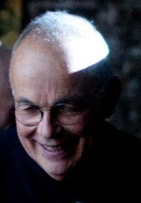
His books include a memoir, Adventures in the French Trade: Fragments Toward a Life; A Structural Study of Autobiography: Proust, Leiris, Sartre, Lévi-Strauss; Legacies of Anti-Semitism in France; Walter Benjamin for Children: An Essay on His Radio Years; Genealogies of the Text: Literature, Psychoanalysis and Politics in Modern France and Émigré New York: French Intellectuals in Wartime Manhattan, 1940-1944.
He has translated works by Laplanche, Derrida, Lacan, Blanchot, Vidal-Naquet, Roudinesco and The Affair: The Case of Alfred Dreyfus by Jean-Denis Bredin. He has held Guggenheim and Fulbright Fellowships and was appointed Officier de l’Ordre des Palmes Académiques by the French government.
Yossi Melman
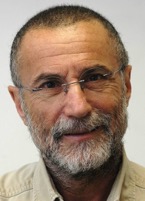
Melman’s 10 books on foreign policy, strategic issues, terrorism and intelligence appeared in more than 50 countries and were translated into 15 languages. They include Every Spy A Prince: The Complete History of Israel’s Intelligence Community, Spies Against Armageddon: Inside Israel’s Secret Wars, Friends in Need: Inside the American-Israeli Alliance (all three with Dan Raviv) and The Nuclear Sphinx of Teheran: Mahmoud Ahmadinejad and the State of Iran.
In 2016 he was a special consultant and protagonist in “Zero Days,” a documentary on the secret cooperation between Israeli and American intelligence communities to destroy Iran’s nuclear centrifuges. In 2017 he created and wrote the script for “Inside the Mossad,” a four-part documentary on the history of the Mossad. In 2022 he wrote the script for “Munich: Of Games and Blood,” a documentary about the 50th anniversary of the terror attack on the Israeli athletes at the 1972 Munich Olympics.
Melman was a Nieman Fellow in 1990 at Harvard and won the 1994 Simon Rockower Award for Excellence in Jewish Journalism and the 1995 Boris Smolar Award of Excellence in International News or Feature Reporting.
Albert Memmi
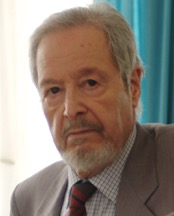
Memmi’s first book, the autobiographical novel The Pillar of Salt, appeared in 1953. After Tunisia became independent in 1956, Memmi — a prominent leftist and Jew — returned to Paris where he has lived ever since. During the Algerian war, he published The Colonizer and the Colonized with a preface by Jean-Paul Sartre, in 1957. Portrait of a Jew and The Liberation of the Jew were published by Gallimard in 1962 and 1966. Memmi became a French citizen in 1973. He taught at Ecole Pratique des Hautes Etudes and Université de Paris-Nanterre, received the Académie Française’s Grand Prix de la Francophonie and is a Doctor Honoris Causa of the Ben Gurion University of the Negev.
Kurt Mendelssohn
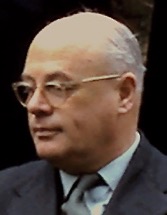
Robert A. Millikan
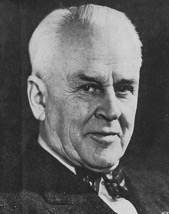
From 1921 to 1945, Millikan led the California Institute of Technology (Caltech) as director of the Norman Bridge Laboratory of Physics and chairman of the Executive Council — essentially as president, though he declined to use that title. Millikan believed that the modern world was basically a scientific invention, that science was the mainspring of the twentieth century, and that America’s future rested on promoting basic science and its applications.
His determination of the charge on the electron by the oil drop method and his verification of Einstein’s photoelectric equations — for which Millikan won the Nobel Prize in physics in 1923, the first awarded to a native-born American — together with his work on the numerical determination of Planck’s constant at the beginning of the 20th century secured Millikan’s place in the scientific community as a rigorous experimentalist aiming for higher and higher precision. In later years, he also studied cosmic rays, a term he coined.
The son of a Congregationalist minister, Millikan spoke and published frequently on the relationship between science and religion. Politically, Millikan was a Midwestern Republican and a fiscal conservative — he was against pro-union New Deal legislation, against federal funding of education and research except for military ends and anything that smacked of big government. Millikan was also widely known as the author, with Henry Gordon Gale, of a series of textbooks that were the mainstay of physics courses in the first half of the twentieth century. Several generations of Americans literally learned their physics from Millikan.
Walter Millis
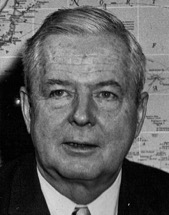
Millis’ books include Road to War: America 1914-1917, This is Pearl! The United States and Japan — 1941, Why Europe Fights, Viewed Without Alarm: Europe Today, Arms and Men: A Study of American Military History, The Martial Spirit: A Study of Our War with Spain and An End to Arms. He was the editor of The Forrestal Diaries.
Henry Morgenthau III
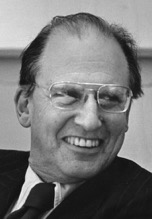
From 1945, he worked in the television business as an author, producer and manager for large national institutions like NBC, CBS and ABC, and served as President of Gannaway-Morgenthau Productions, Inc. From 1955 until 1977, Morgenthau was a chief producer at WGBH in Boston. He produced several documentaries, including “The Negro and the American Promise” with Dr. Martin Luther King, Jr. and James Baldwin; and “Prospects of Mankind” with Eleanor Roosevelt. His work won him national acclaim, including Emmy, Peabody, UPI, and other awards. He wrote for the Boston Globe, the Providence Journal, and the Brandeis Review, among other publications.
In his 70s, Morgenthau published Mostly Morgenthaus, a history of his family. At 95, he took up poetry as “a celebration of the evening of a long life,” and at 99 his first solo book of poetry, A Sunday in Purgatory, was published. On the eve of Morgenthau’s 100th birthday, Congressman Adam Schiff offered a tribute to his long career.
Frederic Morton
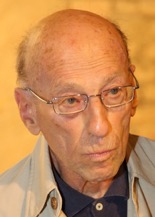
Morton always wrote in English. His first novel was The Hound (1947) about a privileged youth in 1939 Vienna, followed by other novels including The Schatten Affair (1965) about a German-born American Jew who returns to Berlin as the publicist for a financier, Snow Gods (1969) about wealthy habitués of a resort in the Swiss Alps, An Unknown Woman (1976) about a brilliant orphan of Jewish immigrants who ascends to intellectual celebrity and financial riches, and The Forever Street (1984), a family saga set in Vienna over three generations until World War II.
His books of non-fiction include The Rothschilds (1962), a National Book Award finalist about the banking family turned into a musical in 1970 which ran for over 500 performances on Broadway; A Nervous Splendor: Vienna, 1888-1889 (1979) about the life of the city — including Freud, Mahler, Klimt, Schnitzler, Bruckner and Herzl — and the murder by Crown Prince Rudolf of his mistress and his suicide at Mayerling, also a National Book Award finalist turned into a musical staged in Budapest and Vienna; Thunder at Twilight: Vienna 1913-14 (1989) about the city as Europe heads toward World War I; and a memoir, Runaway Waltz (2005).
Morton also wrote for many publications, including Esquire, The Atlantic, Playboy, Harper’s, the Hudson Review and The New York Times. He received Austria’s Cross of Honor for Arts and Sciences in 2003.
Bruce Allen Murphy
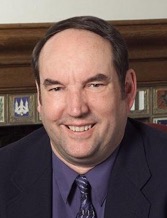
Murphy’s books are The Brandeis-Frankfurter Connection: The Secret Political Activities of Two Supreme Court Justices, which describes the financial relationship between Justice Louis D. Brandeis and then-Harvard law professor Felix Frankfurter and their promotion of several political reforms; Fortas: The Rise and Ruin of a Supreme Court Justice, about Abe Fortas who resigned from the Supreme Court after his close political ties to President Lyndon B. Johnson and his financial relationship with Louis Wolfson, a potential litigant before the Court, came to light; Wild Bill: The Legend and Life of William O. Douglas, about the longest-serving Supreme Court justice in US history; and Scalia: A Court of One, which argues that Scalia’s Originalism theory and judicial conservatism was informed as much by his highly traditional Catholicism, as by his reading of the Constitution.
Murphy is also co-author of an American Government textbook, Approaching Democracy, and editor of a reader, Portraits of American Politics. Throughout his academic career, he has taught political science, history, and Constitutional law courses.
Robert Murphy
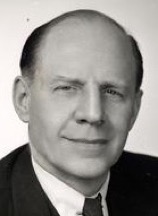
At President Roosevelt’s request, Murphy investigated conditions in French North Africa in preparation for the November 1942 Allied landings, the first major Allied ground offensive during World War II. He was appointed the President’s personal representative with the rank of Minister to French North Africa. Murphy made contact in Algiers with various French army officers including Giraud and Darlan, and recruited them to support the Allies’ invasion of French North Africa.
With his British counterpart, future Prime Minister Harold Macmillan, Murphy worked to ensure that following the January 1943 Casablanca Conference, Giraud and de Gaulle would unite the French among the Allies. Murphy stayed with Eisenhower’s staff as the principal civilian representative of the President and the State Department with the Allied command in Italy in 1943. In 1948, Murphy was advisor to General Lucius Clay, American military governor in Germany, during the Soviet blockade of Berlin, and the Berlin airlift. He later was American ambassador in Belgium (1949) and in Japan (1952), Deputy Under Secretary, and later Under Secretary of State for Political Affairs.
After Murphy retired from the State Department in 1959, he was an adviser to Presidents Kennedy, Johnson and Nixon. He served on President Ford’s Foreign Intelligence Advisory Board. He was chairman of Corning Glass International and a director of the Corning Glass Works. He received the Distinguished Service Medal and several foreign honors, including the French Croix de Guerre with palm, the Belgian Order of Leopold, the Japanese Order of the Rising Sun, the German Order of Merit and the Spanish Order of Isabella.
Williamson Murray

In 1977 Murray moved to Ohio State University where he taught military and diplomatic history, retiring in 1995; in 2012 he was made professor emeritus of history. He also taught at several universities and military academies, including the US Air War College, the US Military Academy, and the Naval War College. He was Centennial Visiting professor at the London School of Economics, Matthew C. Horner Professor of Military Theory at the Marine Corps University, Charles Lindbergh Chair at the Smithsonian’s Air and Space Museum, and Harold K. Johnson Professor of Military History at the Army War College.
Murray authored numerous books and articles on military history and strategic studies, and edited other projects. In 2019 the Society for Military History awarded Murray the Samuel Eliot Morison Prize for lifetime achievement in the field of military history.
Steven Neuse
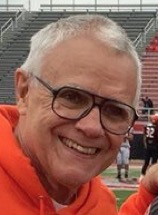
Sheldon Novick
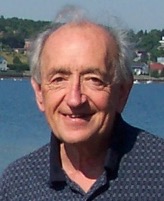
Honorable Justice: The Life of Oliver Wendell Holmes was the first full biography of Holmes based on unrestricted access to the Holmes papers. Published in 1989, it received the American Bar Association’s Silver Gavel Award, and was short-listed for the National Book Critics Circle Award. After the biography appeared, Novick was invited to prepare the quasi-official Collected Works of Justice Holmes published by the Oliver Wendell Holmes Devise and the University of Chicago Press.
His biography of Holmes’s friend and rival, the novelist Henry James, was published in two volumes, Henry James: The Young Master (1997) and Henry James: The Mature Master (2007).
John Kennedy Ohl
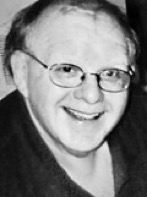
Paul Ornstein
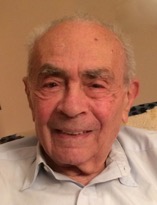
Richard J. Overy
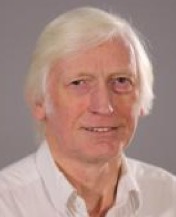
Tina Packer
Tina Packer is Founding Artistic Director of Shakespeare & Company, in Lenox, Massachusetts, an internationally acclaimed theatrical performance, training and education company, where she directed over 50 productions and acted in many more.
As a young English actress, she trained at the Royal Academy of Dramatic Art, where she won the Ronson Award for Most Outstanding Performer, was an associate artist with the Royal Shakespeare Company, performed in the West End, and acted with repertory companies in Glasgow, Edinburgh, Leicester, and Coventry.
Her book, Power Plays: Shakespeare’s Lessons in Leadership & Management, was published in 2001. Her children's book Tales from Shakespeare was published in 2004. Along with acting, lecturing, directing, and writing, Tina continues to spearhead the international effort to reconstruct a historically accurate 1587 Rose Playhouse, where Shakespeare’s plays were first performed, in Lenox, Massachusetts.
Yoel Palgi
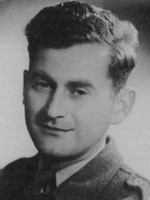
Lewis J. Paper

After leaving Georgetown, Paper practiced law in Washington, DC with the Citizens Communications Center, a public interest law firm focused on broadcasting. He then served as Legislative Counsel to US Senator Gaylord Nelson (D-Wisconsin) and as Associate General Counsel at the Federal Communications Commission. He was also an Adjunct Professor at Georgetown Law School. He was later a partner at several law firms in Washington, DC, where he participated in numerous presidential campaigns.
Besides Empire: William S. Paley and the Making of CBS, Paper is the author of six other books: John F. Kennedy: The Promise and the Performance, Brandeis: An Intimate Biography, Perfect: Don Larsen’s Miraculous World Series Game and the Men Who Made It Happen, In the Cauldron: Terror, Tension, and the American Ambassador’s Struggle to Avoid Pearl Harbor, and the novels Deadly Risks and Legacy of Lies: An Historical Thriller. His articles and book reviews have appeared in The New York Times, The Washington Post, The New Republic, and other periodicals.
Joseph E. Persico
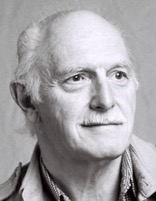
In 1977, after Rockefeller’s tenure ended, Persico published My Enemy My Brother: Men and Days of Gettysburg, a nonfiction book about the Civil War. In 1979, he published The Spiderweb, a novel, and Piercing the Reich: The Penetration of Nazi Germany by American Secret Agents During World War II, a nonfiction study, and in 1982, The Imperial Rockefeller, a biography of his former employer, followed by a biography of Edward R. Murrow. In 1995, he co-wrote Colin L. Powell’s autobiography My American Journey. Throughout the 1990s, Persico published Casey: From the OSS to the CIA and Nuremberg: Infamy on Trial, which became a television docudrama, and wrote numerous articles on American history. In 2001, he published Roosevelt’s Secret War: FDR and World War II Espionage and in 2004, Eleventh Month, Eleventh Day, Eleventh Hour: Armistice Day, 1918, World War I and Its Violent Climax. His last book, Roosevelt’s Centurions, appeared in 2013.
Frederik Philips
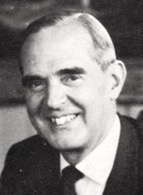
He then headed Philips from 1961 until 1971, one of the company’s most successful periods: Philips employed over 350,000 employees worldwide and was a leading manufacturer of consumer electronics, medical devices and lighting. Philips’ in-house research lab, a novelty when it was established in 1914, invented the electric rotary razor, cassette tape, and together with Sony, the CD and DVD. Throughout his life, Frederik Philips was a major advocate for the development of medical equipment. After transforming the consumer electronics market for decades, Philips did the same in the medical field.
Ahead of his time, Frederik Philips believed in and practiced socially responsible management. He wanted Philips to take care of all parties involved, shareholders, suppliers, employees and customers. From 1929 onwards, Frederik Philips was a committed Protestant member of Moral Re-Armament (MRA) or Oxford Group, an international movement based on religious core values. In business, MRA strived for close cooperation and mutual respect between employers and employees. In 1986, Frederik Philips launched the Caux Round Table (CRT) group of senior European, Japanese and American business executives. The CRT’s Principles for Business was presented to the UN Social Summit in Copenhagen in 1994. It has since become a standard text and has been used as the basis for internal ethical assessments by international companies.
Frederik Philips received numerous awards, including honorary citizenship of Eindhoven and Hasselt (Belgium), honorary doctorates from the universities of Louvain and Taipei and honorary titles in Japan, France, Germany, India and elsewhere. In 1995 Frederik Philips was honored as “Righteous Among the Nations” by Yad Vashem in Israel, for saving the lives of 382 Jewish employees of Philips during World War II. His Autobiography 45 Years with Philips covers the highlights of his personal and professional life.
Forrest C. Pogue
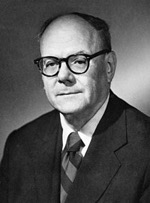
Pogue was first assigned to write a history of the Supreme Headquarters Allied Expeditionary Force from 1945 to 1946. In July he was assigned by Dwight D. Eisenhower to write an official history of the Supreme Command in Europe, for which he interviewed Dwight D. Eisenhower, Omar Bradley, Charles de Gaulle, Alan Brooke and others. Pogue then spent seven years as a military historian, and two years conducting operations research at United States Army Garrison Heidelberg with the Operations Research Office at Johns Hopkins University. He contributed to The Meaning of Yalta among several other books, returning to Murray State in 1954.
In 1956, Pogue was hired by the George C. Marshall Foundation to write the official biography of George C. Marshall in four volumes on which he worked from 1963 to 1987. He became director of the Marshall Foundation in 1956, leaving in 1974 to become director of the Eisenhower Institute for Historical Research. Pogue retired in 1984. He served as a guest lecturer at George Washington University and the United States Army War College, held the Mary Moody Northen chair in Arts and Sciences at Virginia Military Institute in 1972. Pogue was on the Advisory boards for the Office of Naval History, the Naval Historical Office, the United States Army Center of Military History, the Air Force Historical Research Agency, president of the Oral History Association and the American Military Institute and other organizations. The Pogue Library at Murray State is named after him.
Merlo J. Pusey
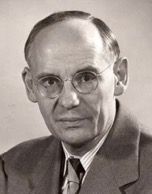
In 1951 Pusey published Charles Evans Hughes, a biography of the US Supreme Court Chief Justice, for which he received the Pulitzer Prize in Letters, the Bancroft Prize and the Tamiment Institute Book Award in 1952. His other books include The Supreme Court Crisis, Big Government: Can We Control It, Eisenhower the President, The Way We Go to War, The USA Astride the Globe, Eugene Meyer for which he received in 1974 the Frank Luther Mott Research Award from the Kappa Tau Alpha Journalism Scholarship Society for the best book representing research in the field of journalism, Builders of The Kingdom, and the volume of poetry Ripples of Intuition.
As an editorial writer, Pusey championed the following causes: Better government for DC; Defeating FDR’s Supreme Court packing; Political independence for civil servants; Preservation of our democratic, constitutional system; Separation of powers in the Federal government; Military preparedness prior to World War II; Reasonable, compassionate behavior for the victors of World War II; Control of nuclear weapons; Limiting Presidents to two terms — 22nd amendment; Clear definition about succession to the Presidency — 25th amendment; Fair investigation of communists by Congressional committees; Establishment of NATO; Preservation of treaty-making provisions of the constitution — Bricker amendment; Cleansing the country of McCarthyism; Clearly defining the role of the Vice President when the President is incapacitated; Access to the Potomac River Valley for recreation; International control of Antarctica; Election of the President by popular vote; Voting rights for DC citizens — 23rd Amendment; Redwood National Park; Return of war-making powers to Congress.
Pusey was recognized by his alma mater, the University of Utah, with a Distinguished Alumni Award and Doctor of Laws Degree and by Brigham Young University which granted him a Doctor of Letters Degree.
Susan Quinn
Susan Quinn grew up in Ohio and graduated from Oberlin College. Her biography, Marie Curie: A Life, won the Prix Littéraire des Lectrices de Elle in France, was a finalist for the Los Angeles Times book award, and was shortlisted for the Fawcett Book Prize in England. Marie Curie has been translated into eight languages.
Her previous biography, A Mind of Her Own: The Life of Karen Horney, won the Boston Globe’s Winship Prize. Susan Quinn, the recipient of numerous awards including a Guggenheim Fellowship and a Rockefeller Foundation residency, is also the author of Human Trials: Scientists, Investors and Patients in the Quest for a Cure (2001) and Furious Improvisation: How the WPA and a Cast of Thousands Made High Art Out of Desperate Times (2008). She lives in Brookline, Massachusetts. (photo: Barry Goldstein)
Santha Rama Rau
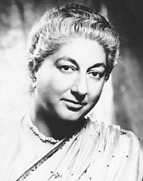
Gus Rancatore
Born in Staten Island, New York, Gus Rancatore came to Boston to finish college, and never did.
Instead, he blundered into the ice cream business, and founded Toscanini’s Ice Cream in Cambridge, Massachusetts in 1981. The store is now a local institution with an international clientele. (photo: Michelle McDonald)
John Ranelagh

Ranelagh was Campaign Director for “Outset”, a charity for the single homeless person, where he pioneered the concept of charity auctions. From 1974 to 1979 he was at the Conservative Research Department working to Margaret Thatcher where he first had responsibility for Education policy, and then for Foreign policy. He started his career in television with the British Broadcasting Corporation, first for BBC News and Current Affairs on Midweek. As Associate Producer he was a key member of the BBC/RTE Ireland: A Television History 13-part documentary series (1981). Later a member of the team that started Channel 4, he conceived the Equinox program strand, developed the “commissioning system”, and served as Board Secretary. He wrote and executive-produced the BBC/Primetime/A&E 6-part TV series, CIA (1992), based on his book The Agency: The Rise and Decline of the CIA. He was the first television professional appointed to the Independent Television Commission (ITC), a government agency which licensed and regulated commercial television in Britain from 1991 to 2003.
He is also the author of Ireland: An Illustrated History (1981), A Short History of Ireland (1983), Thatcher’s People (1991) and The Irish Republican Brotherhood, 1914-24 (2024).
In Scandinavia after 1987, he has been Executive Chairman for NordicWorld; Director for Kanal 2 Estonia; Deputy Chief Executive and Director of Programmes for TV2 Denmark; Director of Acquisition at TV2 Norway, and deputy Chairman and then Chairman of Vizrt. In 2013 he was made a Knight First Class by King Harald V of Norway in the Royal Norwegian Order of Merit, for outstanding service in the interest of Norway.
Dan Raviv
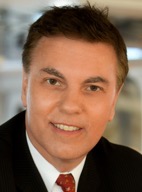
He worked for CBS for 42 years, based in Boston, New York, Tel Aviv, London, Miami, and Washington, and traveled to dozens of countries to cover significant stories. He now writes books and articles, mostly about current events and recent history in the Middle East. On network radio, he was anchor of the CBS News Weekend Roundup. On 9/11, he broadcast the first bulletins on the terrorist attack and anchored over 8 hours of live coverage. He was the host of election night, presidential inaugurations, and other major events.
Raviv is co-author with Yossi Melman of the national best seller, Every Spy a Prince: The Complete History of Israel’s Intelligence Community, and (also with Melman) of Friends in Deed: Inside the U.S.-Israel Alliance and Spies Against Armageddon: Inside Israel’s Secret Wars. His book, Comic Wars, chronicles the battle between Carl Icahn and Ronald Perelman for control of Marvel Entertainment – and how two immigrants who ran a toy company rushed to bankruptcy court in Wilmington and beat the billionaires to win control of Marvel. They turned the comic books company into a movie-making triumph.
An article Raviv wrote with Melman in 2016 for Forward, “The Nazi Who Became a Mossad Hitman,” is being developed as a major motion picture. Raviv also wrote an award-winning article in 2018 for Moment, “Inside the Iron Dome,” on the Israeli scientists and engineers who created the world’s most innovative anti-rocket defense system. Raviv contributes commentary to global TV stations, and is researching and writing Quest for Significance, a book about how people feel driven to prove that their lives matter.
Patricia Rife
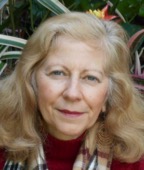
Rife presented the rare historical photos she collected during her archival research in a popular public lecture entitled “Einstein, Ethics and the Bomb” worldwide. For six years, Rife was a Professor in the University of Hawaii-Manoa’s Senator Matsunaga Institute for Peace, where she developed interdisciplinary courses on biography and conflict resolution.
As the Internet developed, Rife shifted to online education and was a pioneer in online training, starting and managing two businesses, “Grants Plus” and “Writers Express”. She has mentored many women in IT management and science/technical careers, is a volunteer Instructor for the American Red Cross, an ordained Christian minister, and enjoys creative writing.
John Rigden
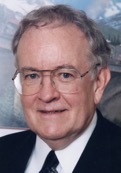
Rigden has been dedicated to presenting the ideas and events of physics clearly in books, lectures, and editorials for general readers. He is the author of Rabi: Scientist and Citizen, Einstein, 1905: The Standard of Greatness, Physics and the Sound of Music and Hydrogen: The Essential Element, and was editor-in-chief of the Macmillan Encyclopedia of Physics and Building Blocks of Matter: A Supplement to Encyclopedia of Physics. He directed Physics Programs at the American Institute of Physics, was professor of physics at the University of Missouri St Louis, and served as editor of the American Journal of Physics and co-editor of Physics in Perspective.
Rigden was awarded the 2008 Andrew Gemant Award from the American Institute of Physics, the Robert A. Millikan Award from the American Association of Physics Teachers, and an honorary Doctor of Science from Denison University. He is an Honorary Professor of Physics at Washington University in St Louis.
Michael Riordan
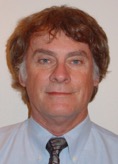
Riordan’s books include The Hunting of the Quark, for which he won the 1988 Science Communication Award of the American Institute of Physics (AIP); with Lillian Hoddeson, Crystal Fire: The Birth of the Information Age, a definitive history of the invention of the transistor which won the inaugural Sally Hacker Prize of the Society for the History of Technology in 1999; with Bruce Anderson, The Solar Home Book: Heating, Cooling and Designing with the Sun; and with David N. Schramm, The Shadows of Creation: Dark Matter and the Structure of the Universe. Riordan was also an editor of The Rise of the Standard Model: Particle Physics in the 1960s and 1970s.
His articles, essays and reviews have appeared in the New York Times, Los Angeles Times, Washington Post, San Francisco Chronicle, San Diego Union, Newark Star-Ledger, Seattle Times, American Scientist, Harvard Business Review, New Scientist, Physics Today, Physics World, Science, Scientific American, and Technology Review.
A Fellow of the American Physical Society, Riordan served on its governing council and as the Chair of its Forum on the History of Physics. He led a group of scholars who wrote Tunnel Visions: The Rise and Fall of the Superconducting Super Collider. In connection with research for this book, he was awarded a John Simon Guggenheim Memorial Fellowship in 1999. In recognition of his achievements in communicating modern physics and its relationship to the wider culture, Riordan received the Andrew W. Gemant Award in 2002 from AIP.
Harlow Robinson
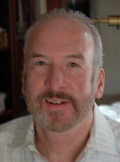
As a lecturer, he has appeared at The Boston Symphony, Lincoln Center, New York Philharmonic, San Francisco Symphony, Aspen Music Festival, Bard Festival, Carnegie Hall, Rotterdam Philharmonic, Metropolitan Opera Guild, Metropolitan Museum of Art, Guggenheim Museum, Boston Lyric Opera, Los Angeles Music Center Opera, Harvard University, Columbia University and Cornell University, among others. He has contributed radio commentary to NPR, WGBH, WNYC, the Metropolitan Opera Saturday Matinee Broadcasts and Canadian Broadcasting Corporation, and television programming for NPR (Soviet Television Tonight). For Lincoln Center, the Boston Symphony, the San Francisco Symphony and Chamber Music Society of Lincoln Center he has consulted on special events and festivals.
The recipient of fellowships and grants from the Fulbright Foundation, American Council of Learned Societies, IREX, and the Whiting Foundation, Robinson was named in 2010 an Academy Film Scholar by the Academy of Motion Picture Arts and Sciences for a biography of director Lewis Milestone, which will appear in 2019. He has made more than 25 research trips to the USSR and Russian Federation, beginning in 1970. As an undergraduate at Yale, he sang in the Yale Russian Chorus and organized the group’s tour to the USSR in 1971.
Kermit Roosevelt, Jr.

After the war, Roosevelt served on the advisory board of the Institute of Arab American Affairs (IAAA) based in New York City, publishing his views on American Zionism and on the partition of Palestine. With others, Roosevelt formed a “Christian group” in 1948 to help the American Council for Judaism promote separate Jewish and Arab states. Roosevelt was executive director of the Committee for Justice and Peace in the Holy Land (CJP), founded in March 1948.
In 1951, Roosevelt helped found the American Friends of the Middle East (AFME), a pro-Arab organization often critical of US support for Israel. The CJP was subsumed into AFME in 1951, and Roosevelt served as AFME executive secretary. AFME has been viewed as part of an Arabist propaganda effort in the US secretly funded by the CIA and by the oil consortium ARAMCO.
As a member of the CIA’s Middle Eastern division since the early 1950s, Roosevelt played a key role in Operation Ajax to overthrow Iran’s Prime Minister Mossadegh and bring Shah Mohammed Reza Pahlavi to power, for which he received secretly from President Eisenhower the National Security Medal in 1954. Asked to lead a CIA-sponsored 1954 coup in Guatemala, Roosevelt refused arguing that President Jacobo Árbenz enjoyed popular support. After leaving the CIA in 1958, Roosevelt worked for American oil and defense companies.
Theodore Ropp
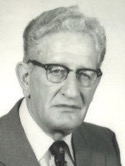
Ropp’s decision to become a military historian and his approach to studying global conflict were deeply influenced by the world of his youth. Having surely heard the horror stories about life on the Western Front in World War I from Frederick B. Artz, he became a member of the Oberlin Peace Society and served as its President in 1934. Like many of his contemporaries, his optimism about establishing a peaceful treaty-based post-World War I world began to wane. His faith in international agreements was replaced after World War II by the view that only the fear of mutual self-destruction by leaders of the two Cold War superpowers could stave off the future catastrophic use of nuclear weapons.
The publication in 1959 of War in the Modern World, with its broad sociologically and technologically based approach to the subject, increased interest in Ropp’s work among scholars and military professionals. As a result, Ropp trained a generation of graduate students at Duke and was invited to teach at several military academies, including the US Naval War College, US Army War College, US Military Academy, National Military College (Singapore) and Royal Military College (Australia).
Following his retirement in 1980, Ropp remained active at Duke and in the academic life of his former students. As an emeritus professor, he was chosen in 1984 to serve as Duke’s first Ombudsman. In 1987, his Harvard doctoral dissertation, The Development of a Modern Navy: French Naval Policy, 1871-1904, was published by the Naval Institute Press. Ropp died in Durham, North Carolina.
Charles E. Rosenberg
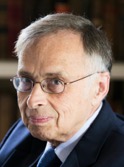
Rosenberg has written widely on the history of medicine and science; his books include Cholera Years: The United States in 1832, 1849, and 1866, The Trial of the Assassin Guiteau: Psychiatry and Law in the Gilded Age, No Other Gods: On Science and American Social Thought, The Care of Strangers: The Rise of America’s Hospital System, Explaining Epidemics and Our Present Complaint: American Medicine, Then and Now.
He received the William H. Welch Medal of the American Association for the History of Medicine (AAHM) and the George Sarton Medal (for lifetime achievement) from the History of Science Society. He has served as president of the AAHM, of the Society for the Social History of Medicine (UK), on the executive board of the Organization of American Historians and on the council of the History of Science Society and of the AAHM. He has been awarded fellowships by the Woodrow Wilson Foundation, the Guggenheim Foundation, and the Rockefeller Foundation.
Samuel I. Rosenman
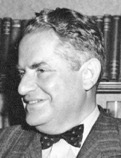
Running for Governor in 1928, FDR called on Rosenman to help him prepare speeches on State issues. Governor Roosevelt then appointed Rosenman his counsel and their close friendship and work association would continue unbroken for 17 years. Rosenman was FDR’s counsel in initiating reforms during his two terms as Governor of New York State and formed the Brain Trust that would bring these programs to the federal Government. At Rosenman’s request, FDR had appointed him to the New York State Court, lamenting that he was thereby “cutting off his right arm.” While serving on the bench, Rosenman nevertheless continued to lead FDR’s speechwriting teams during his four Presidential campaigns, helping draft speeches that shaped the policies of the New Deal — a term Rosenman coined — and prepared the country for war.
Rosenman served on the Executive Committee of the American Jewish Committee, which raised funds for relief and sought national unity as the response to antisemitism at home and abroad.
In 1940, Rosenman’s duties expanded to manage, as FDR’s unofficial counsel, the reorganization of wartime bureaus to promote efficiency, most notably in the areas of military supply and production, government housing, manpower management, and control of inflation. Working two full-time jobs and commuting between New York and Washington DC led to Rosenman’s hospitalization in 1943 and thereafter he had to choose just one career. He resigned from the state court to become the first Counsel to the President, a position specially created for Rosenman whose responsibilities would later include assessing conditions in Europe at war’s end (leading up to the Marshall Plan) and convincing the Allies to agree to the Nuremberg Nazi war trials.
In the midst of crises, FDR could relax with Rosenman who, with his wife Dorothy, were close friends with Franklin and Eleanor Roosevelt. After FDR’s death, Rosenman continued as White House Counsel to President Truman, transitioning New Deal programs to Truman’s “Fair Deal.” Later he was a New York City lawyer and President of the City Bar Association.
Working with Roosevelt is a memoir of Rosenman’s close association with FDR, detailing the process of crafting speeches and how the President operated. It includes revealing anecdotes and observations, especially with respect to FDR’s four Presidential campaigns. It is quoted frequently in histories of the New Deal and FDR’s war years, and is highly regarded as an uncommonly fair and objective memoir of service during America’s “rendezvous with destiny.”
Frederick Rudolph
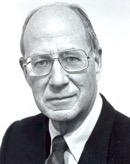
Rudolph was a Guggenheim Fellow (1958-1959 and 1962-1963); director, United World College of American West; member, National Academy of Education, Massachusetts Historical Society, American Historical Association, Organization of American Historians, American Association of University Professors; trustee at Hancock Shaker Village and of the Bennington Museum; and founding member of the Berkshire County Historical Society.
His books include The American College and University: A History, Curriculum: A History of the American Undergraduate Course of Study Since 1636, Essays on Education in the Early Republic and Perspectives: A Williams Anthology. Rudolph received the Frederick W. Ness Award from the Association of American Colleges, the Rogerson Cup from Williams College and the Distinguished Service Award from Wyoming Seminary. Williams College awarded him a Bicentennial Medal and one of his several honorary degrees. In recognition of his impact, the class of 1965 established the Frederick Rudolph ‘42 Professorship of American Culture.
Peter Salins
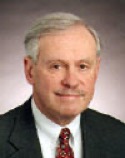
In 1968, Salins joined the urban planning faculty of Hunter College of the City University of New York, becoming chairman of the department in 1973. In 1997, Salins was appointed Provost and Vice Chancellor of Academic Affairs of the State University of New York System, a position he held until 2006, when he was appointed University Professor of Political Science at Stony Brook University, where he has been administering and teaching in its graduate public policy program.
Salins wrote and edited six books, including Assimilation, American Style, and numerous articles, monographs and opinion pieces. He has appeared frequently on radio and television in discussions of immigration, housing policy and the economic and social future of American cities, with a particular focus on New York City. Assimilation, American Style cuts across all of these policy issues, because the success of New York and most other American metropolitan areas has always depended on the successful integration of immigrants into their economic and social fabric. Salins has been an editor of the Journal of the American Planning Association and of City Journal.
Junius Scales and Richard Nickson
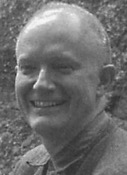
Junius served in the United States armed forces during the war. When he returned to university, he found a changed party and a changed society. The Communist Party eventually came under attack from forces within the FBI and the Congress. Junius was on the most wanted list from 1951 until his arrest in 1954 and then was on trial with appeals and retrial and further appeals until 1961. The Supreme Court decided 5-4, upholding the lower court and so he went to prison. He served 15 months of a six-year sentence and was released by President Kennedy in 1962, but never pardoned.
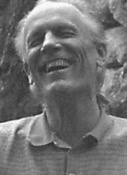
William Schack
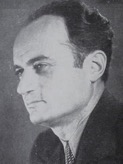
Bertram Schaffner
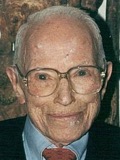
Back in New York City, Schaffner further trained at the William Alanson White Institute with which he remained associated for most of his career as a psychiatrist, teacher and adviser. He promoted mental health initiatives in the Caribbean, serving on the Expert Committee for Mental Health of the United Nations, advising the British, French and Dutch island governments in the West Indies on their mental health programs.
In his 60s Schaffner revealed that he was gay. In his psychiatric practice, he was a leader in the study of the problems of homosexual medical practitioners; he was one of the first doctors to treat AIDS patients, advocating for more humane treatment for them; from the 1980s on, he dedicated much of his professional efforts to helping AIDS patients and their health care providers. In 2001, the Journal of Gay and Lesbian Psychotherapy recognized him as a leader who has made a major impact on the treatment of homosexuals and the work of gay therapists.
Schaffner was a collector of Indian art, an interest spurred by his participation in a 1966 Brooklyn Museum trip to India, where he often returned. Schaffner was a major donor to the Brooklyn Museum and served on its Collections Committee.
Simon Schama
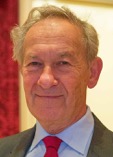
Schama’s first book, Patriots and Liberators: Revolution in the Netherlands, 1780-1813, won the Wolfson Literary Prize for History in 1977. His other books include Two Rothschilds and the Land of Israel, The Embarrassment of Riches: An Interpretation of Dutch Culture in the Golden Age, The Story of the Jews, Citizens: A Chronicle of the French Revolution, A History of Britain and The Power of Art. He has created highly successful TV series for the BBC and for PBS.
Ze’ev Schiff

He reported on military affairs in Vietnam, the Soviet Union, Cyprus and Ethiopia, and on the 1967 Six-Day war and Israel’s 1982 invasion of Lebanon. Schiff won many awards, including the Amos Lev Prize for military reporting, the Sara Reichenstein Prize for interviews, the Sokolov Journalism Prize in 1974 for his book October Earthquake: Yom Kippur 1973 and the Chaim herzog Prize in 2003 for special contributions to the State of Israel. His other books include Israel’s Lebanon War and Intifada, both with Ehud Ya’ari, and A History of the Israeli Army: 1874 to the Present.
He became a senior associate of the Carnegie Endowment for International Peace in 1984, and was a fellow at the Washington Institute for Near East Policy and a member of the board of the Institute for National Security Studies in Tel Aviv. He was chairman of the Military Writers Association, trustee of Britain’s International Institute of Strategic Studies and Brochstein Fellow at the James A. Baker III Institute for Public Policy at Rice University in Houston, Texas.
Anne Gruner Schlumberger
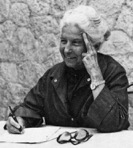
Anne Gruner Schlumberger’s first husband, Henri George Doll, joined Conrad and Marcel in 1926 and became a leader in the development of oil well logging and a key technical executive of Schlumberger Ltd. Her sisters, Dominique de Ménil and Sylvie Boissonnas, were also married to Schlumberger Ltd. executives.
Anne Gruner Schlumberger supported the arts, literature and science through many sponsorship activities, encouraging creativity in all its forms. She established the Fondation des Treilles and set up the very first children’s only library near Paris in 1965 before establishing over twenty libraries in rural areas of Greece.
Vlasta Schönová
Vlasta Schönová (1919-2001) or Vava was the third of four daughters of Solomon and Magdalena Schön. Following in her mother’s footsteps, she became an actress and began her career just before the Nazis occupied Czechoslovakia. For a while, she was able to continue acting by passing as a non-Jew. After she and her family were deported to Terezín, she performed, directed and wrote plays as a prisoner.
Theater was her passion since childhood, she writes. It invested her life with meaning and kept her alive, even in the Theresienstadt Ghetto where she was one of the only artists who was not eventually transported east for extermination. After liberation by the Soviet Army in 1945, Vava returned to Prague and resumed her career in Czech theater. After the Communist coup of 1948, she fled Czechoslovakia and settled in Israel. There she lived and worked in many different venues as the Israeli actress Nava Shean.
David Schoenbrun
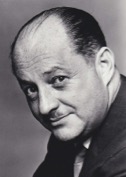
In 1947 Edward R. Murrow recruited Schoenbrun to CBS and appointed him chief Paris correspondent for CBS News. He reported the birth of the State of Israel and its war of independence in 1948. In 1961, Schoenbrun became CBS’s chief correspondent in Washington, where he reported on the Kennedy years. In 1964 he left CBS to write books and work in free-lance broadcasting, appearing nightly on Channel 11-TV (NY) and on network talk shows.
His books include As France Goes, The Three Lives of Charles de Gaulle, Vietnam: How We Got In; How To Get Out, Triumph in Paris: The Exploits of Benjamin Franklin, America Inside Out, Soldiers of the Night: The Story of the French Resistance and On and Off the Air: An Informal History of CBS News.
Schoenbrun was awarded France’s Palmes Littéraires, Croix de Guerre and Légion d’honneur with rank of Chevalier, the Overseas Press Club Award for Best Radio Reporting from Abroad (1953), Best Television Reporting from Abroad (1955), Best Book for As France Goes (1957), Best Magazine Article of the Year (1959) and the Alfred I. Dupont Award as Best Commentator of the Year (1960).
Claudio Segrè
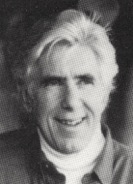
His book, Italo Balbo: A Fascist Life, won the Italian Air Force Historical Association Prize and the Marraro Prize of the Society of Italian Historical Studies. Segrè’s numerous essays, short stories, humor pieces and articles appeared in American, British, Israeli and Italian publications. His memoir, Atoms, Bombs, and Eskimo Kisses: A Memoir of Father and Son, examines what it was like to be the son of physicist Emilio Segrè, who helped develop the atom bomb and won the Nobel prize in 1959.
Emilio Segrè
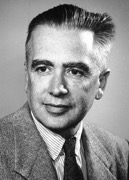
In 1938, when Mussolini passed antisemitic laws barring Jews from university positions, Segrè was on a research visit at the University of California (Berkeley); he stayed there temporarily at the Radiation Laboratory, before receiving a permanent appointment. In 1940, Segrè and his colleagues discovered astatine and plutonium-239, subsequently used to make the atom bomb.
Fermi immigrated to the United States shortly after Segrè, and their collaboration continued. During 1943-46, Segrè led the Manhattan Project’s Radioactivity Group at Los Alamos. He was a professor of physics at UC Berkeley from 1946 until 1972. In 1959, he won the Nobel Prize in physics for the discovery of the antiproton, with Owen Chamberlain.
In addition to his scientific papers, Segrè wrote a biography of Fermi, Enrico Fermi: Physicist, his autobiography A Mind Always in Motion and two volumes on the history of physics, From Falling Bodies to Radio Waves and From X-rays to Quarks. His scientific books include Nuclei & Particles, still used today, and E. Fermi Collected Papers. An avid photographer, Segrè recorded events and people in the development of modern physics. He donated his collection of photos to the American Institute of Physics, which named it the Emilio Segrè Visual Archives in his honor.
Anita Shapira
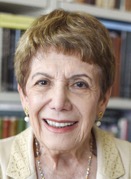
Shapira also was a member of the Planning and Budgeting Commission of the Council for Higher Education in Israel (1985-89), chaired the board of Am Oved publishing house (1987-90), was president of the Memorial Foundation for Jewish Culture (2002–08) and has been a board member of the Zalman Shazar Institute since 1988. She founded the Yitzhak Rabin Center for Israel Studies and was its first director (1996–99). She is academic co-editor of Yale University Press’s biography series “Jewish Lives” and of the Journal of Israeli History, and served on the editorial board of the Jewish Review of Books.
Shapira’s books include a biography of Zionist socialist leader Berl Katznelson, which was so widely acclaimed when it appeared as the first academic biography published in Israel that Shapira became overnight a famous scholar in Israel; Land and Power: The Zionist Resort to Force, 1881-1948 and biographies of Palmach leader Yigal Allon, of the revered writer Yosef Hayyim Brenner, who was murdered by Arab assailants at the age of 40, and of David Ben Gurion; all were also published in English. She also wrote Israel: A History, a comprehensive book on the history of Israel. She won many prizes, including the Israel Prize in 2008. She was elected to the Israeli Academy of Science in 2021.
Zeev Sharef
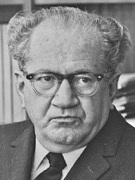
In 1947 Sharef was appointed secretary of the Situation Committee, responsible for preparing the administrative blueprint for the new Jewish state and laying the groundwork and foundations for Israel’s government institutions after the end of the British Mandate in Palestine. He organized the Independence Declaration ceremony at the Tel Aviv Museum on May 14, 1948. After independence, he served as cabinet secretary of Israel’s government until 1957 when he became Commissioner for State Revenue, reorganizing the state’s tax and revenue administration.
Sharef left the civil service in 1961 and was called back in 1964 by Prime Minister Levi Eshkol as an advisor. He was elected to the Knesset (Israel’s Parliament) in 1965 and served as Minister of Trade and Industry (1966-1969), Finance Minister (1968-1969) and Housing Minister (1970-1973). He was not re-elected to the Knesset in 1973 and lost his place in the cabinet in 1974 when Golda Meir resigned as Prime Minister. Sharef retired from political activity in 1974.
R. C. Simmons
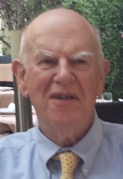
Alfred P. Sloan, Jr.

In 1916 Hyatt merged with other companies into United Motors Company, which soon became part of General Motors Corporation (GM). Sloan became vice-president of GM, operating vice-president when Pierre S. Du Pont and John J. Raskob wrested control of GM from William C. Durant in 1920, and succeeded Pierre S. du Pont as president in 1923. Sloan became chairman of the board in 1937, continued as CEO until 1946 and retired from the chairmanship in 1956.
At GM, Sloan established annual styling changes and a differentiated pricing structure for Chevrolet, Pontiac, Oldsmobile, Buick and Cadillac so they would not compete with each other. In 1919, he created GMAC, a financing arm that helped propel GM to market leadership by the early 1930s, a position GM retained for over 70 years. Under Sloan, GM became the largest industrial enterprise in the world.
In 1934, Sloan established the philanthropic Alfred P. Sloan Foundation which started the world’s first university-based executive education program, the Sloan Fellows, in 1931 at MIT. MIT opened a School of Industrial Management in 1952 to educate the “ideal manager”, the Alfred P. Sloan School of Management. In the 1940s, Sloan and Charles F. Kettering, established the Sloan Kettering Institute in New York City, now a leading biomedical research institution which became part of the Memorial Sloan Kettering Cancer Center in 1960.
Bradley F. Smith
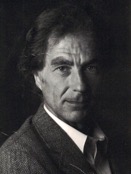
In the 1970s Smith began to write meticulously researched books which would make him a recognized scholar of World War II and intelligence, including A Nazi in the Making (1971), Reaching Judgment at Nuremberg (1977), The Shadow Warriors: OSS and the Origins of the CIA (1983) and Sharing Secrets with Stalin: How the Allies Traded Intelligence 1941-45 (1996). He was particularly skilled at finding useful documents before intelligence-related materials were widely released, especially at Stanford’s Hoover Institute, at the National Archives in Washington DC and in Britain’s National Archives at Kew.
Smith was diagnosed with Alzheimer’s disease in the mid-1990s.
Leo Spitzer
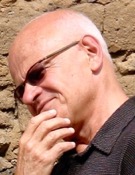
A cultural and comparative historian working in the interdisciplinary field of Memory Studies, he employs personal and familial oral histories, testimonial documents, and wide-ranging photographic and artistic resources to write about responses to colonialism and domination, Jewish refugee memory, and traumatic witnessing and its generational transmission into postmemory. His most recent book, co-authored with Marianne Hirsch, is Ghosts of Home: The Afterlife of Czernowitz in Jewish Memory. He is also the author of Lives in Between: The Experience of Marginality in a Century of Emancipation; The Creoles of Sierra Leone: Responses to Colonialism; and co-editor, with Mieke Bal and Jonathan Crewe, of Acts of Memory: Cultural Recall in the Present. Currently, with Marianne Hirsch, he is writing School Photos in Liquid Time, a book about the hidden lives and afterlives of school-class pictures. He is also working on a series of vignettes, some autobiographical, for a book about the Americanization of Jewish refugee children emigrating from Latin America to the United States in the decade of the 1950s.
Rosemary Stevens

Stevens was a Guggenheim Fellow in 1983. In 1997, she received an Investigator Award from the Robert Wood Johnson Foundation for her work on specialization in American medicine. She also received the William B. Graham Prize for Health Services Research and is a fellow of the American Academy of Arts and Sciences. In 2011 she gave the American Osler Society’s John P. Govern Award Lecture.
Besides In Sickness and In Wealth: American Hospitals in the Twentieth Century, her books include The Public-Private Health Care State: Essays on the History of American Health Care Policy and “Medical Specialization as American Health Policy: Interweaving Public and Private Roles” in History and Health Policy in the United States: Putting the Past Back In which she co-edited with Charles E. Rosenberg and Lawton R. Burns.
Jesse Stiller

His books include George S. Messersmith: Diplomat of Democracy which shed new light on US relations with Nazi Germany, wartime Cuba and Mexico, and Argentina under Juan Perón, and a collection of essays, Banking Modern America, which traced aspects of the birth and development of the national banking system in the United States. He also published articles and reviews in dozens of books and academic journals.
Stiller served as a command historian for the US Department of the Army (1985-89) before becoming the historian and advisor for executive communications at the US Department of the Treasury’s Office of the Comptroller of the Currency in 1989. In that capacity he wrote policy papers, press articles, congressional testimony, and speeches for his own delivery and for the office’s senior executives, contributing at the same time to the formulation of its regulatory policy.
Since leaving government service in 2017, Stiller has continued to write and teach. He lectures extensively in community settings and on ocean cruise ships, where his lectures are often cited for their insight and liveliness.
Mark A. Stoler
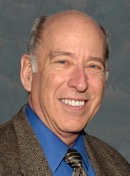
Stoler’s areas of special expertise are US diplomatic and military history and World War II. Included among his many publications are Allies and Adversaries: the Joint Chiefs of Staff, the Grand Alliance, and US Strategy in World War II (2000) which won the Distinguished Book Award of the Society for Military History in 2002, The Politics of the Second Front: American Military Planning and Diplomacy in Coalition Warfare, 1941-1943 (1977), George C. Marshall: Soldier-Statesman of the American Century (1989), and Allies in War: Britain and America against the Axis Powers, 1940-1945 (2005). He also co-authored Explorations in American History (1987) with Marshall True, Major Problems in the History of World War II (2003) with Melanie Gustafson, and Debating Franklin D. Roosevelt’s Foreign Policies (2005) with Justus Doenecke.
Stoler’s scholarship earned him the University Scholar Award at UVM (1993) and his equally distinguished teaching earned him the Dean’s Lecture Award (1992), the George V. Kidder Outstanding Faculty Award (1984), and the Kroepsch-Maurice Excellence in Teaching Award (2006). In addition to teaching at UVM, Stoler has served as a visiting professor at the US Military Academy at West Point, the US Naval War College, the University of Haifa in Israel, the US Military History Institute, Williams College, and Washington & Lee University. He has also produced two audio/DVD courses for The Teaching Company and served as editor of volumes 6 and 7 of The Papers of George Catlett Marshall (2013 and 2016). Most recently he co-edited with Molly Michelmore The United States in World War II: A Documentary History (2018). He is former president of the Society for Historians of American Foreign Relations (2004) and a former trustee of the Society for Military History.
Dietrich Stoltzenberg
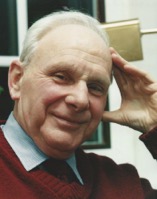
He subsequently worked for the chemical industry, among other positions for the firm Phoenix-Gummiwerke and for Unilever in research, development, and production. Since his retirement in 1984 he has worked for various businesses as a consultant on issues of environmental protection and toxicology. As a member of the history of chemistry interest group of the German Chemical Society he has published several articles on the history of twentieth-century chemistry. His biography of Fritz Haber, published in German in 1994, was made a “science book of the year” by the magazine Bild der Wissenschaft and in 1997, Stoltzenberg received the Prize of the German Chemical Society for Writers.
Susan Rubin Suleiman
Born in Budapest, Susan Rubin Suleiman emigrated to the United States as a child with her parents. She earned a B.A. from Barnard College and a Ph.D. from Harvard University, where she has been on the faculty since 1981, now as the C. Douglas Dillon Professor of the Civilization of France and Professor of Comparative Literature. Suleiman has written widely on contemporary literature and culture, and has published poetry and autobiographical works. Budapest Diary (1996) is her memoir about returning to her native city after many years, where she speaks Hungarian "like a native, but with an accent."
Her other books include Crises of Memory and the Second World War (2006), Risking Who One Is: Encounters with Contemporary Art and Literature (1994), Subversive Intent: Gender, Politics, and the Avant-Garde (1990) and French Global: A New Approach to Literary History (2010), co-edited with Christie McDonald.
Suleiman’s many honors include the Radcliffe Medal for Distinguished Achievement, and France’s Palmes Académiques. She has held Fellowships from the Guggenheim and Rockefeller Foundations, the National Endowment for the Humanities, the Radcliffe Institute, and the U.S. Holocaust Memorial Museum. Suleiman lives in Belmont, Massachusetts.
Christopher Sykes
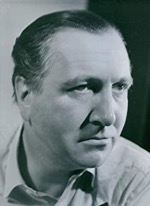
Sykes then travelled to Persia and Afghanistan (1933-34), then an almost unexplored area. Back in the UK, Sykes wrote a biography of the German Persianist Wilhelm Wassmus (1936). He was commissioned in 1939 as a reserve officer in the Green Howards regiment’s 7th Battalion. In June 1940, Sykes joined SO1 (later Special Operations Executive). In October 1941, he went to Tehran as Deputy Director of Special Propaganda under diplomatic cover after the Anglo-Soviet invasion of Iran; in November 1942, he transferred to Cairo, where he wrote a light novel, High Minded Murder. Back in the UK in May 1943, he volunteered for the Special Air Service (SAS) and undertook very dangerous work with the French Resistance. His experiences were depicted in Four Studies in Loyalty.
After 1945 Sykes worked for many years in BBC Radio. He wrote frequently for British and American periodicals, including The New Republic, The Spectator, Books and Bookmen, The Observer and the English Review Magazine.
Sykes’ many books include biographies of Orde Wingate (1959), his friend Evelyn Waugh (1975), Lady Astor, Adam von Trott zu Solz, a history of the British Mandate of Palestine, Crossroads to Israel (1965) and several novels.
Joan Templeton
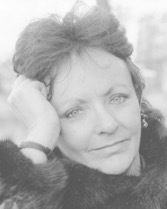
(photo: Maurice Lévy)
Dorothy Thompson
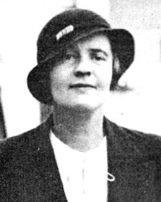
In 1934 she became the first correspondent to be expelled from Berlin on the orders of Adolf Hitler: she was the loudest and strongest voice in American journalism against the menace of the Nazis. Her thrice-weekly column, “On the Record,” was syndicated to hundreds of newspapers; she wrote a monthly essay for the Ladies’ Home Journal and broadcast weekly, sometimes daily, on news topics over the NBC radio network. Time magazine in 1939 called her the most influential woman in America after Eleanor Roosevelt.
Her career declined after World War II, when she argued for a “humane” peace with the defeated Germans and, later, took up the cause of the Palestinian Arabs in opposition to the State of Israel. Divorced from Lewis in 1942, she enjoyed a happy (and lusty) final marriage with the Czech painter Maxim Kopf (1892-1958). She died in Portugal in 1961 and left instructions for her epitaph: “Dorothy Thompson Kopf — Writer.” She was unquestionably the preeminent woman journalist of her era — perhaps of all time in the United States. Peter Kurth wrote her biography, American Cassandra: The Life of Dorothy Thompson.
Nikolaas Tinbergen
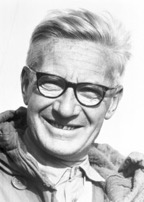
A keen observer and gifted experimentalist, Tinbergen quickly gained fame for his detailed accounts of the behavior of a seagull colony in the dunes along the Dutch North Sea and for elucidating the sensory mechanisms of mating behavior in the stickleback. In 1940, Tinbergen assumed a professorship at Leiden University, but resigned to protest the nazification of the university and was imprisoned in a camp for Dutch intellectuals and artists until 1944. After World War II, Tinbergen became a professor of animal behavior at Merton College, Oxford University and remained there until his retirement in 1974.
In 1951, he published the first textbook on ethology, The Study of Instinct, which introduced the English-speaking world to the largely German-speaking literature on the new discipline. His ingenious, life-long friendship and collaboration with Austrian biologist Konrad Lorenz proved instrumental for the development of ethology. Tinbergen’s “four questions” (mechanism, development, adaptation, and evolution) are still considered basic cornerstones in modern biology, and together provide for a complete understanding of natural behavior. Together with Konrad Lorenz and Karl von Frisch, Tinbergen received the 1973 Nobel Prize in Physiology or Medicine “for their discoveries concerning organization and elicitation of individual and social behaviour patterns”. He had five children with his wife Elisabeth Rutten (1912-1990), and was a life-long atheist.
Melvin Urofsky
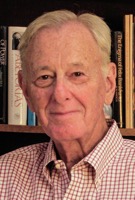
While teaching at Ohio State University from 1964 until 1967, Urofsky began a collaboration with David W. Levy that resulted in the publication of seven volumes of Louis D. Brandeis’ letters. Urofsky then taught at SUNY Albany (1967-1974) before joining Virginia Commonwealth University (VCU) as chair of its History Department in 1974. His work on Brandeis inspired Urofsky to enter law school at age 40: in 1983, he earned a J.D. from the University of Virginia, Charlottesville, while teaching at VCU. He is Professor Emeritus of History at VCU and Adjunct Professor at the School of Public Affairs at American University in Washington.
His books include Supreme Decisions: Great Constitutional Cases and Their Impact, American Zionism from Herzl to the Holocaust, which won the Jewish Book Council’s Morris J. Kaplun Award in 1976, and Louis D. Brandeis: A Life which won the University of Louisville Louis D. Brandeis School of Law’s 2010 Brandeis Medal. Urofsky has been a Rich Fellow at Oxford University’s Center for Jewish Studies, a Fulbright Lecturer at the University of New South Wales Law School in Sydney, Australia, a Rockefeller Foundation Fellow at the Bellagio Center in Italy, and a visiting scholar at Ben-Gurion University in Israel.
Claudine Vegh
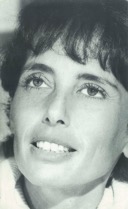
Alexandra Villard de Borchgrave
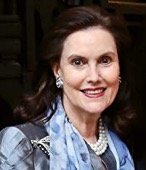
As a photographer, she has taken portraits of notables including George Bush, Henry Kissinger, and Anwar Sadat. Her work has appeared on the cover of Newsweek and other major international publications.
She co-authored the biography of her great-grandfather, railroad magnate and financier Henry Villard, Villard: The Life and Times of an American Titan, and wrote five books, Healing Light, Heavenly Order, Beloved Spirit, To Catch A Thought and Love and Wisdom. She founded the Light of Healing Hope Foundation in 2010 whose mission is to bring comfort and healing to those in need; the foundation has delivered over 34,000 gifts to hospitals and hospices nationwide.
Judith Wallerstein
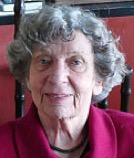
Wallerstein taught as a senior lecturer from 1966 to 1991 at UC-Berkeley and lectured at Harvard, Cornell, Stanford, Yale, the Hebrew University and Pahlavi University Medical School. She was a consultant for the Advisory Commission on Family Law to the California Senate Subcommittee on Administrative Justice, the Commission on Law and Mental Health, State Bar of California, and the California Senate Task Force on Family Equity. In 1971, she started the California Children of Divorce Study which followed 131 children ages 3 to 18 from 60 divorced families in Marin County, California for 25 years. In 1980, she founded the Center for the Family in Transition in Madera, California to provide counseling and education for divorcing couples and their children and to conduct research on divorce and the family.
Wallerstein wrote four best-selling books with Sandra Blakeslee, three about children and divorce (Second Chances, The Unexpected Legacy of Divorce, and What About the Kids) and The Good Marriage: How and Why Love Lasts which first appeared in 1995, the 48th year of her 65-year marriage to Robert Wallerstein, a psychoanalyst who directed research at the Menninger Foundation and was president of the International Psychoanalytical Association.
Wallerstein’s many awards include the Distinguished Teaching Award from the University of California, the Dale Richmond Award of the American Academy of Pediatrics and the San Francisco Foundation’s Koshland Award in Social Welfare. Wallerstein has appeared multiple times on national television and radio, including the Today Show, Good Morning America, Diane Rehm, and the Oprah Winfrey show.
Fredric Warburg
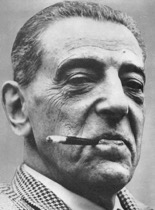
Warburg stumbled into publishing at Routledge & Sons where he spent 13 years. In 1936, he and a partner acquired the publishing firm of Martin Secker. Renamed Secker & Warburg, it became known as anti-fascist and anti-communist, publishing André Gide’s Back from the USSR and George Orwell’s Homage to Catalonia. From then on Secker & Warburg published all of Orwell’s books and Orwell and Warburg became intimate friends. Warburg published some 2,000 books by several hundred authors, including Orwell’s Animal Farm and 1984, works by H. G. Wells, Thomas Mann, Franz Kafka, Simone de Beauvoir, Colette, Alberto Moravia, Günter Grass, Pierre Boulle’s The Bridge over the River Kwai and William Shirer’s The Rise and Fall of the Third Reich.
T. H. Watkins
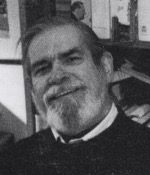
In the 1960s he worked for American West magazine, where he met the novelist and conservationist Wallace Stegner. In 1969, Watkins became editor of the magazine. In 1976 Mr. Watkins moved to New York, where he spent six years as an editor at American Heritage. In 1982 he became editor of the Wilderness Society’s Wilderness magazine in Washington DC, which he went on to lead for 15 years. In 1997, after Wilderness cut back publication to one issue per year, he moved to Bozeman, Montana where he became the Wallace Stegner distinguished professor of Western American studies at Montana State University.
Watkins was a prolific writer on environmental issues: he authored 28 books, first about San Francisco’s history and architecture and later Righteous Pilgrim: The Life and Times of Harold L. Ickes, 1874-1952, a 1990 finalist for the National Book Award, The Lands No One Knows: America and the Public Domain and The Hungry Years: A Narrative History of the Great Depression. Watkins wrote hundreds of magazine articles for publications such as the Washington Post, the New York Times, Condé Nast Traveler and National Geographic.
Joseph Wechsberg
Joseph Wechsberg (1907-1983) was born to Jewish parents in Ostrava, Moravia, a part of the Austro-Hungarian Empire. His grandfather had been a prosperous banker, but the family assets were lost in World War I. Wechsberg attended Prague University Law School, Vienna’s State Academy of Music, and the Sorbonne. A lawyer for a short while, he worked as a musician on ocean liners and played the violin in Paris nightclubs. In Prague, he became a reporter for the Prager Tagblatt. In 1938 he was a lieutenant in the Czechoslovak army commanding a machine gun company on the Polish frontier and was sent with his wife to the United States to discuss the Sudeten crisis. Both requested asylum after World War II broke out. In 1939, Wechsberg knew only a few hundred words in English, but decided he would someday write for The New Yorker. In 1943, he was drafted into the US Army and sent to Europe as a technical sergeant in psychological warfare. His account of getting back to Ostrava was the first of over one hundred pieces for The New Yorker over three decades — profiles of Artur Rubinstein, Isaac Stern, George Szell, of merchant bankers and of great French restaurateurs, and letters from Berlin, Karlsbad, Bonn, Vienna, Trieste, Budapest, Belgrade, Ankara, Bucharest, Warsaw, Athens, and Baghdad. He also contributed hundreds of articles to magazines such as Gourmet, Esquire, Playboy, The Atlantic and The Saturday Evening Post and wrote features on cuisine and travel throughout Europe.
Russell F. Weigley
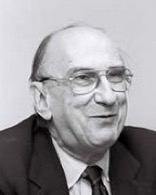
His research and teaching interests centered on American and world military history, World War II, and the American Civil War. One of Weigley’s major contributions to research is his hypothesis of a specifically American Way of War, i.e. an approach to strategy and military operations distinct to the United States because of cultural and historical constraints.
Weigley was awarded a John Simon Guggenheim Memorial Foundation Fellowship (1969-70), the Athenaeum Literary Award (1983) and the Samuel Eliot Morison Prize of the American Military Institute (1989). He served as President of the Historical Society of Pennsylvania and the American Military Institute. He was an elected member of the American Philosophical Society and the Society of American Historians. He was the eighth holder of the United States Marine Corps Command and Staff College Foundation Chair of Military Affairs.
His books include The Age of Battles: The Quest for Decisive Warfare from Breitenfeld to Waterloo which won the Society for Military History’s Distinguished Book Award, A Great Civil War: A Military and Political History, 1861–1865 which received the Lincoln Prize, Eisenhower’s Lieutenants: The Campaign of France and Germany, 1944-1945 which was nominated for the American Book Award in history in 1983, and The American Way of War: A History of United States Military Strategy and Policy.
Bernard A. Weisberger

Weisberger’s first book, Reporters for the Union (1953), expanded upon his dissertation; his second, They Gathered at the River (1958) offered a history of evangelical revivals from the 18th through the mid-20th century. His groundbreaking 1959 essay, “The Dark and Bloody Ground of Reconstruction Historiography” earned the Charles Ramsdell Prize for best article published that year in the Journal of Southern History. His increasing interest in broader audiences beyond academia led him to a long association with American Heritage magazine, and to retirement from teaching in the early 1970s.
Weisberger’s other books include The American Heritage History of the American People (1971); The Dream Maker: William C. Durant, Founder of General Motors (1979); Cold War, Cold Peace (1984); The Statue of Liberty (1985); The LaFollettes of Wisconsin: Love and Politics in Progressive America (1994); America Afire (2000); and When Chicago Ruled Baseball: The Cubs-White Sox World Series of 1906 (2006). A lifelong advocate for popular history writing and historically-informed journalism, Weisberger wrote “In the News” from 1989 to 1999, a regular column in American Heritage examining current events in light of historical antecedents. He collaborated with documentary filmmaker Ken Burns on projects including The Statue of Liberty (1985) and The Congress (1988), and with television journalist Bill Moyers on projects including A Walk Through the 20th Century with Bill Moyers (1984).
Benno Weiser Varon
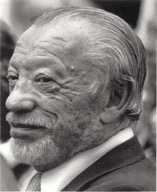
Victor Weisskopf
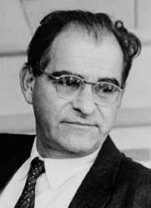
Weisskopf fled the Nazis in the fall of 1937 and became an assistant professor at the University of Rochester. From 1943 to 1946 Weisskopf was deputy chairman of the theoretical division of the Manhattan Project in Los Alamos, under Hans Bethe. In 1945, he joined the MIT physics department; he was named Institute Professor in 1965, a position he held until he retired in 1974.
Weisskopf played a major role in particle physics in the US and in Europe: he was director general of CERN (Conseil Européen de Recherches Nucléaires) in Geneva (1961-65), and chaired the High Energy Physics Advisory Panel of the US Atomic Energy Commission (1967-73). A member of the American Academy of Arts and Sciences, American Physical Society, Pontifical Academy of Sciences, National Academy of Sciences, Academy of Arts and Sciences, and of many international organizations including French, Austrian, Danish, Bavarian, Scottish, Spanish, and Russian academies, Weisskopf received numerous awards for his work in quantum electrodynamics, in nuclear and elementary particle physics and as an advocate of nuclear disarmament, open exchanges of information among scientists of all nations, and individual freedom. He published over two hundred papers, and several books including in 1991 his autobiography, The Joy of Insight: Passions of a Physicist.
Chaim Weizmann
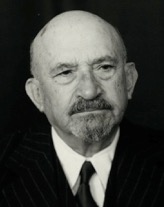
Considered a master negotiator, Weizmann convinced the British government to issue the Balfour Declaration just before the British conquered Palestine in November 1917. The document, in which “His Majesty’s Government view with favour the establishment in Palestine of a national home for the Jewish people,” was a turning point in the history of the Jewish people and made Weizmann the figure most identified with the Zionist movement. Weizmann achieved significant breakthroughs in organic chemistry, discovering in 1916 in Manchester a process to synthesize acetone (used to manufacture munitions), and later established leading academic and research institutions in Israel (the Hebrew University in Jerusalem and the Sieff Research Institute in Rehovot, now the Weizmann Institute of Science). He viewed Zionism as fulfillment of political and spiritual independence for the Jewish people and considered science a noble activity, but also the economic basis for a modern economy.
Seeking friendly relations between Zionism and Arab nationalism, Weizmann met with Emir Faisal in 1918. During World War II, he recruited the Jewish home front in Palestine for the British war effort against Germany and fought for the establishment of the Jewish Brigade. He worked to establish democratic institutions in the Zionist movement and for the integration of the State of Israel into the international community.
When the State of Israel was established, Weizmann was appointed President of the Provisional State Council. In February 1949, after the first Knesset met, Weizmann was elected as the first President of the State of Israel. He served in this position, to which he was re-elected in 1951, until his death in November 1952 in Rehovot, Israel.
Vera Weizmann
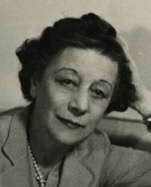
Benjamin Welles
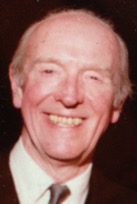
Welles returned to the New York Times in 1946 and spent 17 years as a foreign correspondent in China, London and Madrid. He covered the Hungarian uprising and the Algerian war against the French. His first book, Spain: The Gentle Anarchy, a biography of Franco, appeared in 1965. In 1963 he returned to Washington to cover national security, and retired in 1972, when he began research on a biography of his father, Sumner Welles: FDR’s Global Strategist, published in 1997, in which he dealt directly with his father’s bisexuality and alcoholism.
Welles came out of retirement in 1981 to serve as deputy assistant secretary of defense for public affairs in the Reagan administration.
Simon Wiesenthal
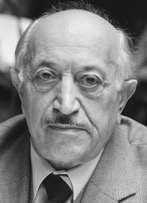
From Janowska Wiesenthal was sent into forced labor at the German Eastern Railways. In 1943 he escaped, but was recaptured; he attempted suicide twice and was sent back to Janowska. After the camp was liquidated the retreating Germans force-marched the less than three dozen remaining inmates (out of more than 100,000) from camp to camp, first to Plaszow, then to Gross-Rosen, to Buchenwald and finally to Mauthausen, Austria where Wiesenthal, having barely survived these hardships, was liberated in May 1945 by the US Army. At 6 feet tall he weighed less than 100 lbs but recovered and was reunited with Cyla at the end of 1945. Like millions of Jews and other ethnic groups murdered by the Nazi regime, dozens of members of his and his wife’s families had died in the camps.
Wiesenthal assisted the War Crimes Section of the US Army and later worked for the US Army’s Office of Strategic Services (OSS) and Counter-Intelligence Corps and headed the Jewish Central Committee of the US Zone of Austria. He also worked for Bricha, a Zionist organization for clandestine immigration to Mandate Palestine. Wiesenthal then dedicated his life to tracking down Nazi war criminals and having them prosecuted. He established the Jewish Documentation Center in Linz (1947-54) where Wiesenthal was vice-president of the local Jewish Community, and worked for the AJDC (Joint Distribution Committee) and ORT (Organization for Rehabilitation through Training) in nearby refugee camps reopened in the 1950s for Jewish and non-Jewish refugees from the Soviet Bloc. Wiesenthal moved his office to Vienna in 1961. In 1953, Wiesenthal learned that Adolf Eichmann, coordinator of the “Final Solution”, was in Argentina and forwarded this information to the Israeli consulate in Vienna. Israel’s intelligence service, the Mossad, captured Eichmann in 1960 in Buenos Aires and brought him to Israel for trial. Found guilty, Eichmann was executed on June 1, 1962.
Wiesenthal’s investigations also led to the capture of other Nazi war criminals, such as Franz Stangl, commandant of the Treblinka and Sobibor extermination camps, Gestapo member Karl Silberbauer who arrested Anne Frank in Amsterdam and Hermine Braunsteiner, a notorious camp guard of the Ravensbrück and Majdanek death camps. Wiesenthal’s house was firebombed in 1982, but no one was injured. He published several books, including The Murderers Among Us: The Simon Wiesenthal Memoirs in 1967, The Sunflower: On the Possibilities and Limits of Forgiveness in 1969 and another memoir, Justice Not Vengeance: Recollections in 1989.
Wiesenthal received many awards and accolades, including the US Congressional Gold Medal of Honor, the Presidential Medal of Freedom, an Honorary Knighthood of the British Empire, the French Legion of Honor, the Dutch Erasmus Prize, the Dutch and Luxembourg Medals of Freedom and the United Nations League for the Help of Refugees Award. His work is recognized for continuing to shed light on the horrors of the Holocaust, for calling on governmental intervention in the capture of war criminals. Wiesenthal is remembered as a driven, at times a sole, investigative force. He helped expose Odessa, the organizations which helped former Nazis escape to South America and his work, including his efforts to find prosecution witnesses, is said to have helped bring 1,100 former Nazis to trial.
The Simon Wiesenthal Center, founded in November 1977 in Los Angeles, is an international center for Holocaust Remembrance, defense of human rights and the Jewish people. The Vienna Wiesenthal Institute for Holocaust Research, which contains his archive, opened in 2017.
Richard Willstätter
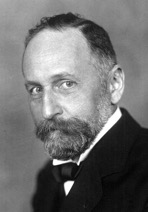
Asked in 1915 by his friend Fritz Haber to help develop poison gasses, Willstätter refused but worked on protection, developing an effective filter for which he received the Iron Cross. In 1916 he returned to the University of Munich as successor to his mentor, von Baeyer, and investigated the mechanisms of enzyme reactions.
In 1924, Willstätter retired (at age 52) to protest the University’s growing antisemitism and continued his research at his Munich home. In 1939 Willstätter emigrated to Switzerland and spent the last three years of his life near Locarno writing his autobiography Aus meinem Leben, which appeared in German in 1949 and was translated into English in 1965 as From My Life.
Nelly Wilson
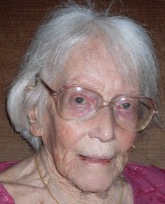
Wilson’s longstanding interest in the significance of the Dreyfus Affair and in Charles Péguy’s illuminating reflections on Bernard Lazare’s crucial role in the Affair inspired her book on the subject. Published by Cambridge University Press in 1978, the book was awarded the Jewish Chronicle non-fiction prize. It was followed by a slightly expanded French edition (Albin Michel, 1985). Since her retirement from teaching, she has lectured and written widely on the subject and on other related topics.
George Wise
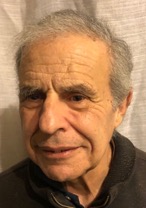
Robert S. Wistrich
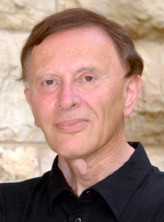
During 1999-2001, Wistrich was one of six scholars on the International Catholic-Jewish Historical Commission examining the wartime record of Pope Pius XII. He also served as rapporteur on anti-Semitism and related issues for the US State Department, the Organization for Security and Cooperation in Europe, the Council of Europe, the UN Commission on Antisemitism and Human Rights, and the Human Rights Commission in Geneva.
Among his books, Socialism and the Jews won the American Jewish Committee award, The Jews of Vienna in the Age of Franz Joseph won the Austrian State Prize in History and Israel’s Wiznitzer Prize for best book on Jewish history in 1989 and Antisemitism: The Longest Hatred won the H.H. Wingate Prize for nonfiction in the UK.
Linnie Marsh Wolfe
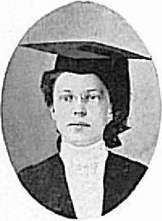
While working as a librarian, Wolfe became interested in the work of naturalist and author John Muir (1838-1914). She organized trips for schoolchildren to Muir’s home, spoke about him on the radio, and became secretary of the John Muir Association. Wolfe was asked to edit Muir’s journals and notes that had not yet been published: that became John of the Mountains: The Unpublished Journals of John Muir, published by Knopf in 1938, after which Alfred A. Knopf, Sr. asked Wolfe to write a biography of Muir; the result was Son of the Wilderness: The Life of John Muir, published by Knopf in 1945, which won the 1946 Pulitzer Prize for Biography or Autobiography.
Charlotte Wolff
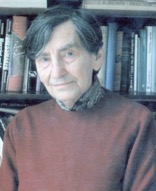
In Paris and the artists’ colony of Sanary, Wolff met an international circle of artists and writers including Maria and Aldous Huxley, Thomas and Heinrich Mann, and Man Ray, who photographed her in 1935. Since her medical degree was not recognized in France and she feared a Nazi invasion of France, Wolff travelled to England in 1936. She became a permanent resident in 1937, with permission to practice psychotherapy but not medicine. At first, she read the hands of Maria Huxley’s friends to earn her living, but soon found work as a researcher and was re-instated as a physician in 1952. She maintained her interest in sexology and published the books Love Between Women, Bisexuality, the novel An Older Love, and the biography Magnus Hirschfeld: Portrait of a Pioneer in Sexology. Before Hindsight, she wrote a shorter memoir titled On The Way To Myself. She died in London, shortly before her eighty-ninth birthday.
Helen Wright
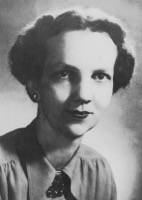
In 1943, she became a freelance author and editor. Her best known works include, Explorer of the Universe: A Biography of George Ellery Hale, Sweeper of the Sky: The Life of Maria Mitchell (America’s first woman astronomer) and Palomar, the World’s Largest Telescope. She also wrote and edited many books about the history and methodology of a broad spectrum of sciences, among them mathematics, physics, anthropology and archeology. Wright was a member of the American Astronomical Society, the History of Science Society, and the International Astronomical Union. Wright was also interested in stone carving.
David Wyman
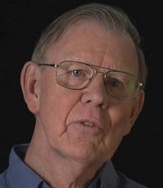
Wyman first examined the response to Nazism in Paper Walls: America and the Refugee Crisis, 1938-1941 published in 1968. It took Wyman 15 years to research and write its sequel, The Abandonment of the Jews: America and the Holocaust, 1941-1945 which appeared in 1984, rose to the New York Times best-seller list and won the Bernath Prize of the Society for Historians of American Foreign Relations, the Saloutos Award of the Immigration History Society, the Anisfield-Wolf Award, and the National Jewish Book Award, among others. The book went through seven hardcover printings and multiple paperback editions, and was translated into German, French, Hebrew, and Polish, selling more than 150,000 copies worldwide.
The David S. Wyman Institute for Holocaust Studies was founded in 2003 to promote education and research on the response to the Holocaust. Wyman was also the coauthor, with Rafael Medoff, founding director of the David S. Wyman Institute of A Race Against Death: Peter Bergson, America, and the Holocaust; editor of America and the Holocaust (thirteen volumes of the documents used in The Abandonment of the Jews); and editor of The World Reacts to the Holocaust. Most recently, he contributed a chapter to Dr. Medoff’s Too Little and Almost Too Late: The War Refugee Board and America’s Response to the Holocaust.
Hiltgunt Zassenhaus
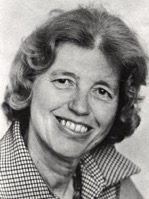
Assigned by the Department of Justice to interpret for and watch Norwegian priests visiting political prisoners, Zassenhaus instead began smuggling food, medicine, and writing materials to the prisoners, protected by the belief of the prison authorities that given her position, she was also informing the Gestapo. At the end of the war, the prisoners were moved to various prisons all over Germany; Zassenhaus created her own records to track some 1,200 Scandinavian prisoners in 52 prisons across Germany. Her records, passed to the Red Cross after Zassenhaus learned that all political prisoners were to be killed on “Day X”, helped save the lives of these prisoners who were evacuated to Scandinavia in 1945.
In 1947 Zassenhaus was smuggled into Denmark in a fish truck even though Germans were prohibited from entering the country. The Danish parliament later legitimized her immigration. She continued her medical studies at the University of Bergen, and graduated as a physician from the University of Copenhagen. She emigrated to Baltimore in 1952, where she completed her internship and residency at City Hospital and opened her medical office in 1954, practicing as a physician thereafter.
Zassenhaus is the only German decorated with the Royal Norwegian Order of St. Olav (1963) for her activities during World War II. She also received the Medal of Honor from the Norwegian and Danish Red Crosses (1948), the Danish Order of the Dannebrog (1964), the German Bundesverdienstkreuz (1969), and the British Cross of the Order of Merit. In 1974, she was nominated for the Nobel Peace Prize by two members of the Norwegian Parliament who had been prisoners of war in Nazi Germany.
Zassenhaus wrote about her experiences during the war in a memoir, Walls, published in English in 1974.
John van der Zee
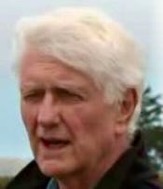
Van der Zee is the author of four novels and nine books of nonfiction, including The Gate: The True Story of The Design and Construction of The Golden Gate Bridge, which is considered the defining work on the subject. His work has also appeared in The New York Times, Los Angeles Times, San Francisco Chronicle, San Francisco Examiner, Town & Country, Zyzziva and salon.com.
His broadcast appearances include the Today Show, NBC, Building Big on PBS, American Experience “The Golden Gate Bridge” PBS, New York Times Forum, NPR’s “All Things Considered”, Public Radio International and Voice of America. His lectures include the Trent R. Dames Lecture for the Huntington Fund for the Heritage of Civil Engineering, and “The Golden Gate Bridge and its Forgotten Engineer” at the Commonwealth Club of California. (photo: The American Experience)
Zbyněk Zeman

The 1968 Prague Spring spurred Zeman to leave academia for a few years to join Amnesty International where, as first director of its research department, he chronicled human rights abuses more systematically than ever before.
Zeman’s books include The Break-up of the Habsburg Empire, 1914-18 (1961), Nazi Propaganda (1964), The Merchant of Revolution: The Life of Alexander Israel Helpland (Parvus) 1867-1924 (1965), Prague Spring: A Report On Czechoslovakia 1968 (1969), A Diplomatic History of the First World War (1971), The Masaryks: The Making of Czechoslovakia (1976), The Making and Breaking of Communist Europe (1991) and The Life of Edvard Beneš, 1884-1948 (1997).
After the fall of communism in 1989, Zeman returned to Prague where he taught at the university and lived until his death.
Walter Ziffer
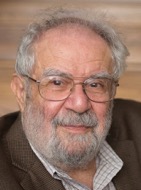
Seeking a more rewarding life, Ziffer earned two master’s degrees, in New Testament and Greek, at Oberlin in 1963 and became a Christian minister. He taught and preached in Ohio, France, Washington DC and Belgium. In 1971, he earned a doctorate in theology from the University of Strasbourg, France. Ziffer directed the Accueil Fraternel language center for missionaries in Le Chambon-sur-Lignon, France. He taught at the Faculté de Théologie Protestante in Montpellier, France; the Inter/Met Theological Seminary in Washington DC; the University of Maine; the University of North Carolina Asheville; and Mars Hill University in Mars Hill, NC.
In 1987, Ziffer returned to Judaism, and he now considers himself a Jewish secular humanist. Besides his memoir Confronting the Silence, he has published two books, The Teaching of Disdain and The Birth of Christianity from the Matrix of Judaism.
Susan Zuccotti
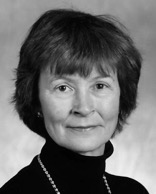
Dr. Zuccotti is the author of The Italians and the Holocaust: Persecution, Rescue, and Survival which received the National Jewish Book Award for Holocaust Studies in the United States and the Premio Acqui Storia-Primo Lavoro in Italy, The Holocaust, the French, and the Jews, Under His Very Windows: The Vatican and the Holocaust in Italy which received the National Jewish Book Award for Jewish-Christian Relations and the Sybil Halpern Milton Prize of the German Studies Association, Holocaust Odysseys: The Jews of Saint Martin Vésubie and Their Flight through France and Italy, 1939-1945 and of a biography of a French Capuchin priest who, working closely with Jewish friends and associates, rescued thousands of Jews in Marseille and Rome during the Holocaust, titled Père Marie-Benoît and Jewish Rescue. She has also published many articles and reviews in academic journals.
Friderike Zweig
Friderike Zweig is one of the most accomplished 20th century women to have written memoirs of their men. Born Friderike Maria Burger in Vienna on December 4, 1882, she was a teacher, translator, journalist, novelist and political activist at a time when most Viennese women didn’t finish high school. Friderike was married to Felix von Winternitz and mother of two daughters when she began to share a household with Stefan Zweig during the first world war.
The Winternitzes divorced and in 1920, Friderike married Stefan Zweig, then the most widely-translated writer in the world. They established a home in Salzburg that admirers called “the Villa in Europe” where Friderike served as Zweig’s researcher and editor as well as marital partner. Their strong and unconventional relationship survived the chaotic aftermath of the first world war in Austria; the Nazi occupation of Europe; their divorce in 1938; Stefan’s remarriage to Lotte Altmann, whom Friderike had hired as her husband’s secretary; and their separate paths to the Americas.
Their correspondence continued until the day before Zweig’s death by suicide in 1942. Friderike lived almost three decades longer in New York and Connecticut where she devoted herself to literary projects and social activism.
Stefan Zweig
Stefan Zweig (1881-1942) was the most widely read German-language author of the twentieth century. Zweig was a secular Jew, a Pan-European and a pacifist. He was born in Vienna on November 28, 1881 and studied there and in Berlin. As a young man, he translated French poetry by Verlaine, Baudelaire, and Verhaeren into German. He quickly branched out into journalism, fiction, biography and writing for the theater. His plays, including the anti-war Jeremiah, were produced throughout Europe. His books were eventually translated into over 50 languages. Today, he is best known for his many works of non-fiction. They include the classic memoir The World of Yesterday and many biographical essays on famous writers and thinkers such as Erasmus, Tolstoy, Balzac, Stendhal, Nietzsche, Dostoevsky, Dickens, Freud and Mesmer. He lived in Salzburg with his first wife Friderike until 1933, when his books were burned by the Nazis. In 1934, he emigrated to England where he continued writing and met his second wife Lotte Altmann. In 1941, the couple moved to Brazil where they committed suicide in 1942.




